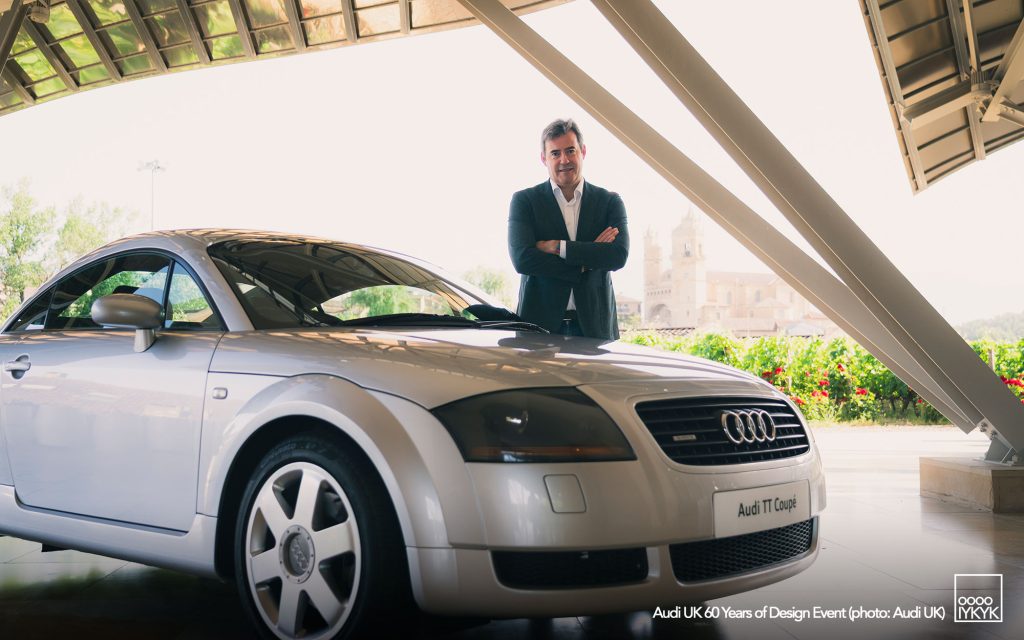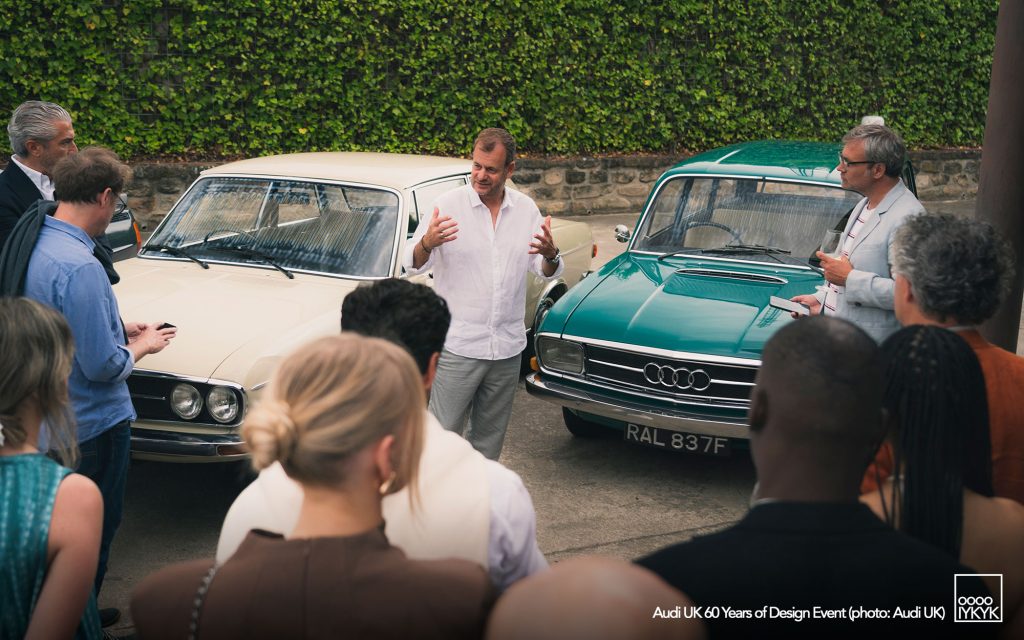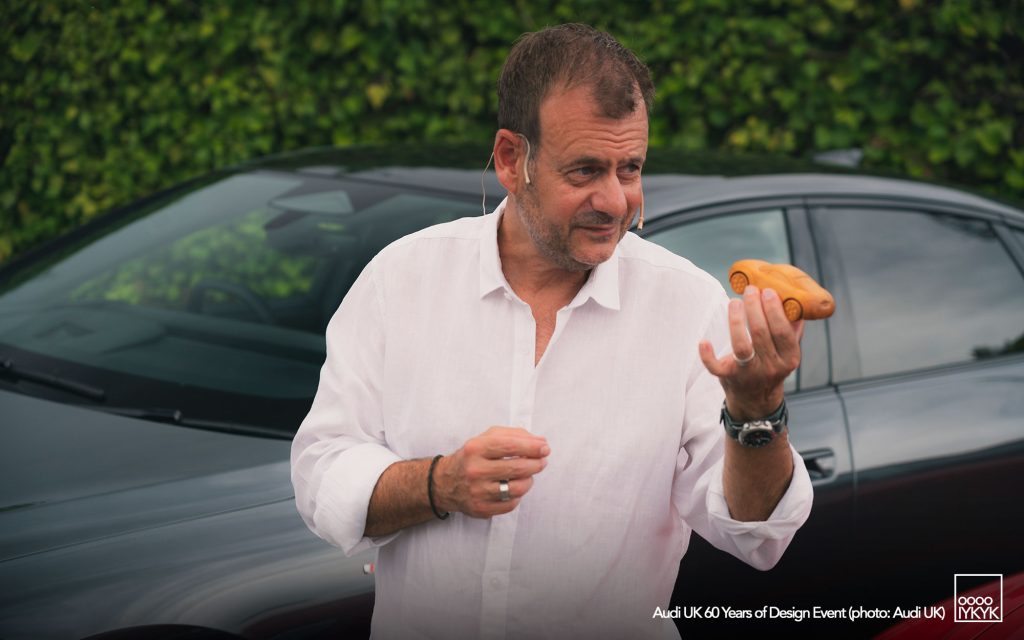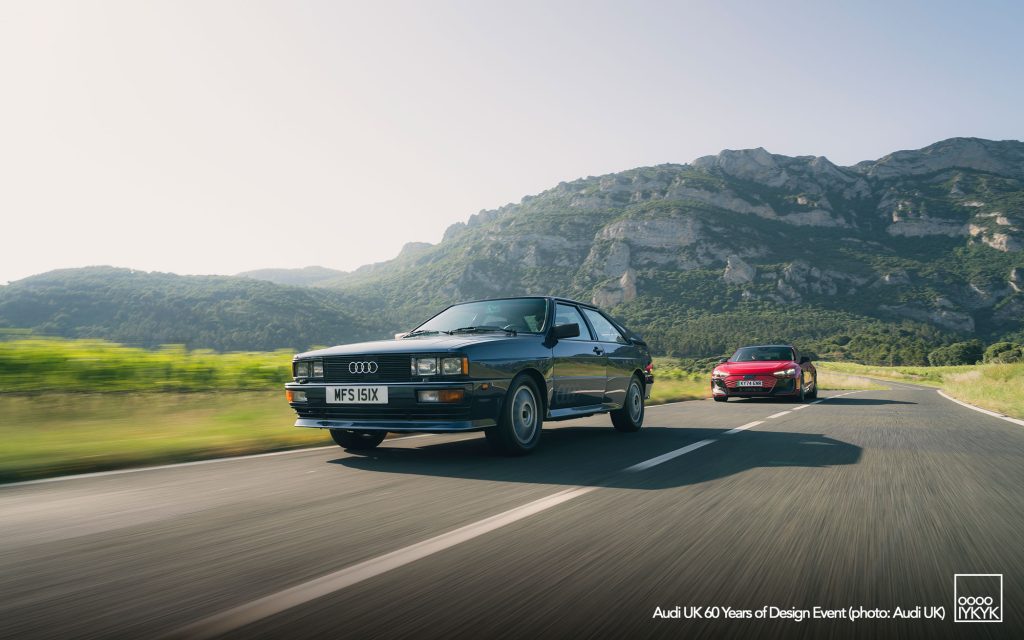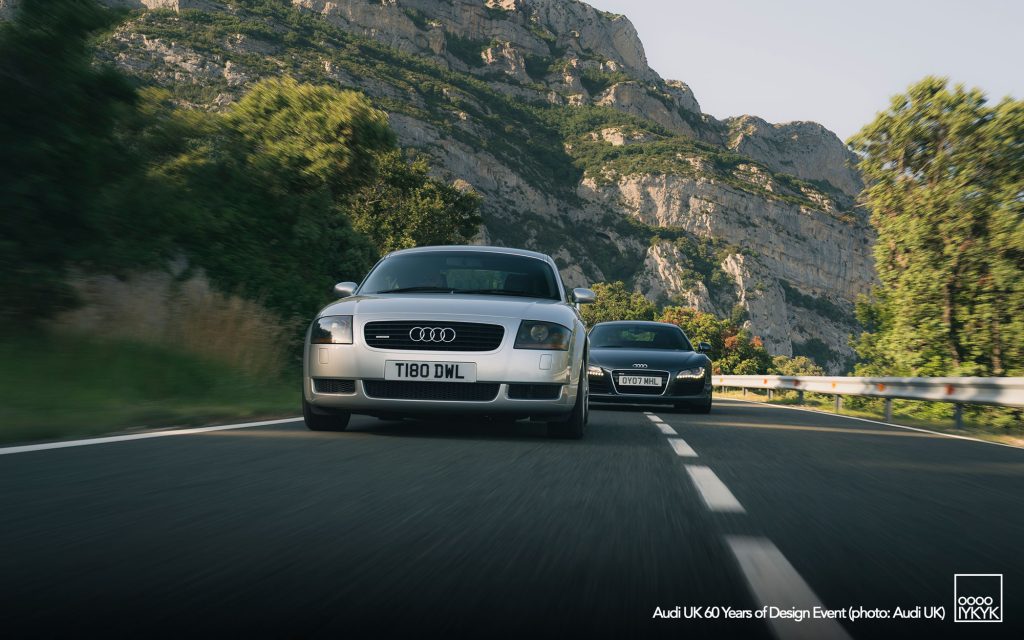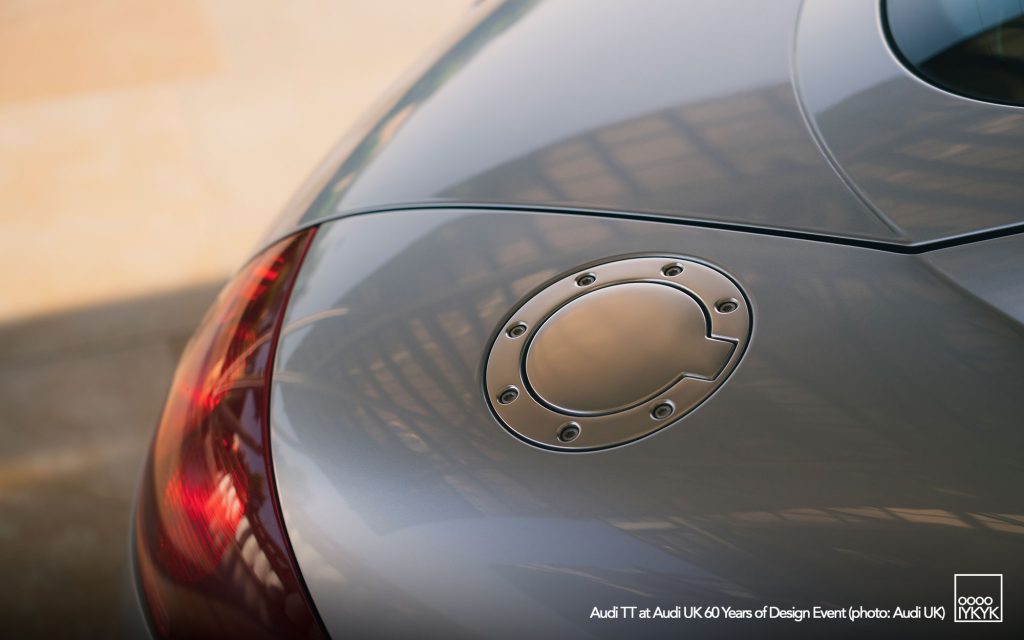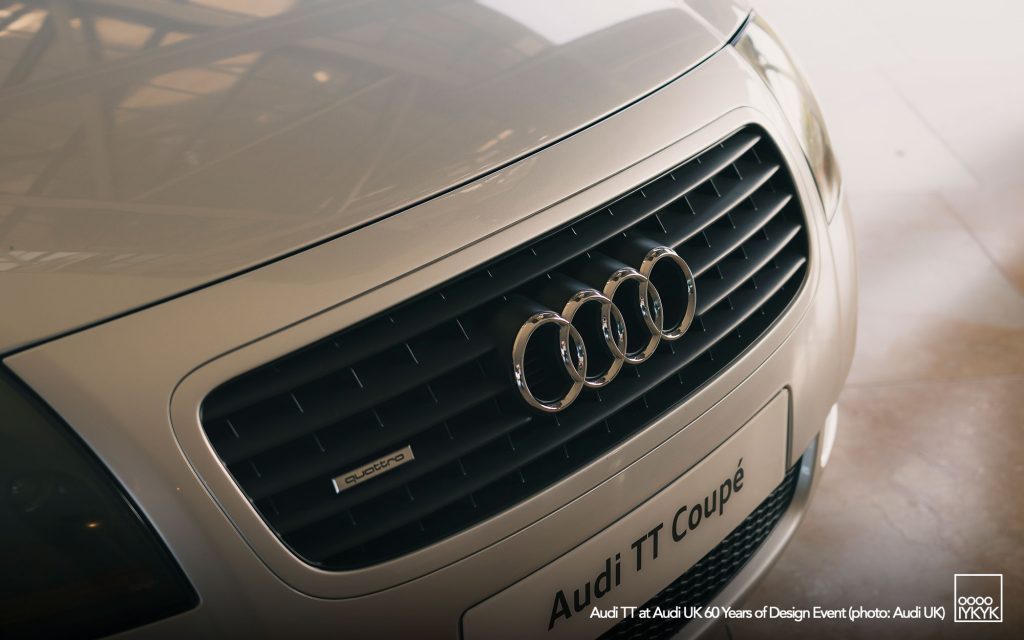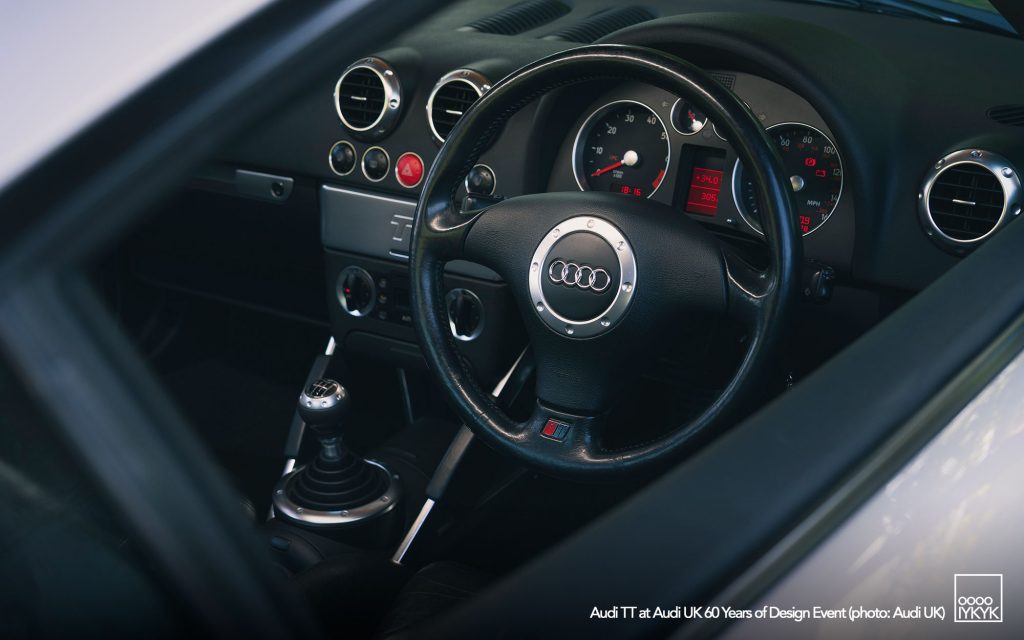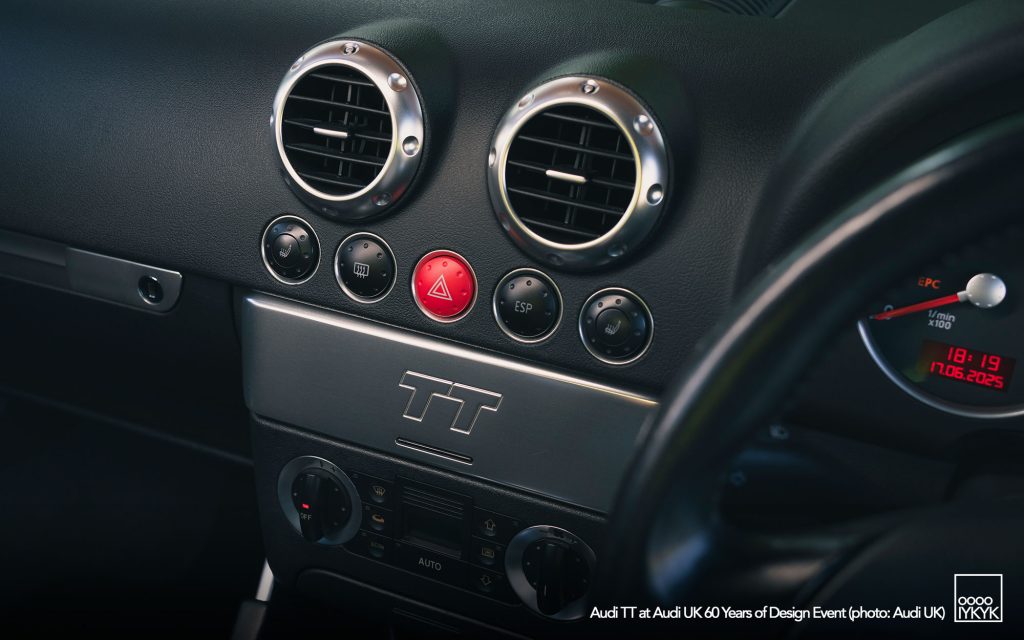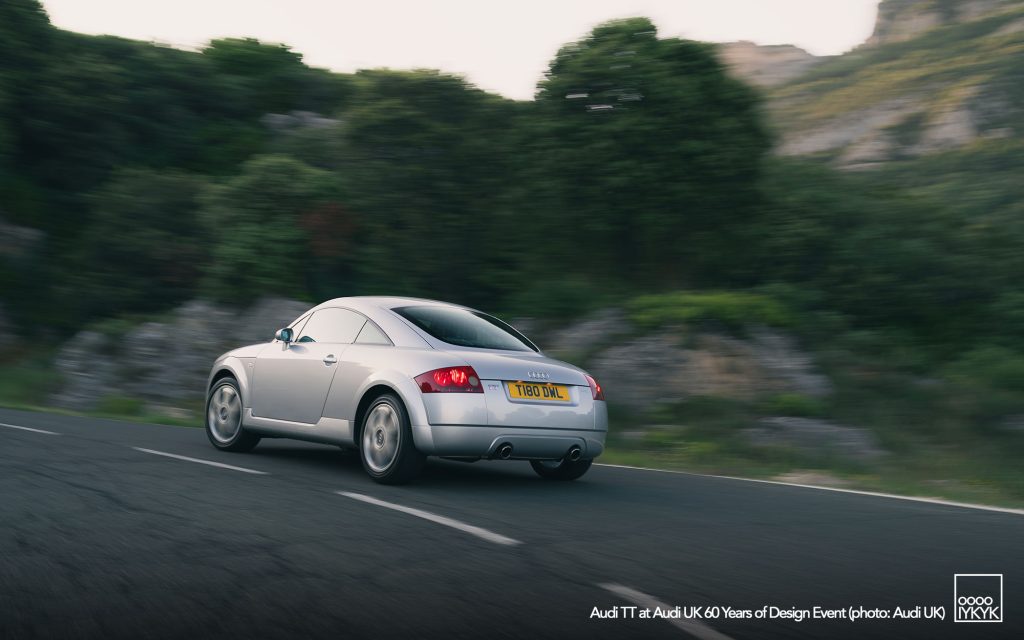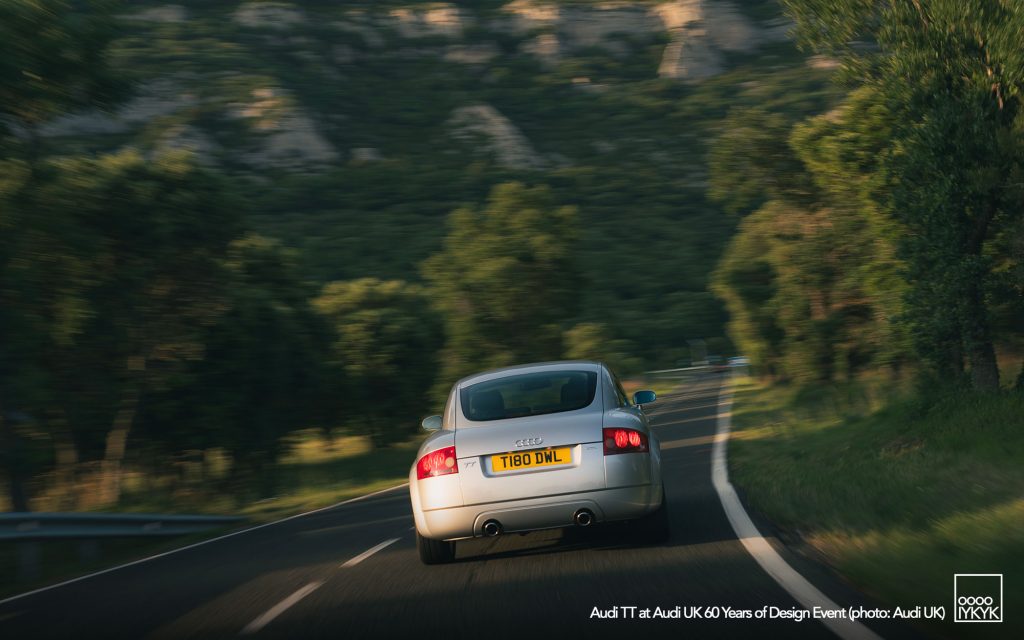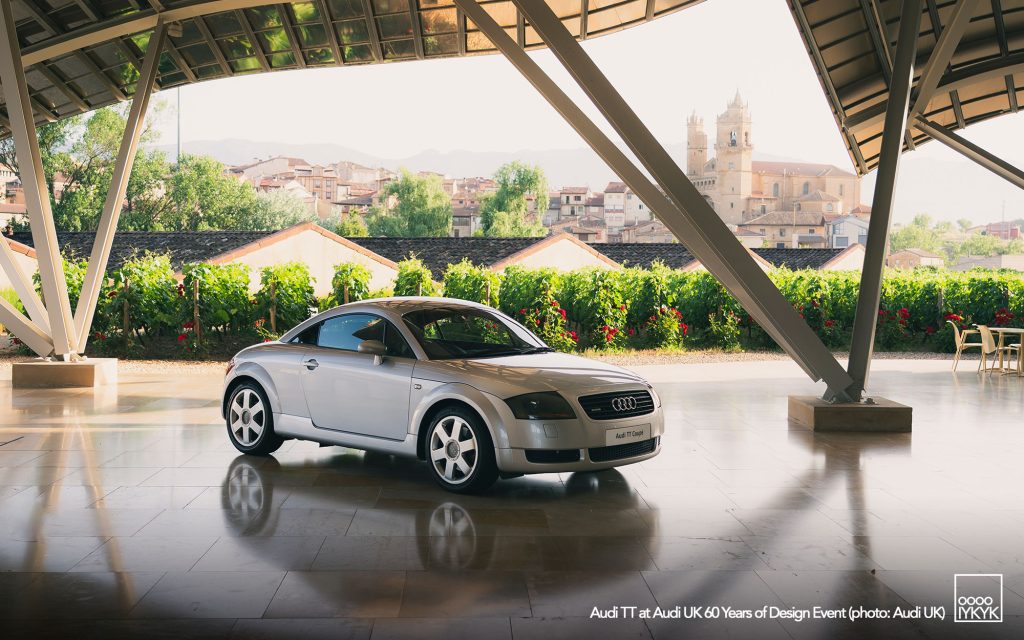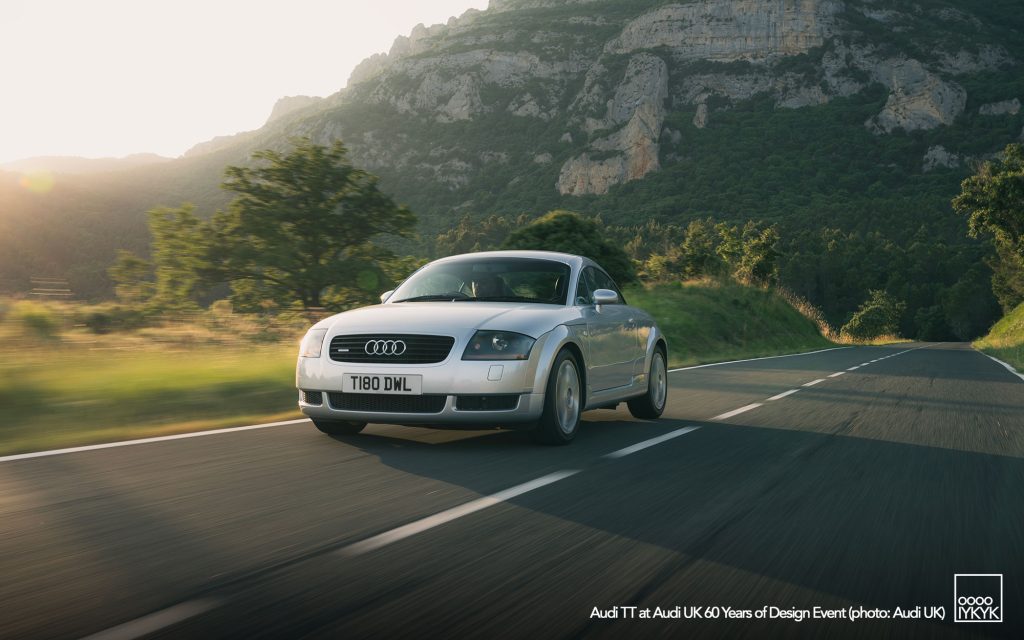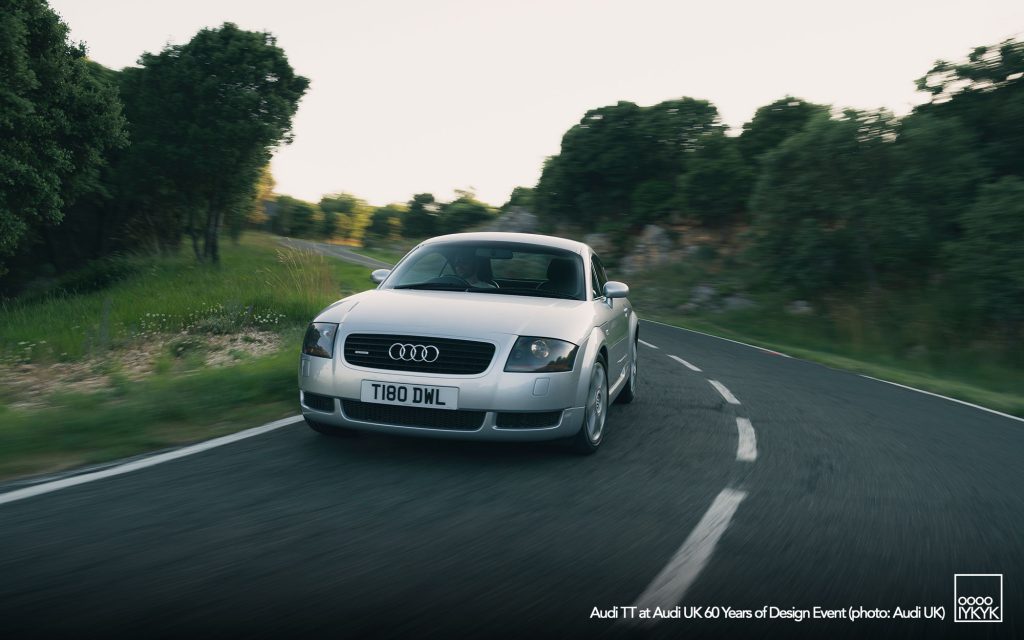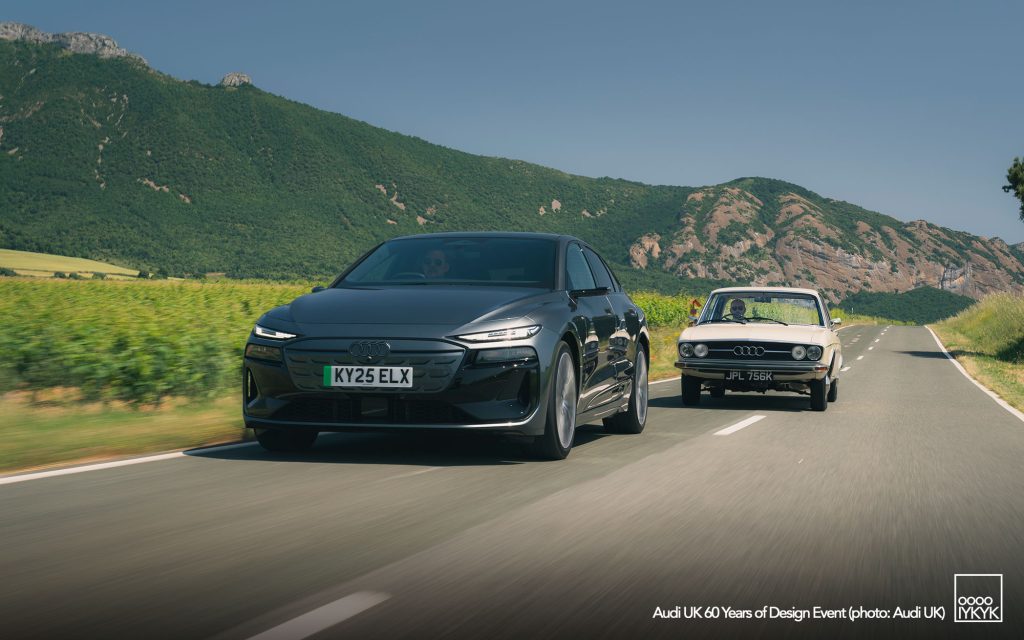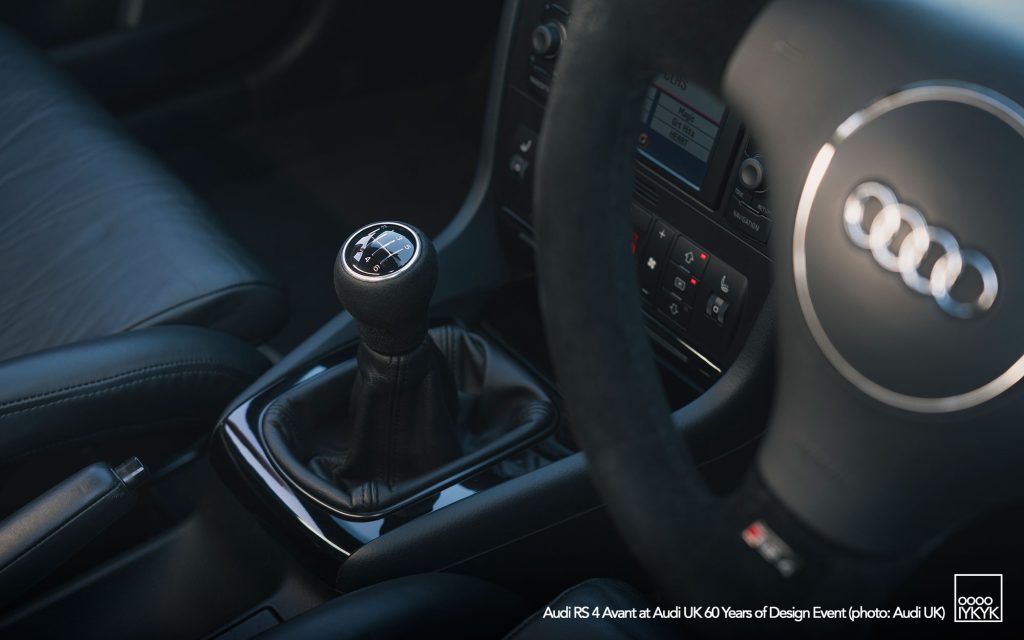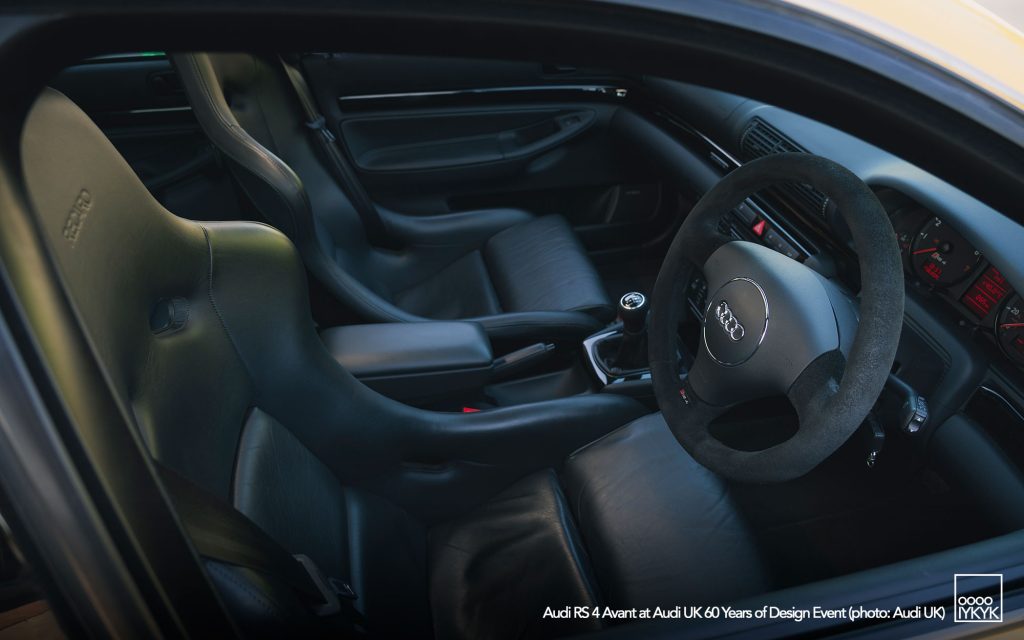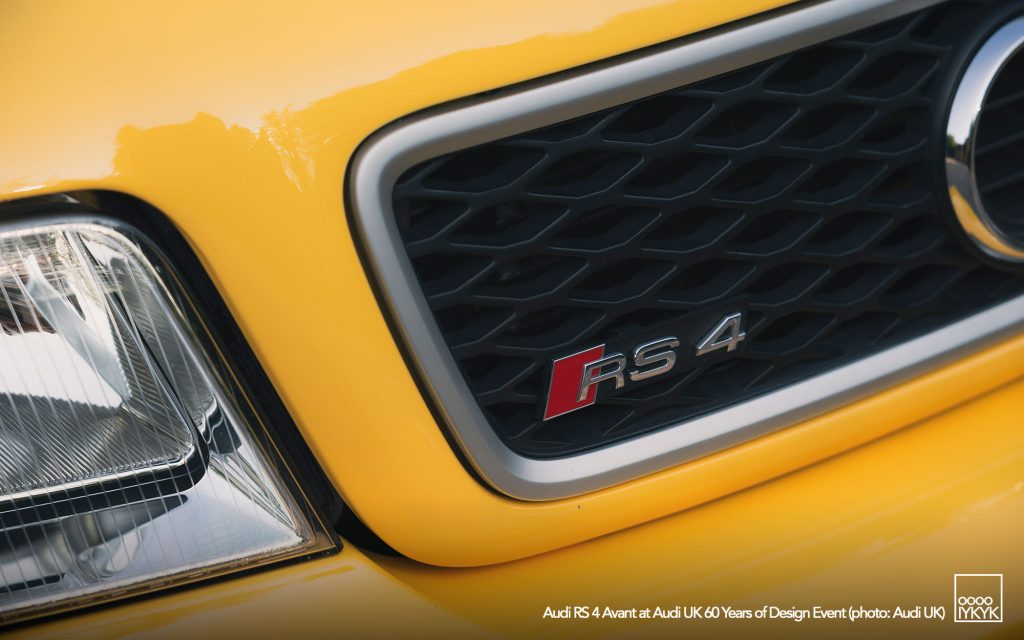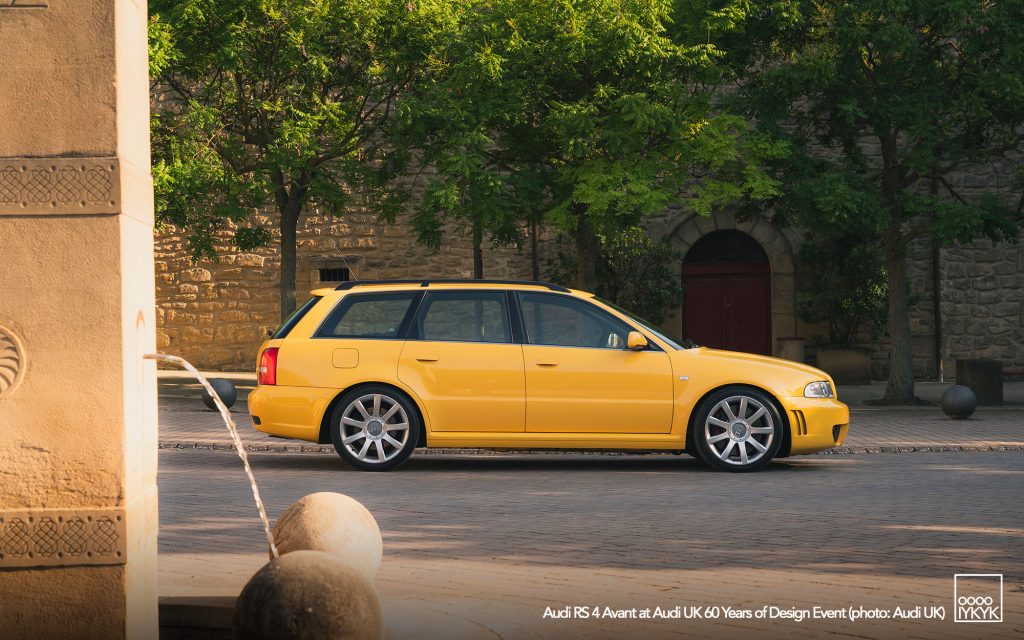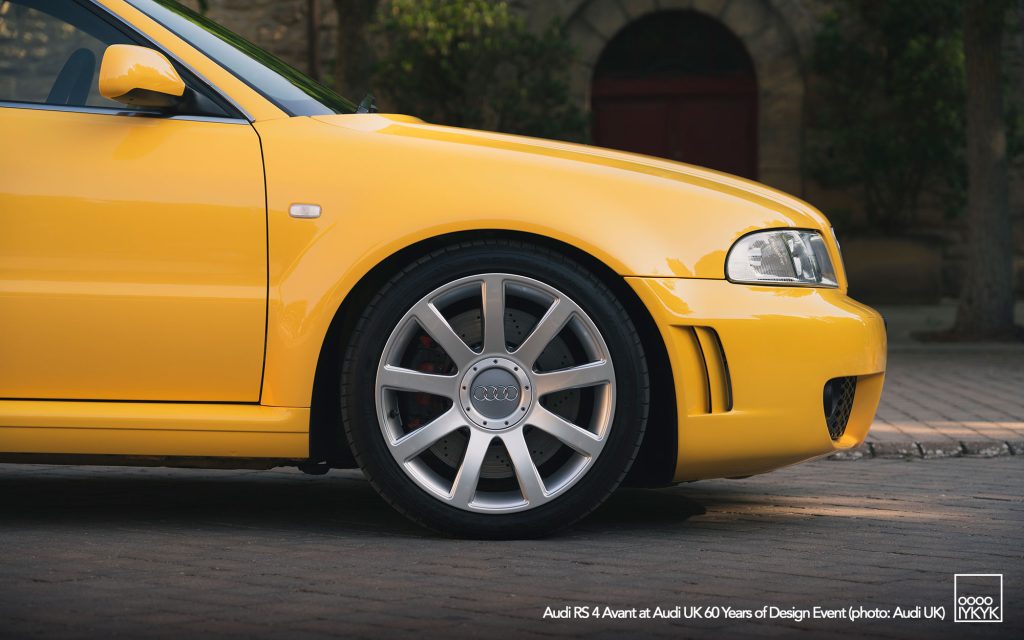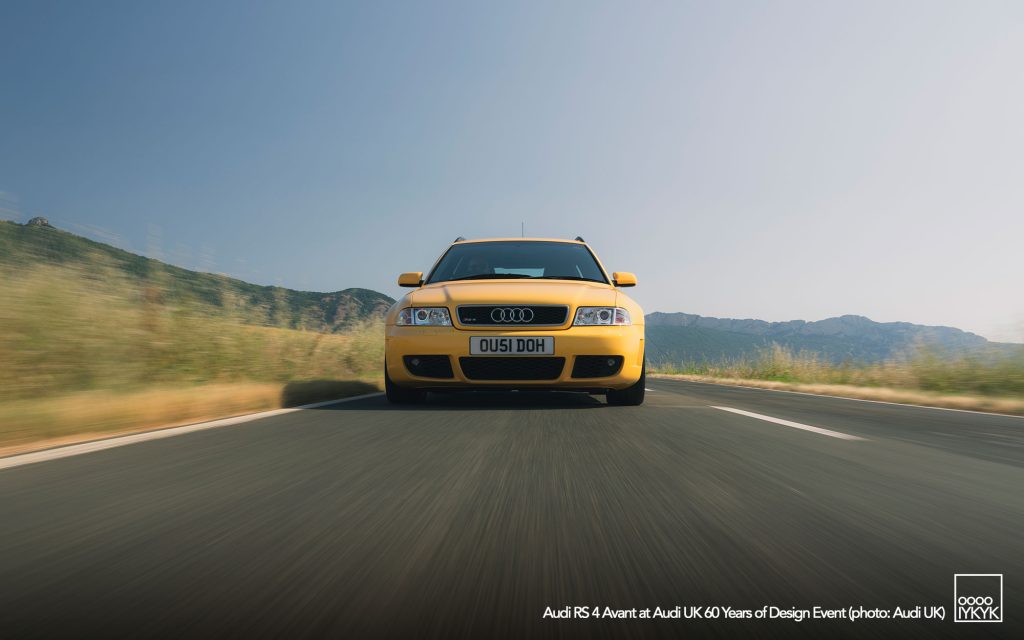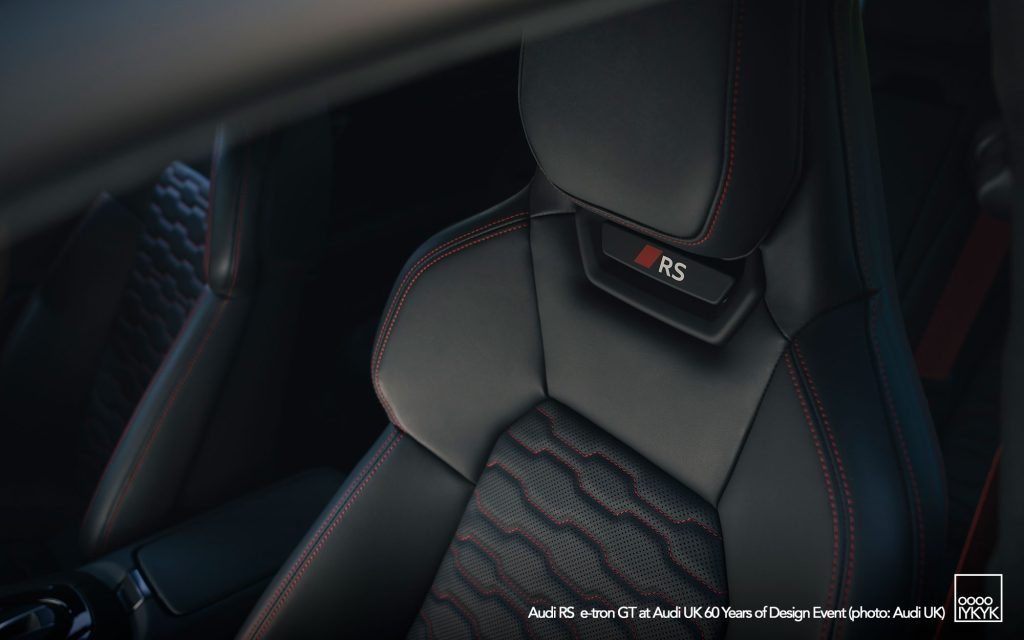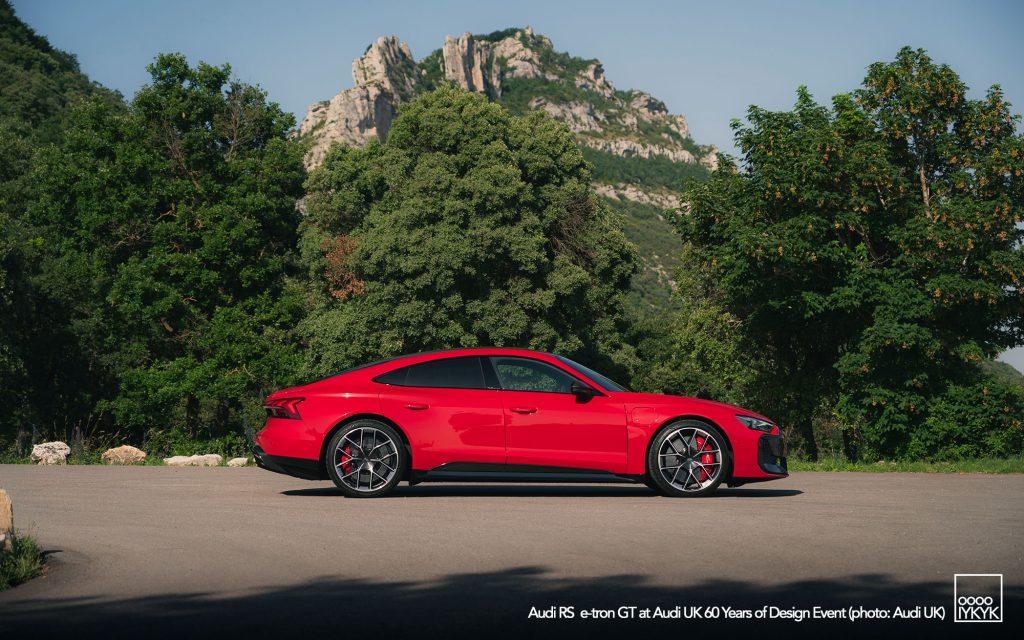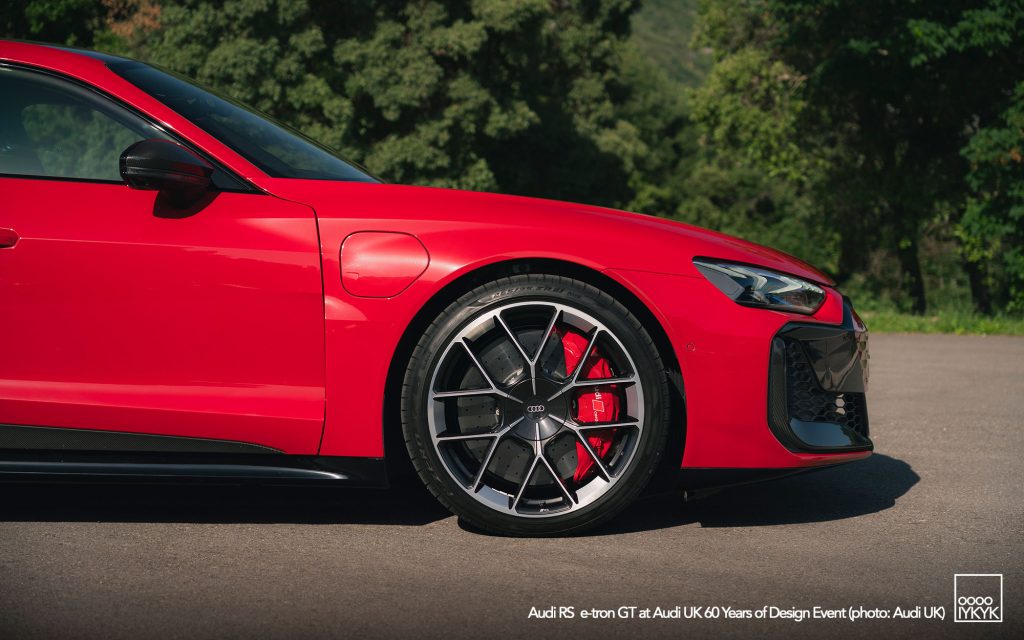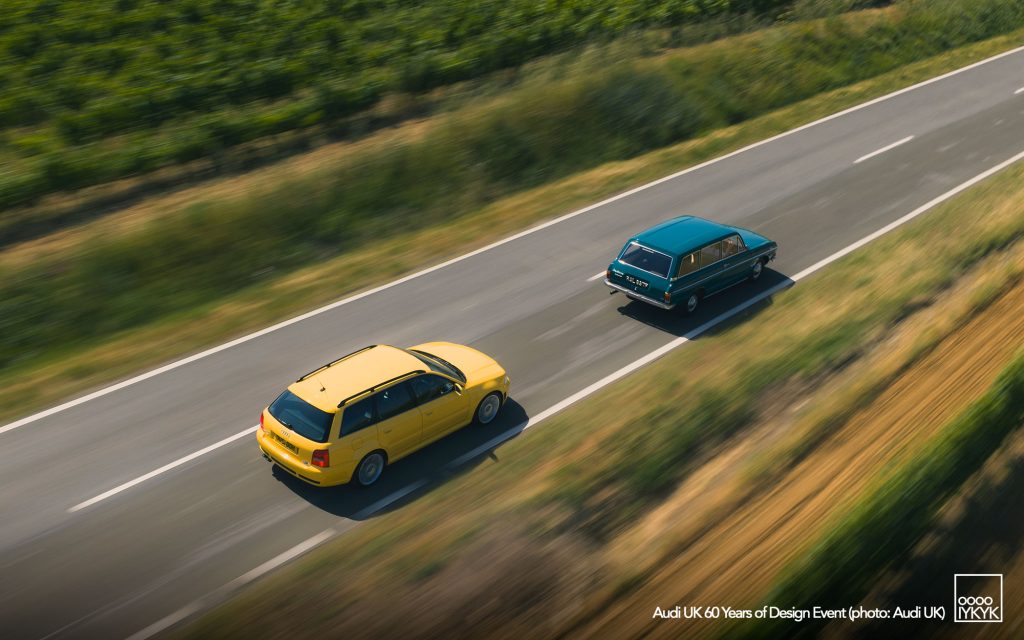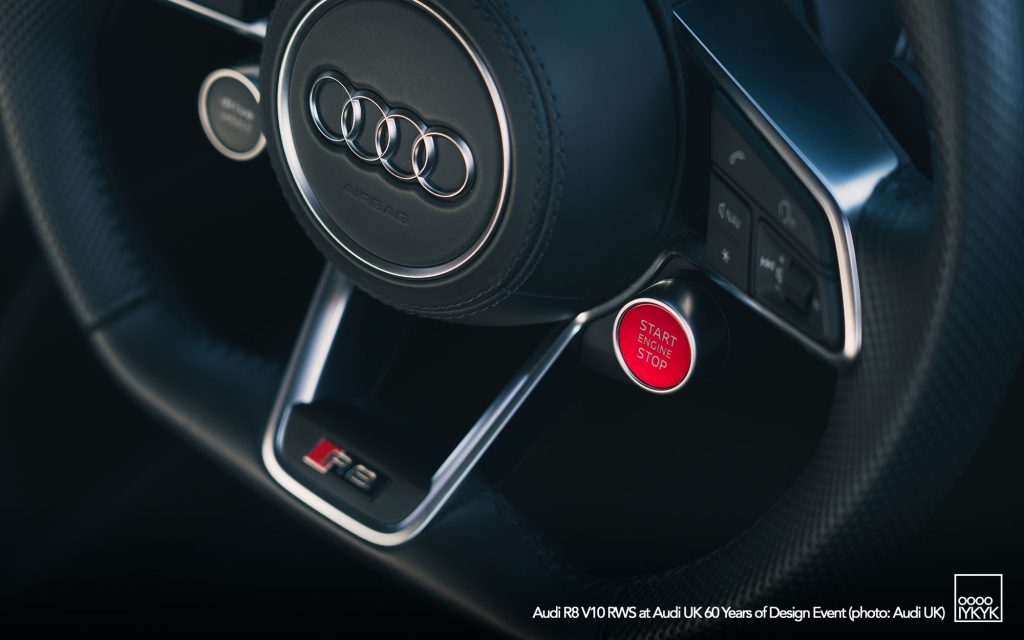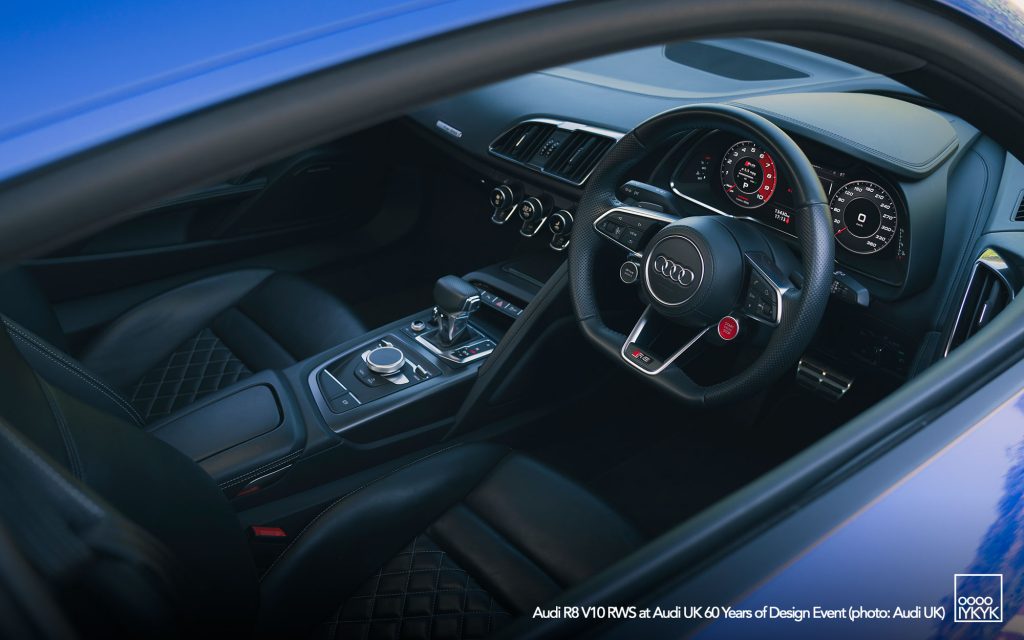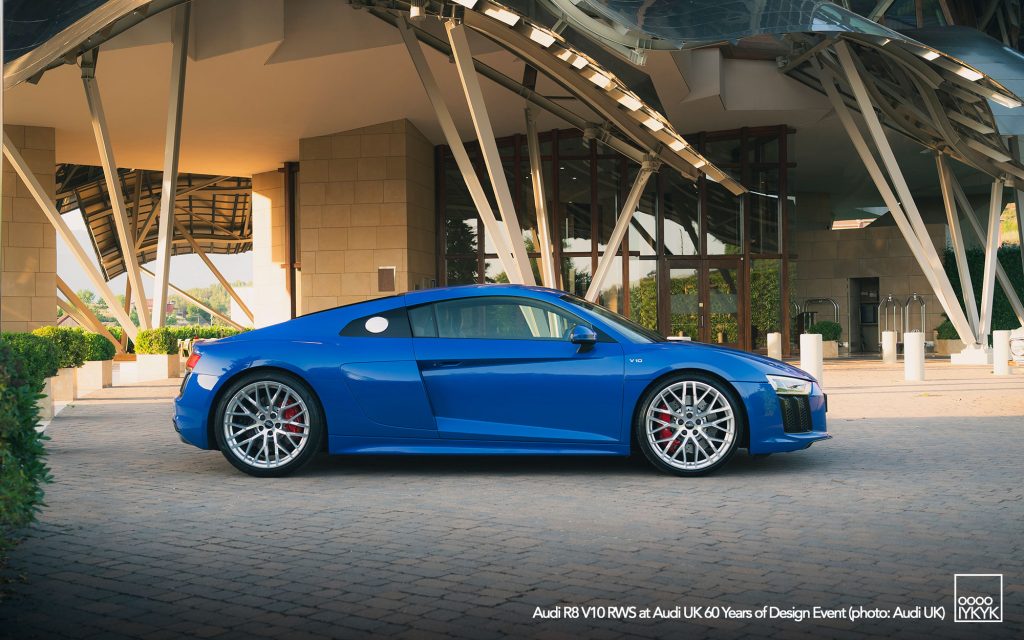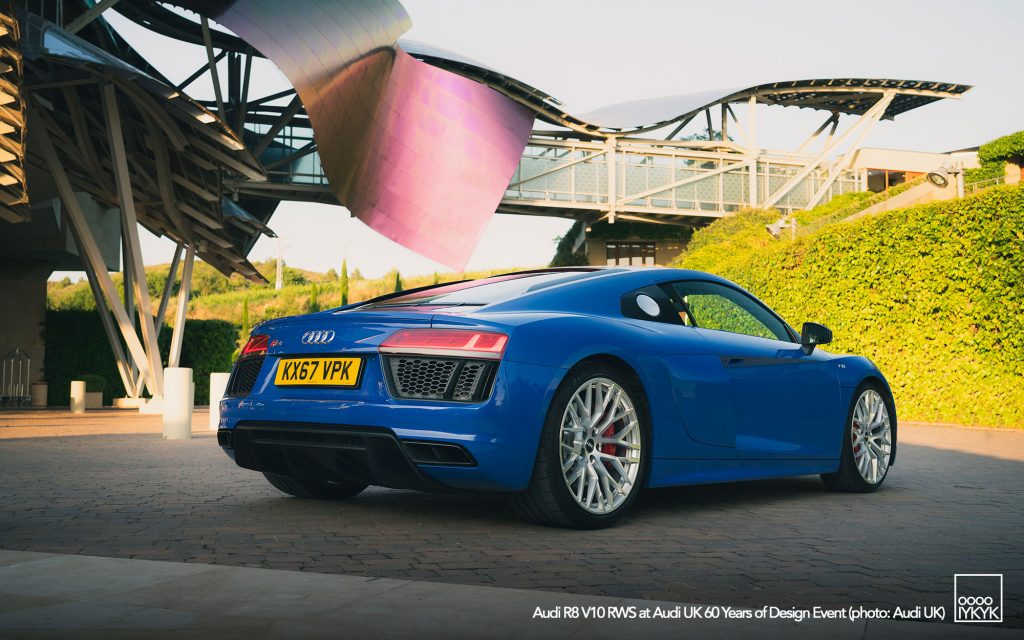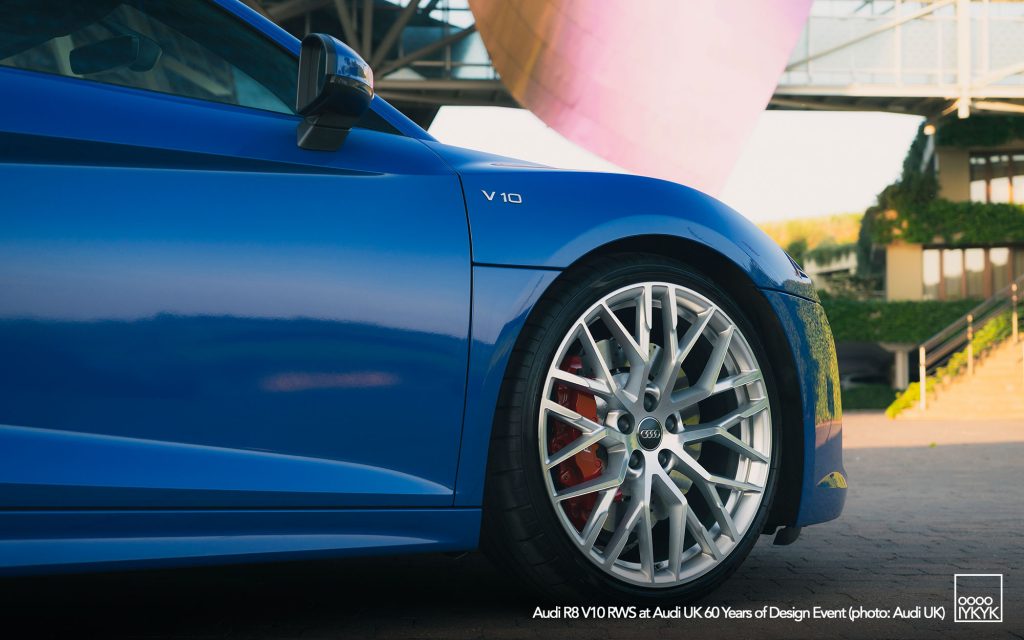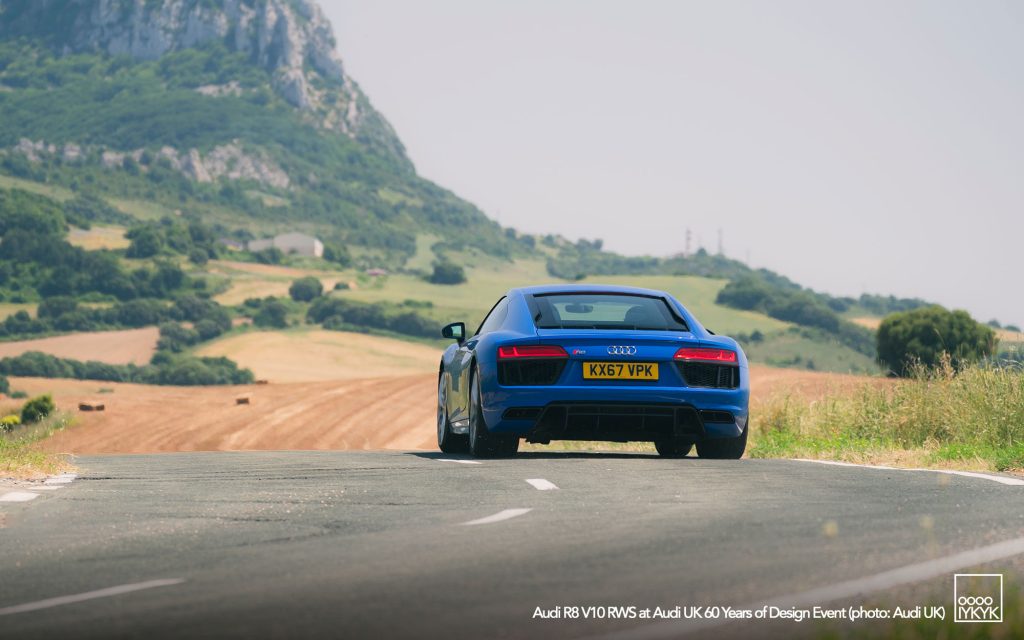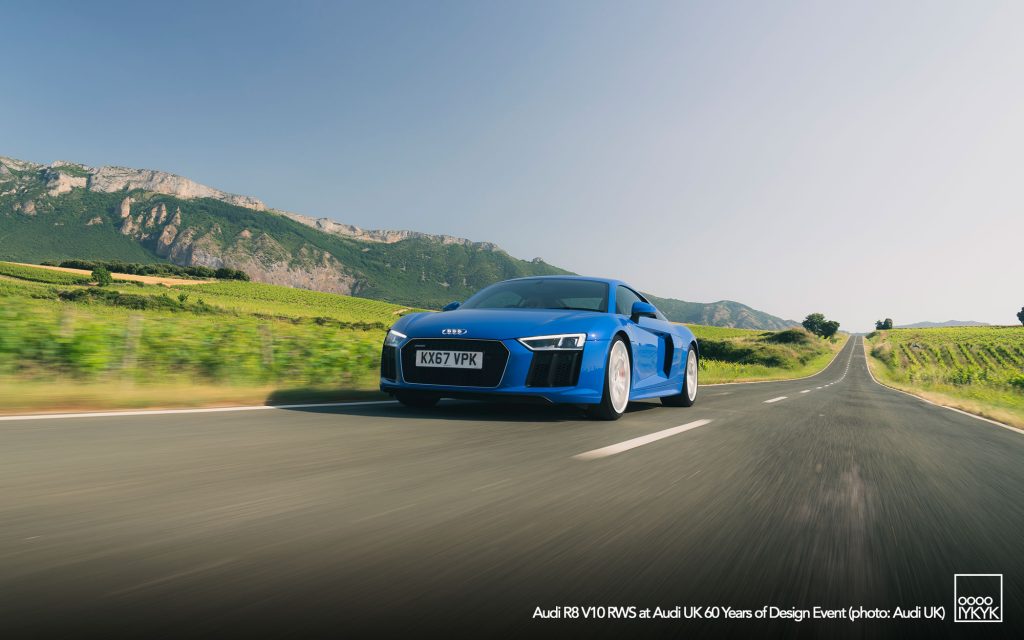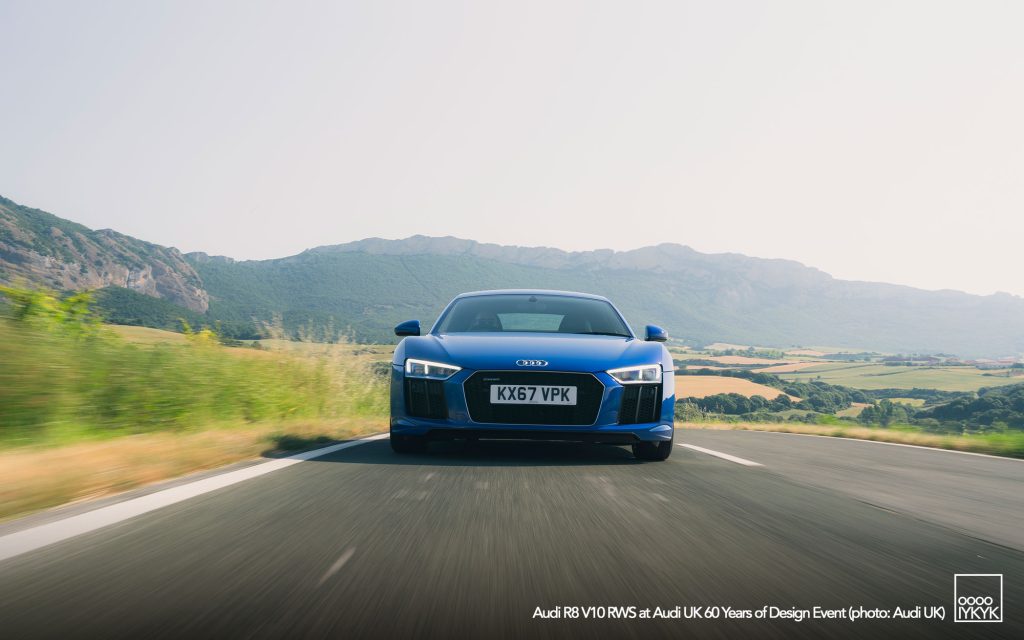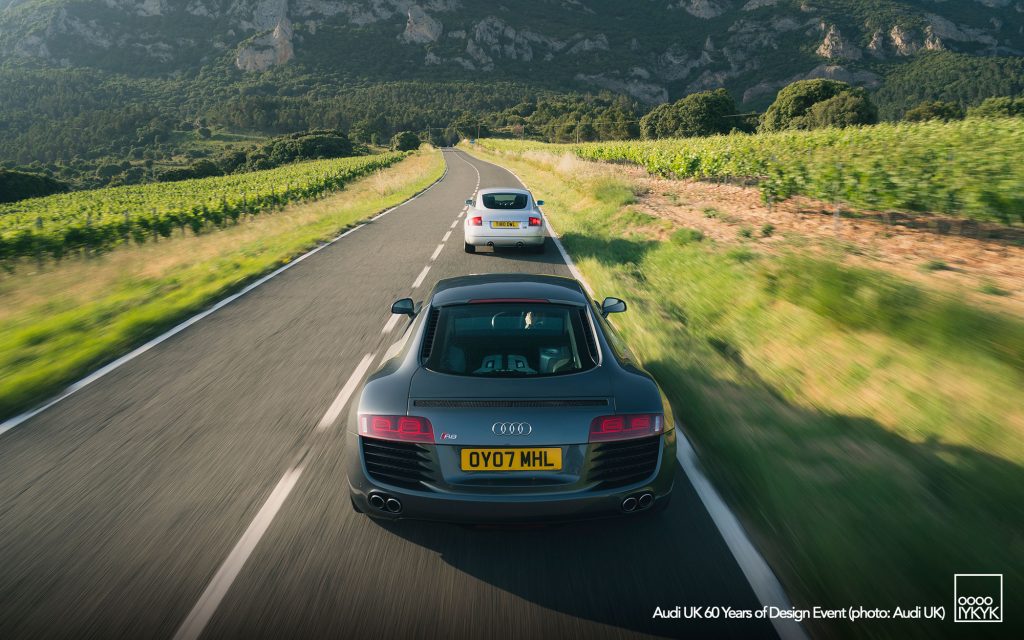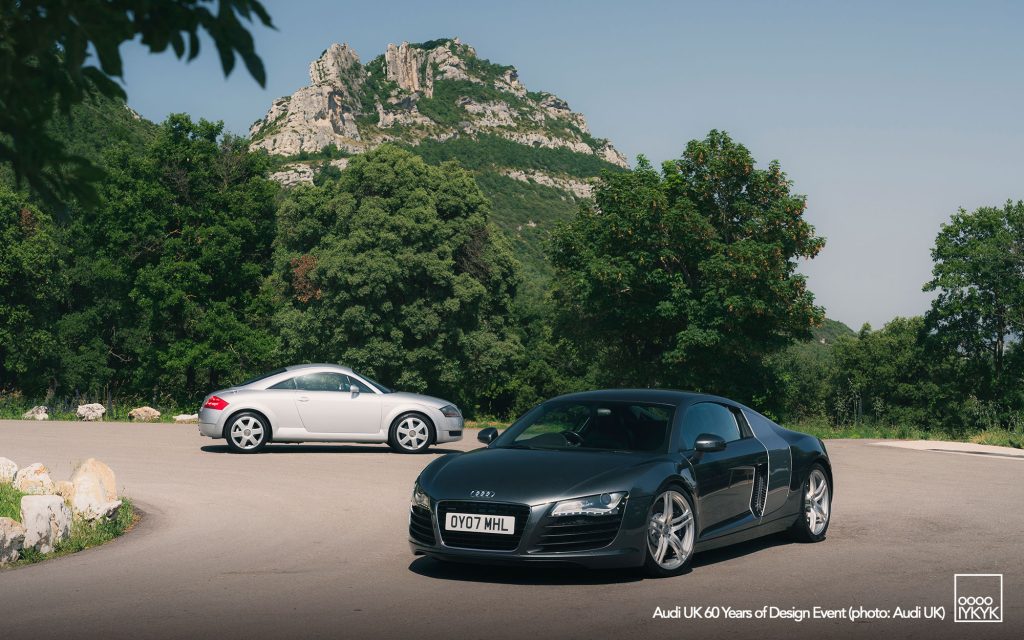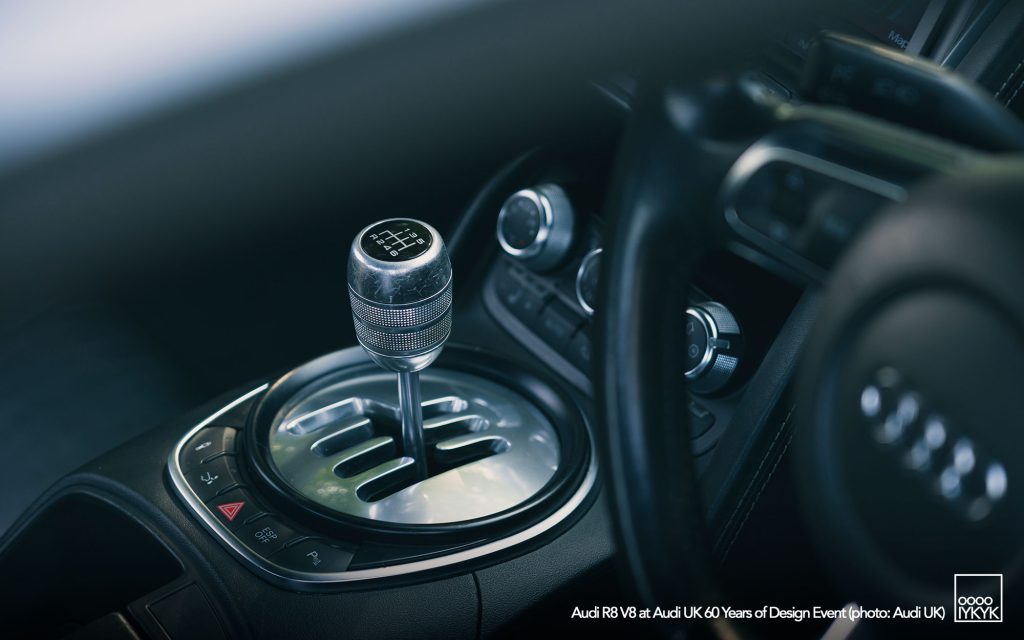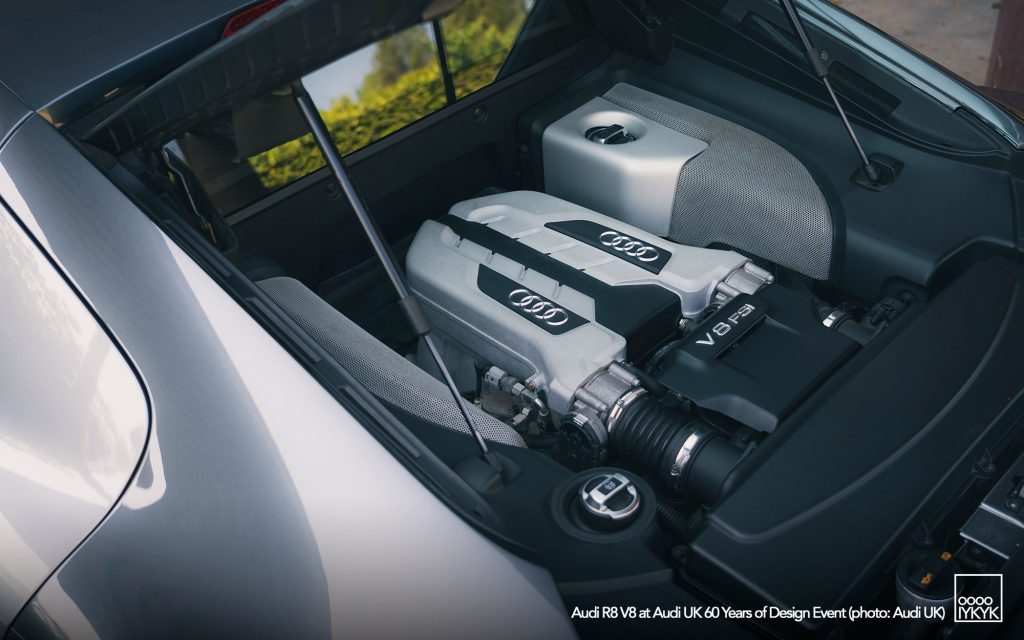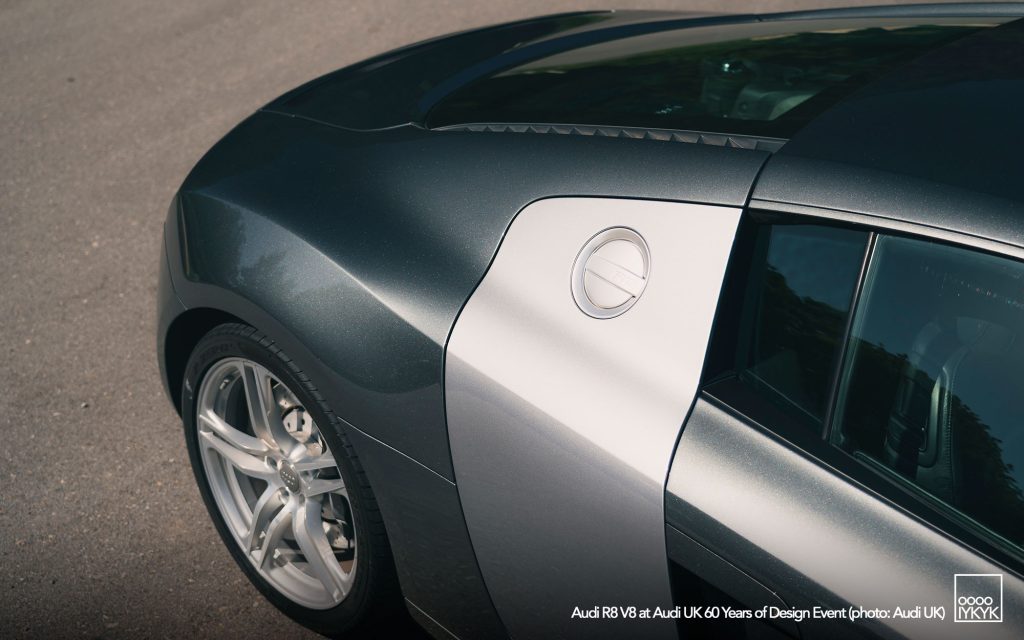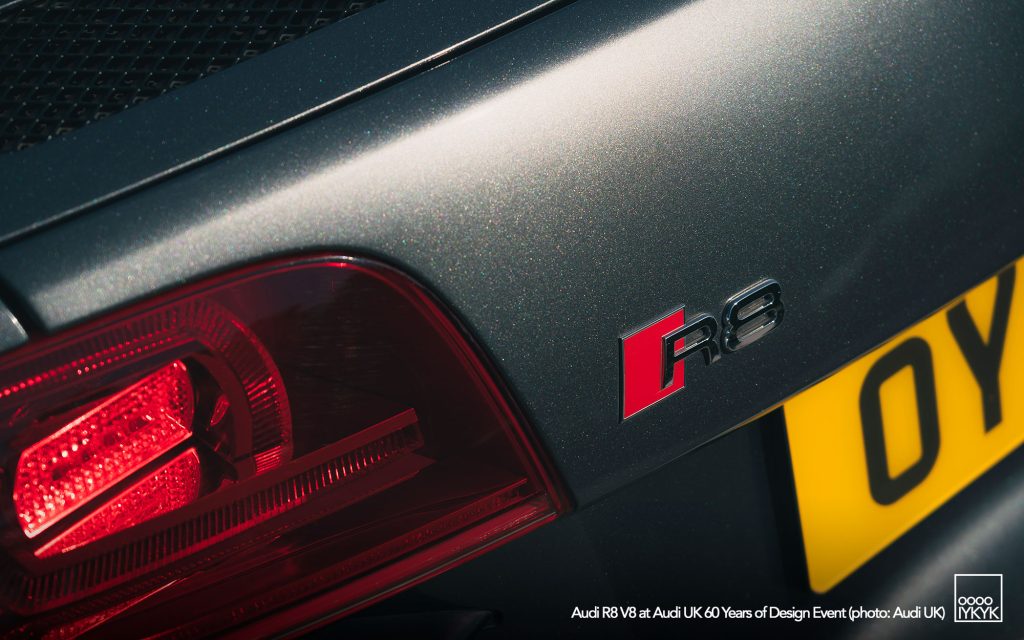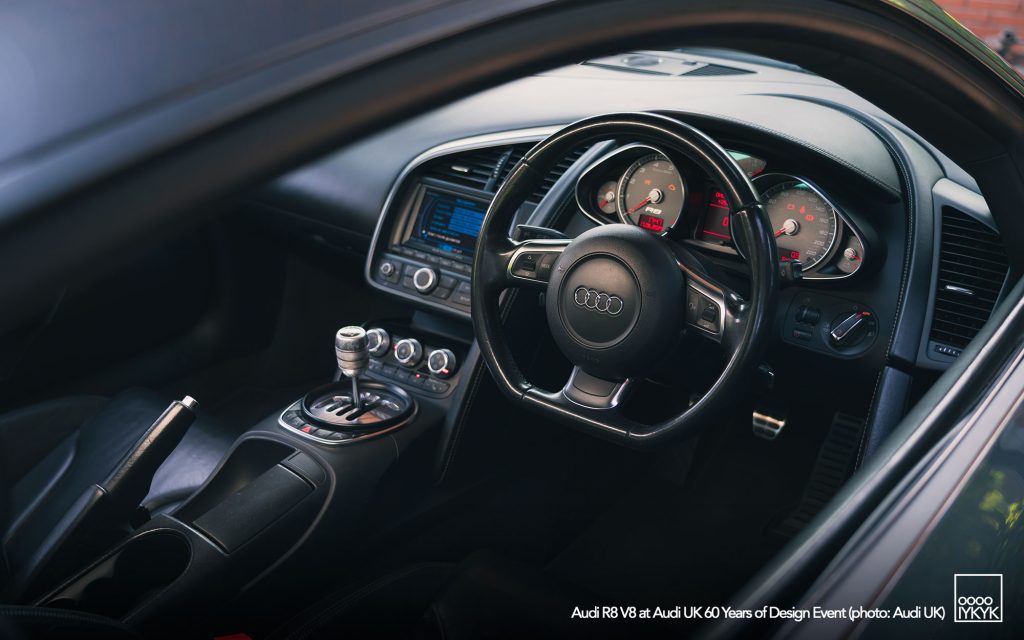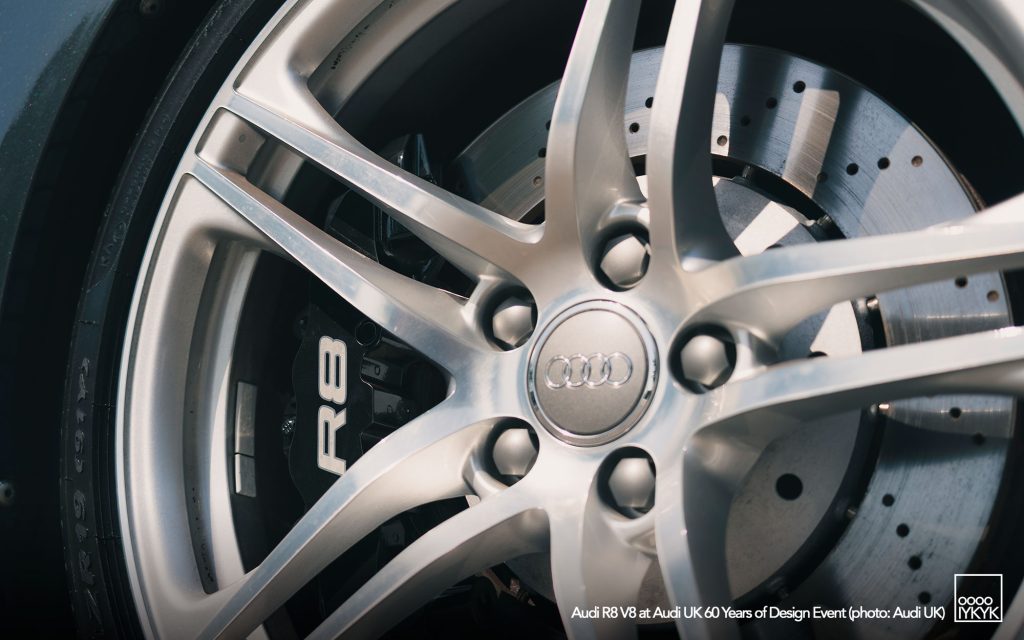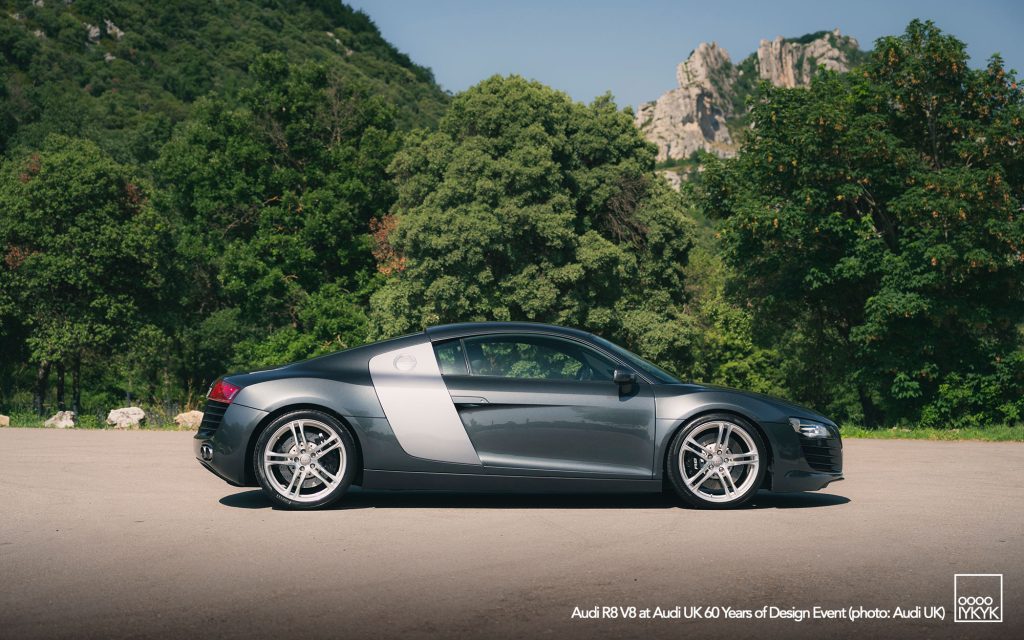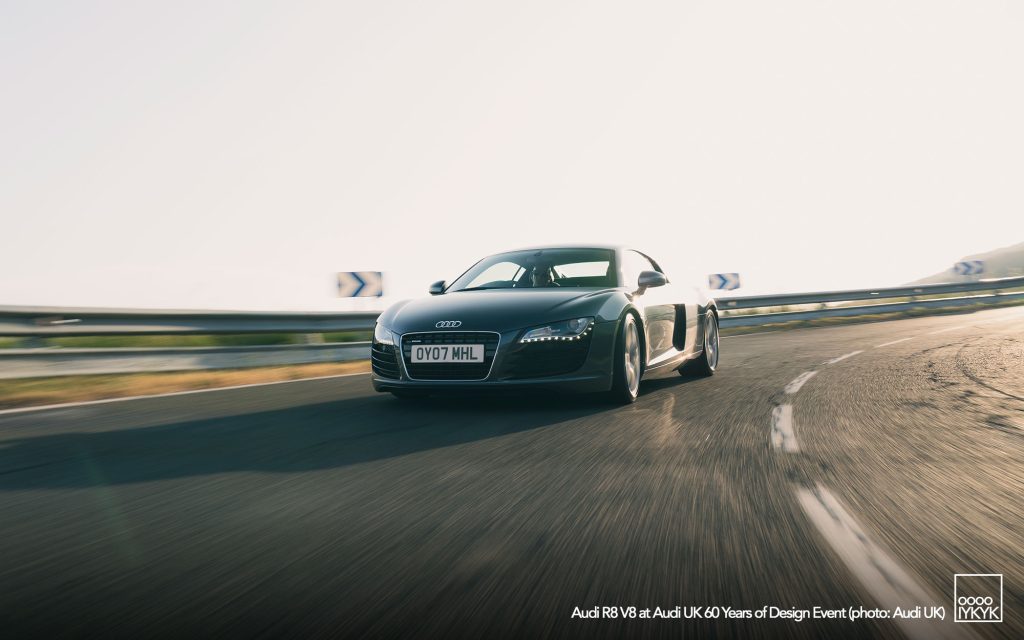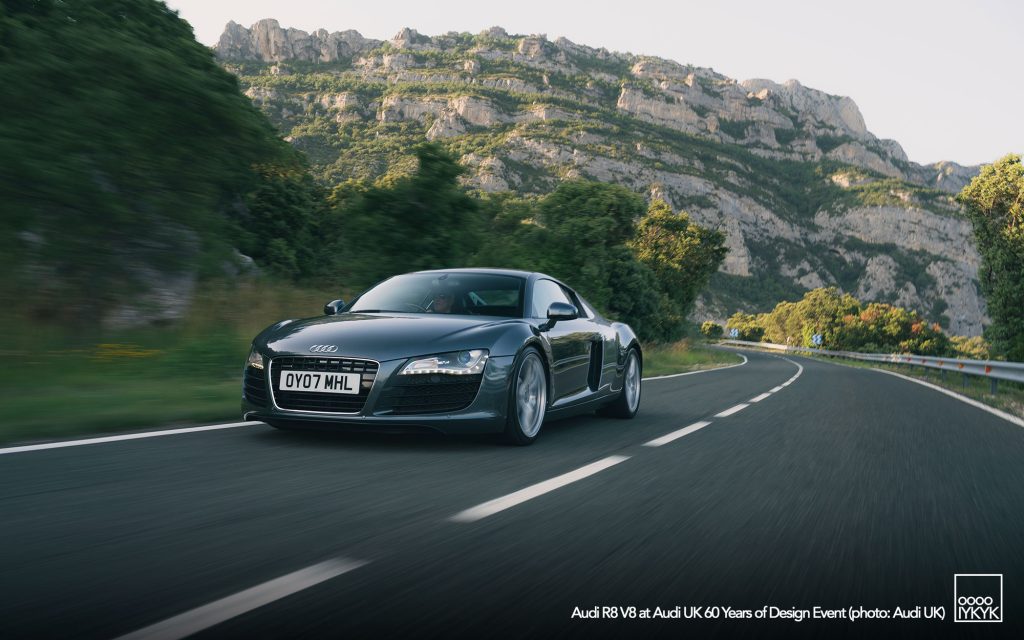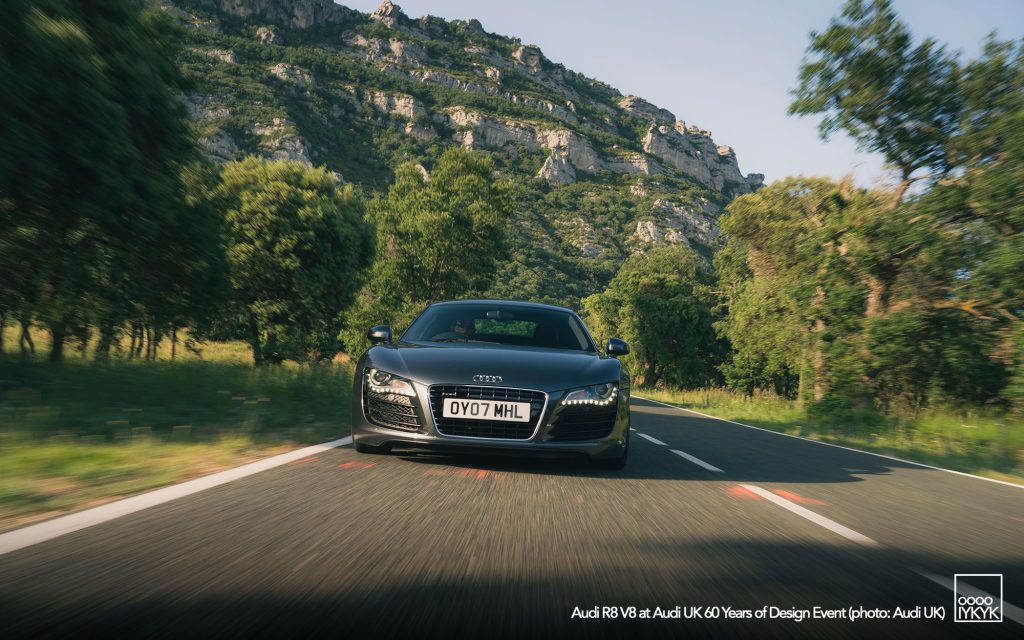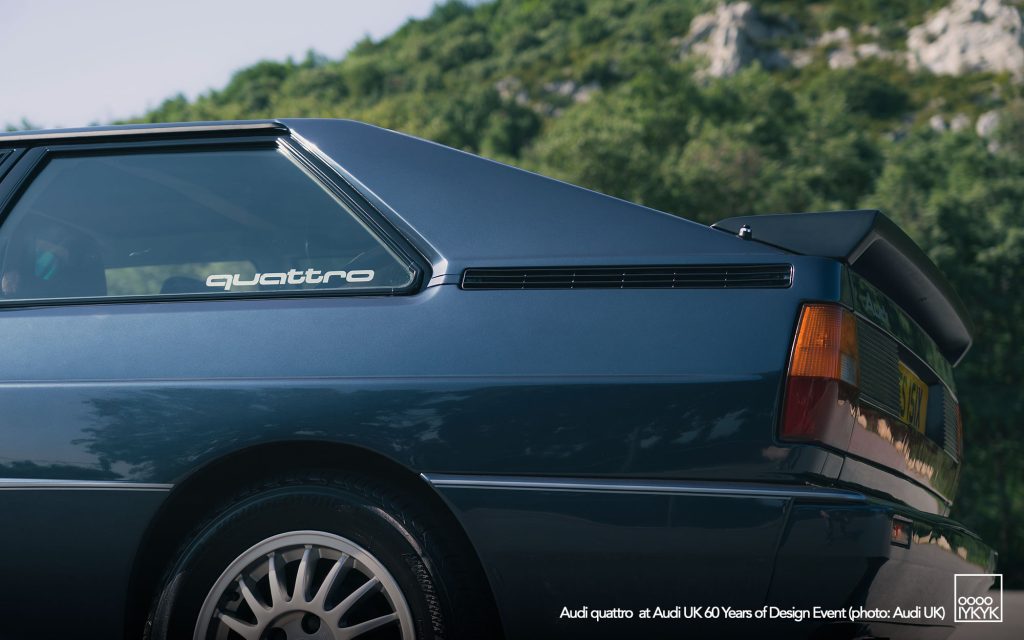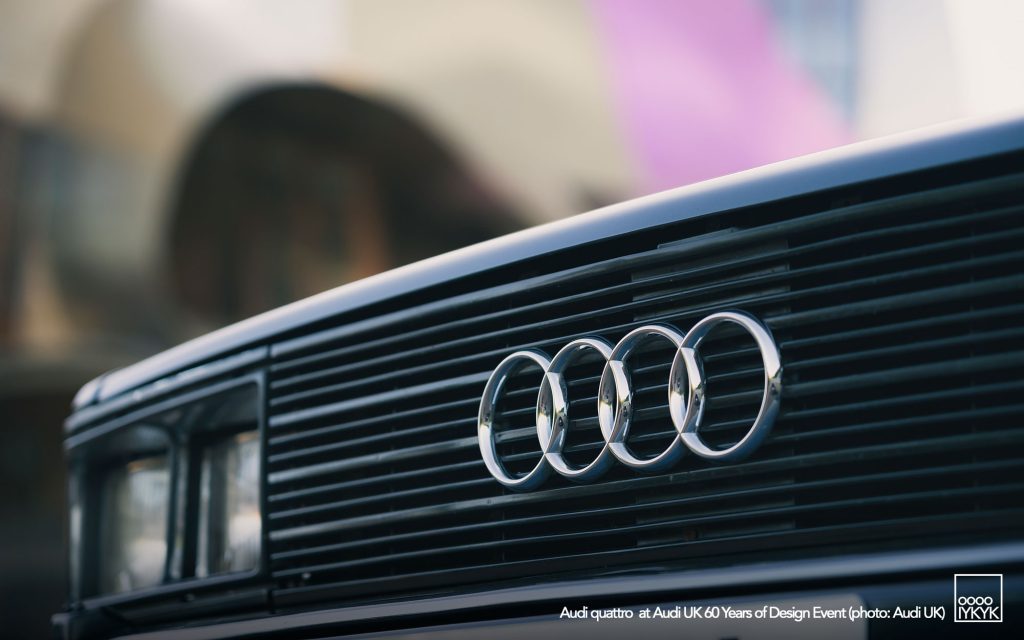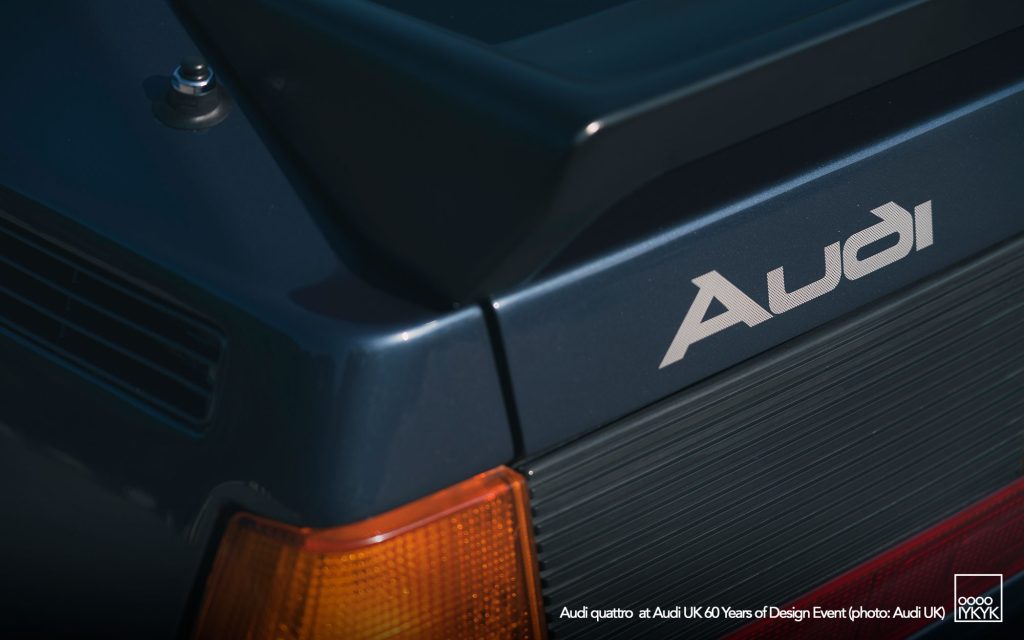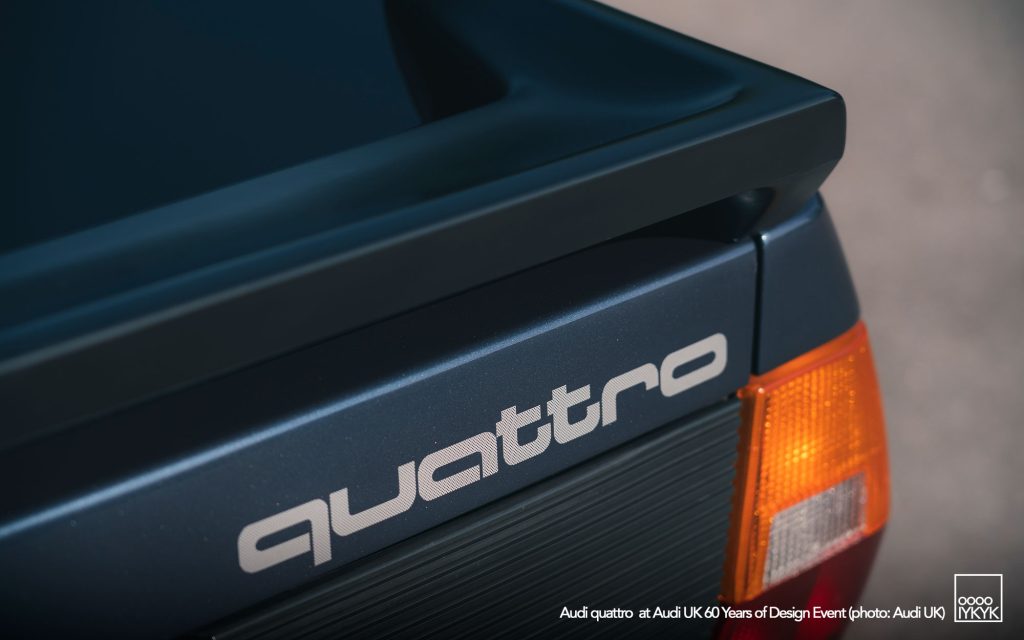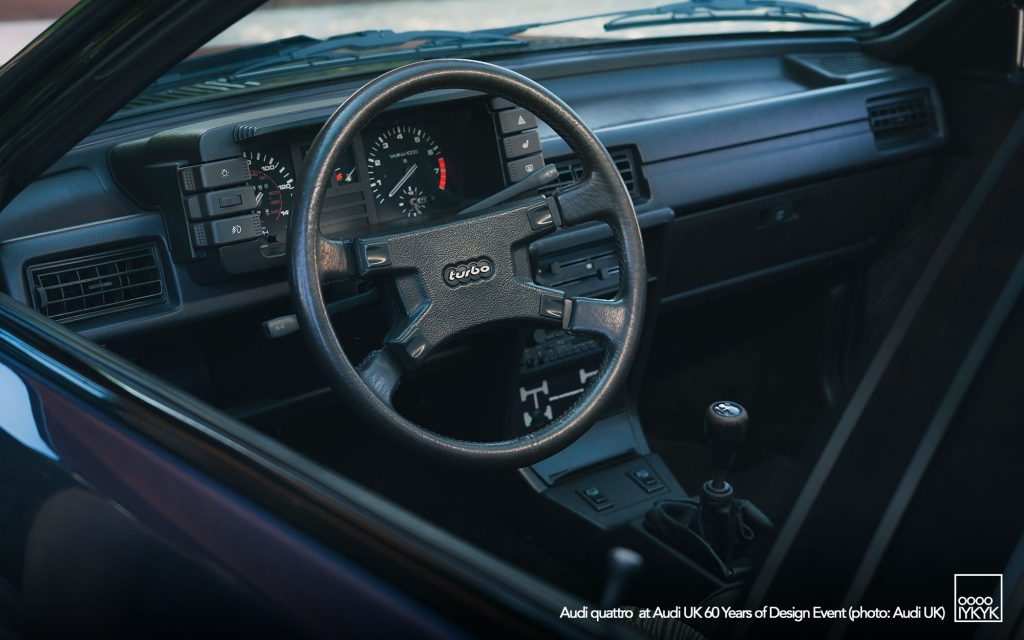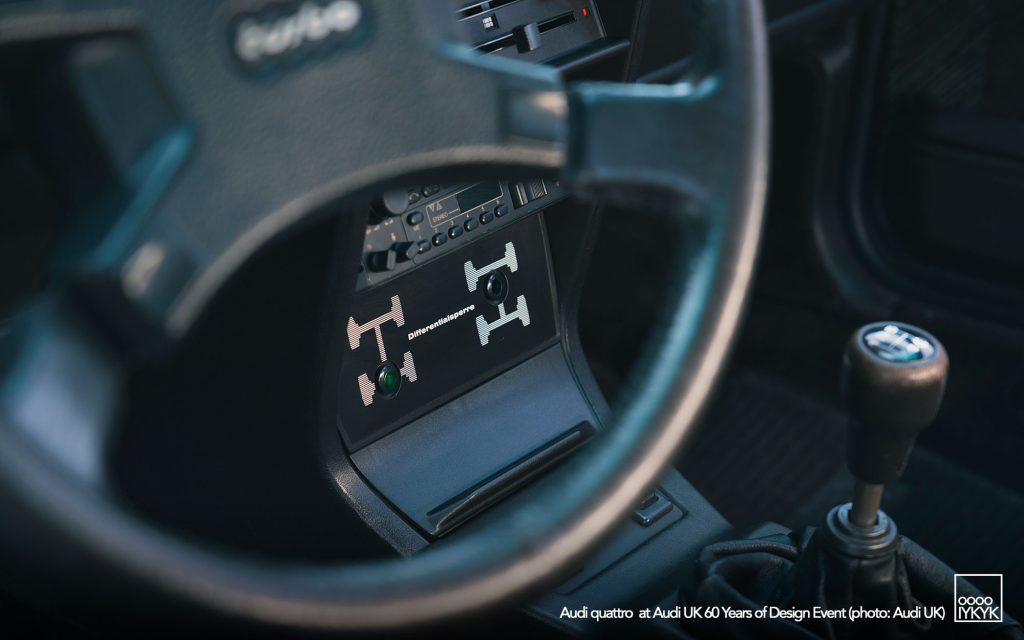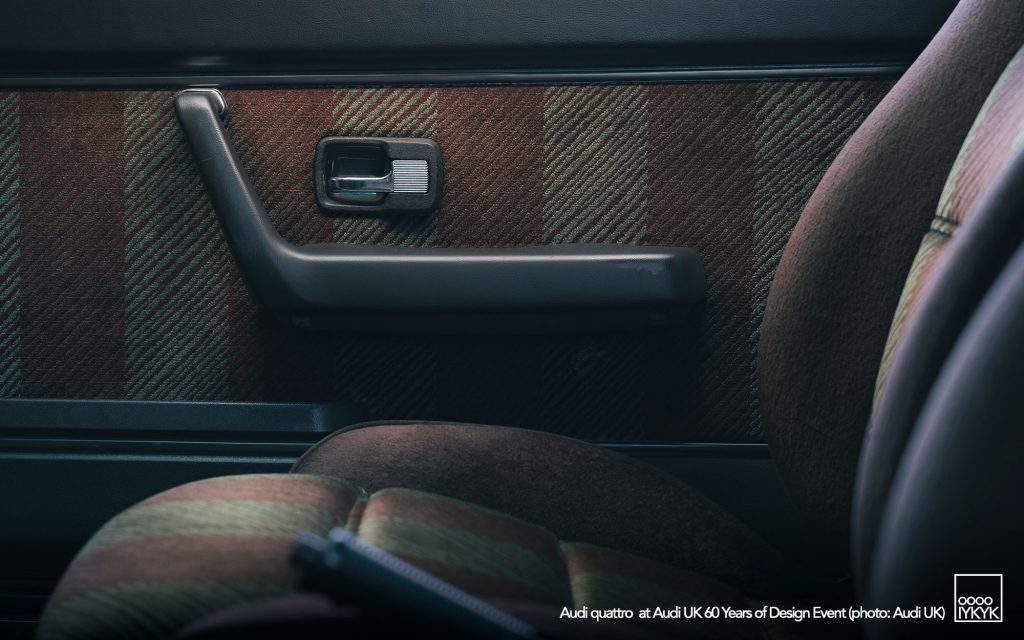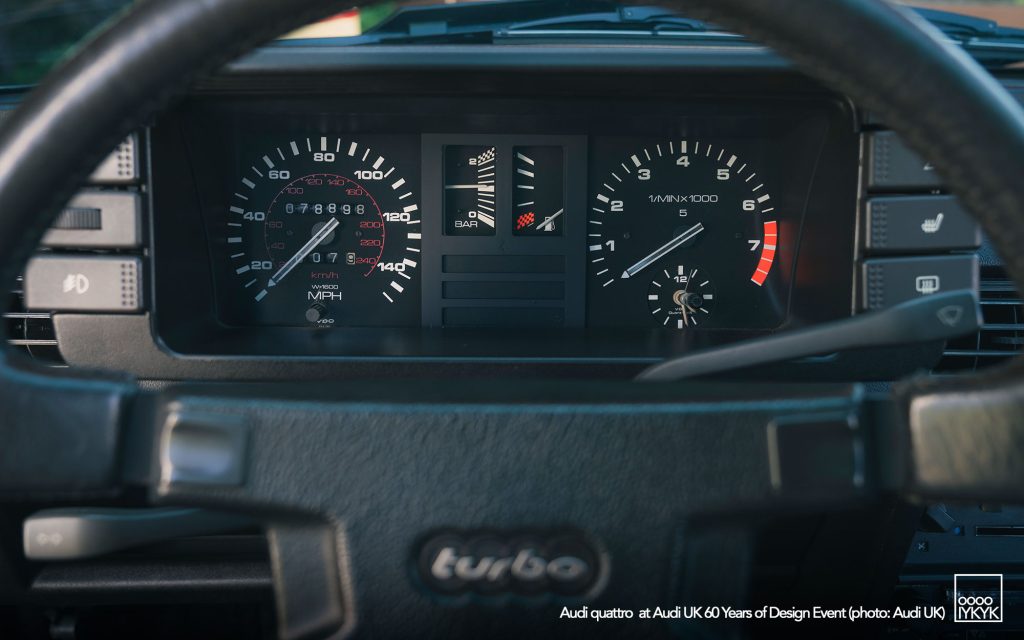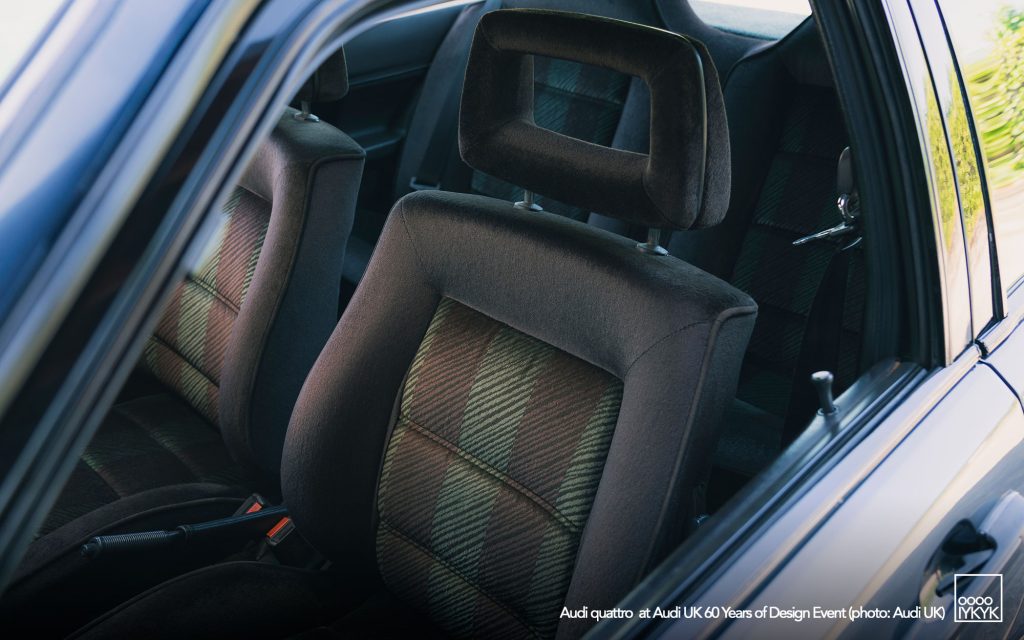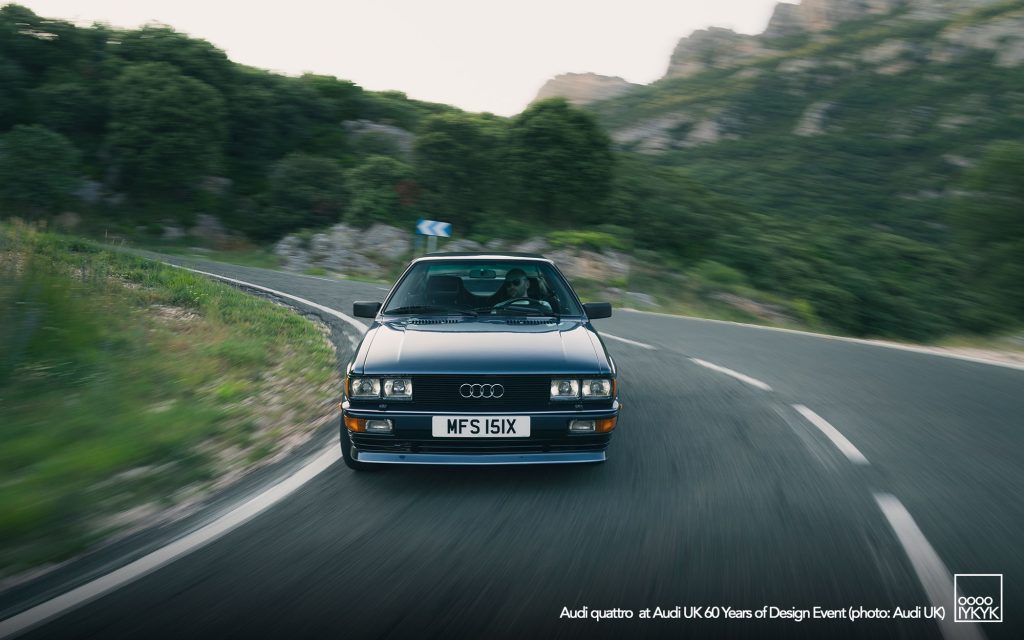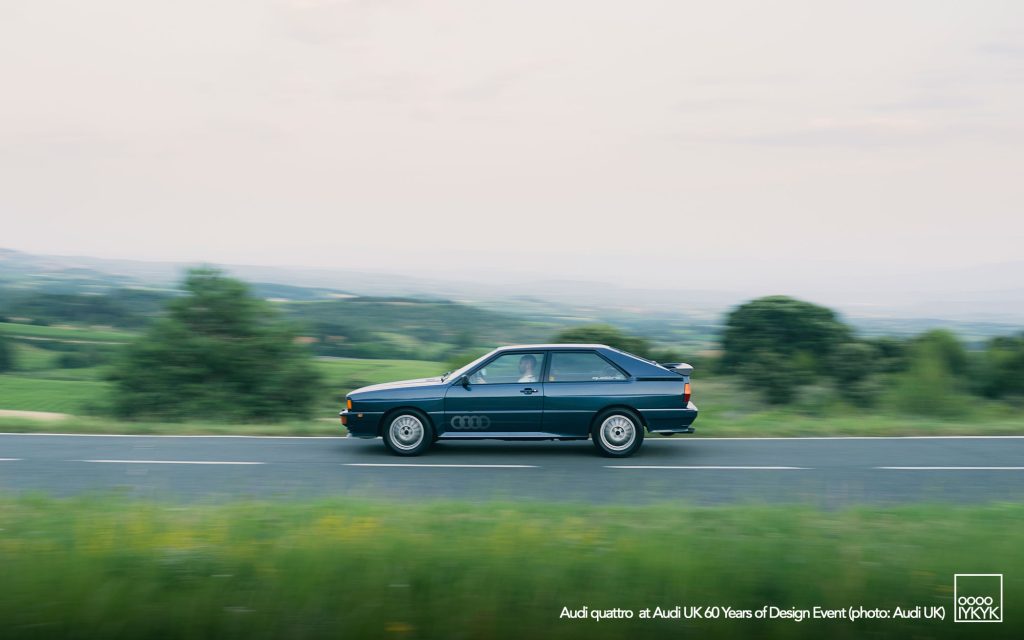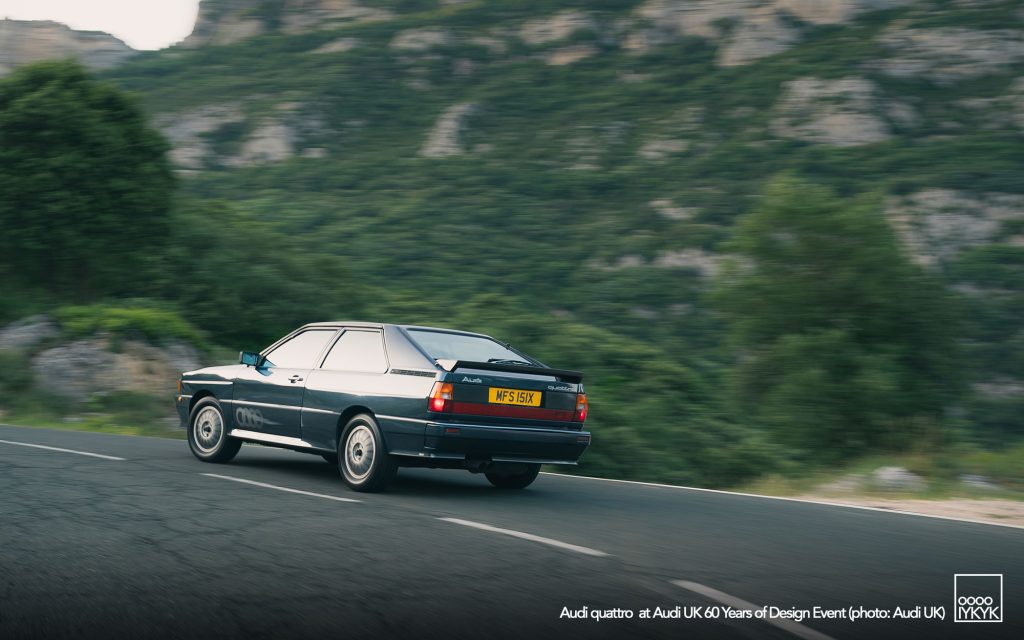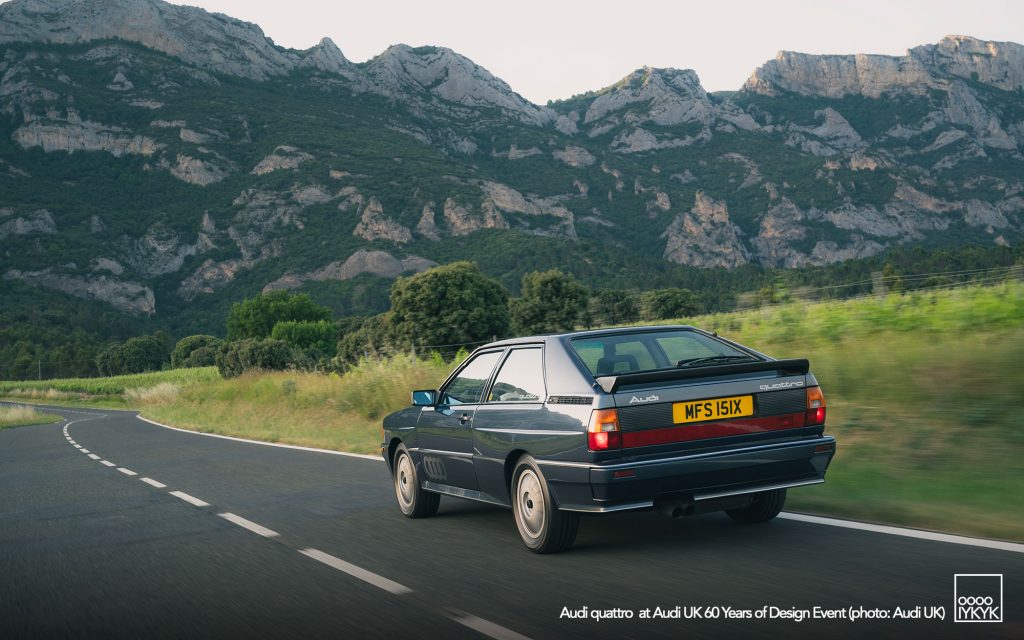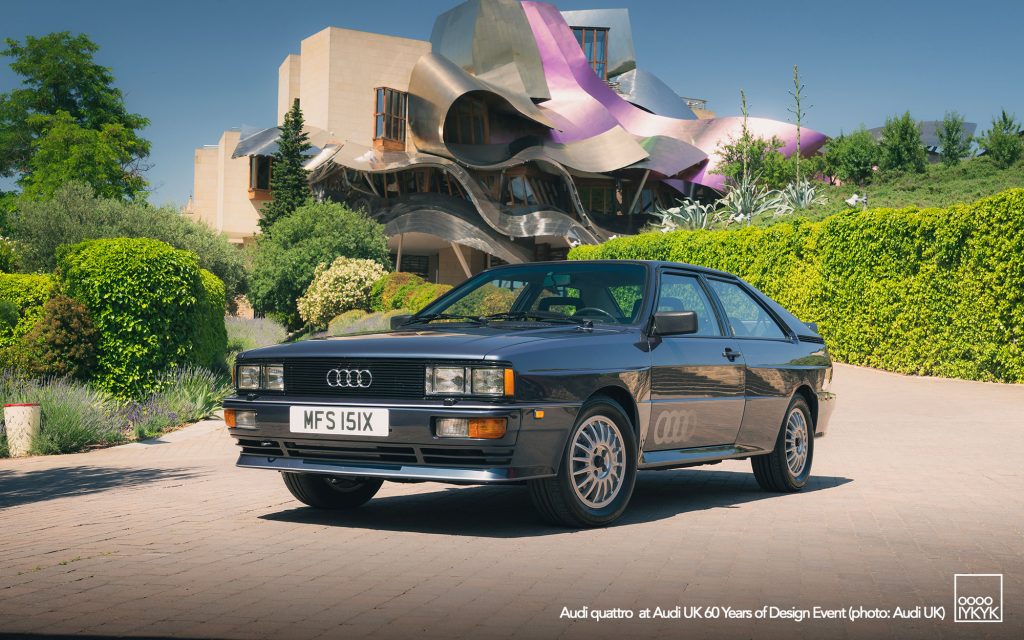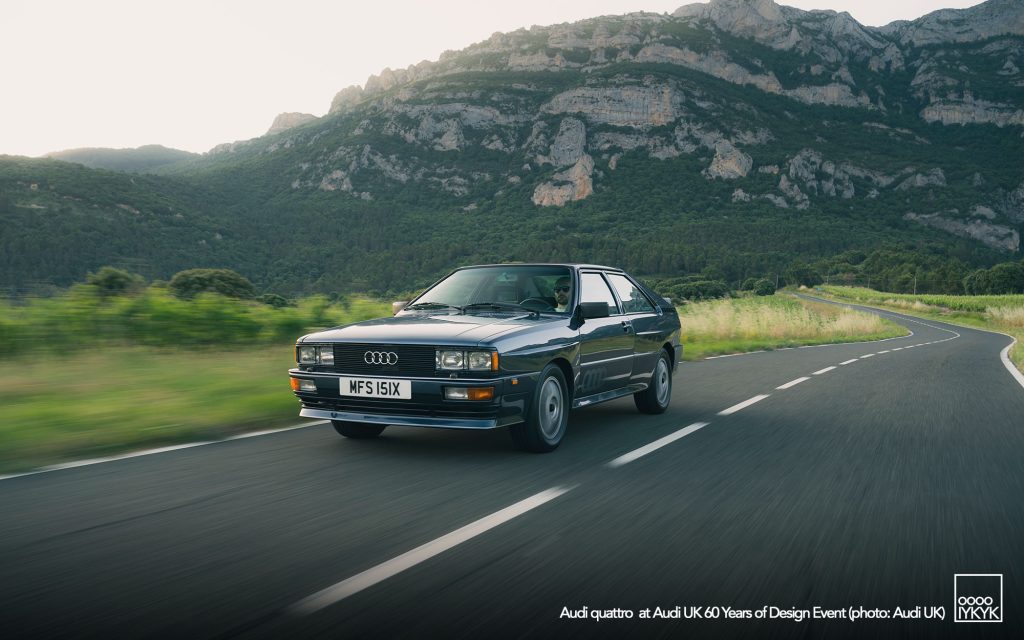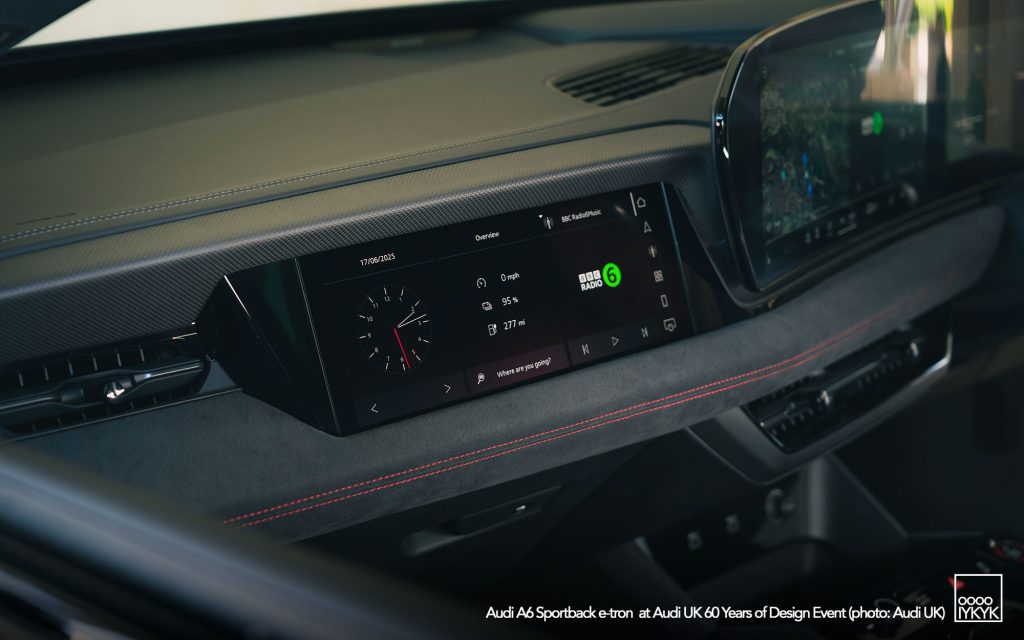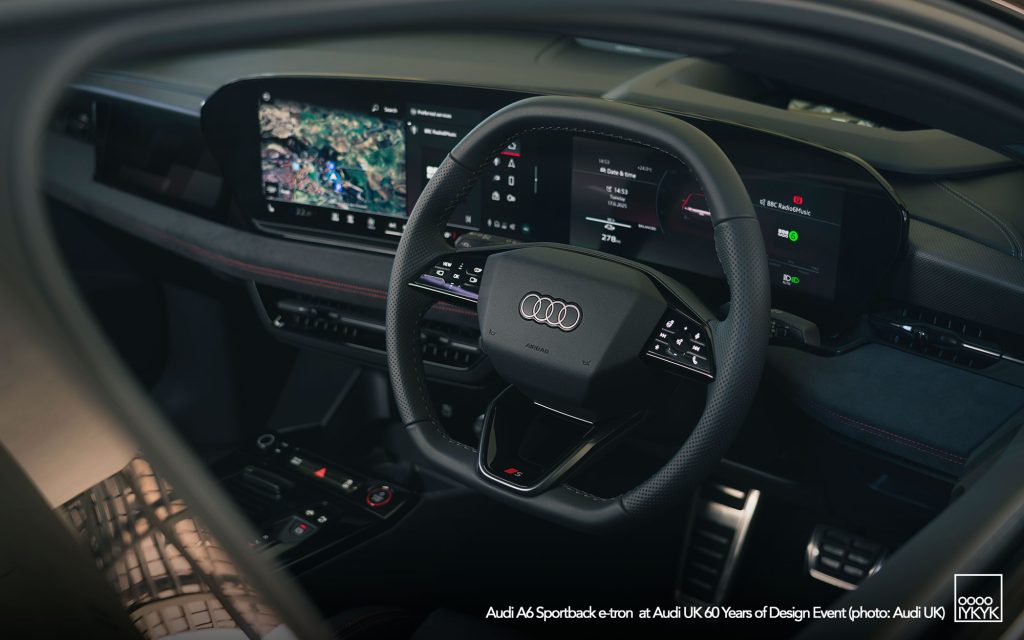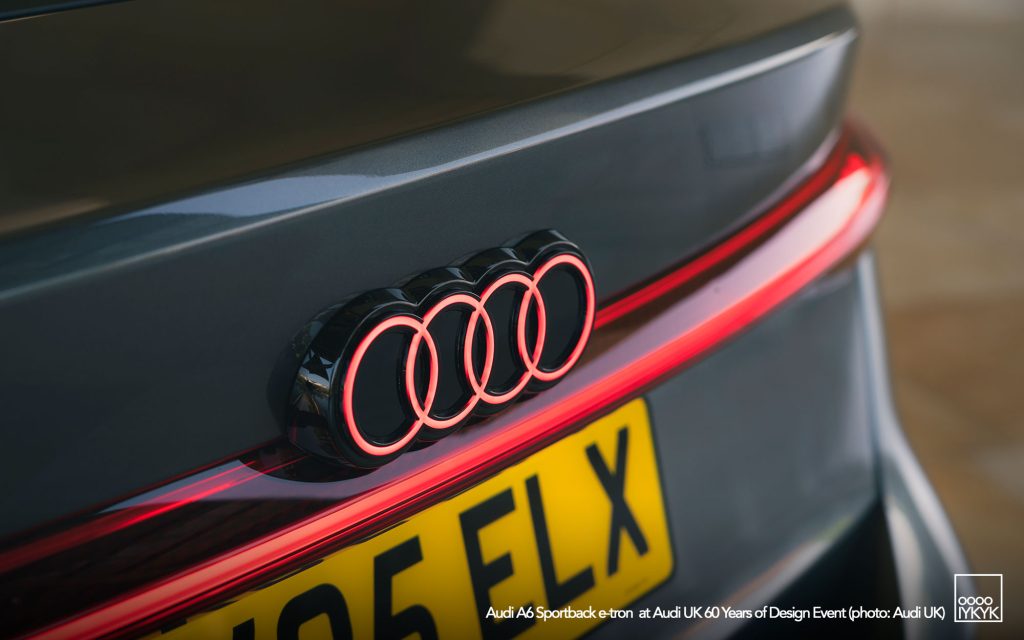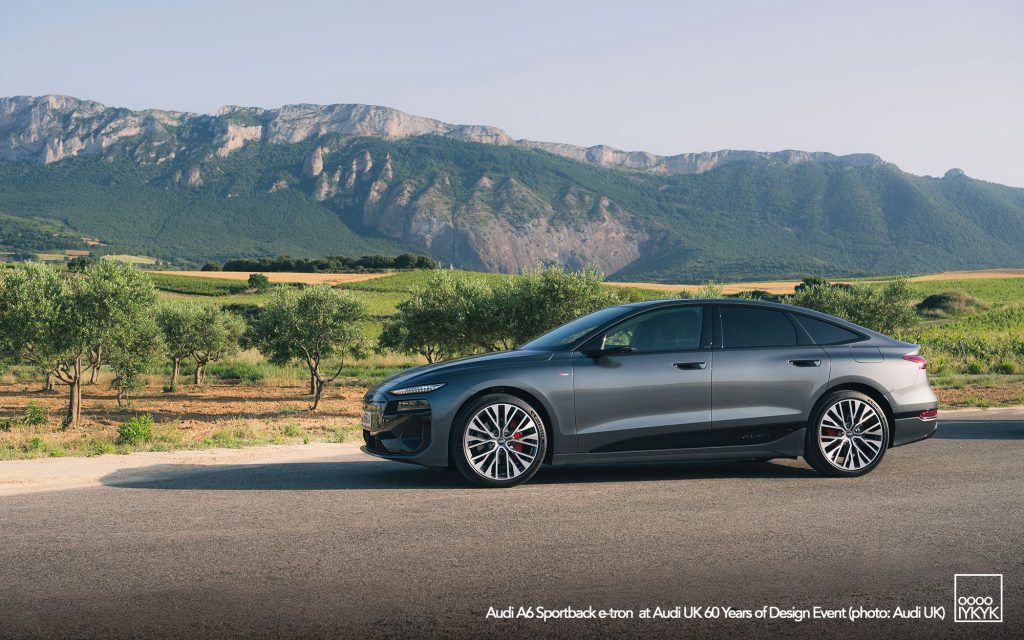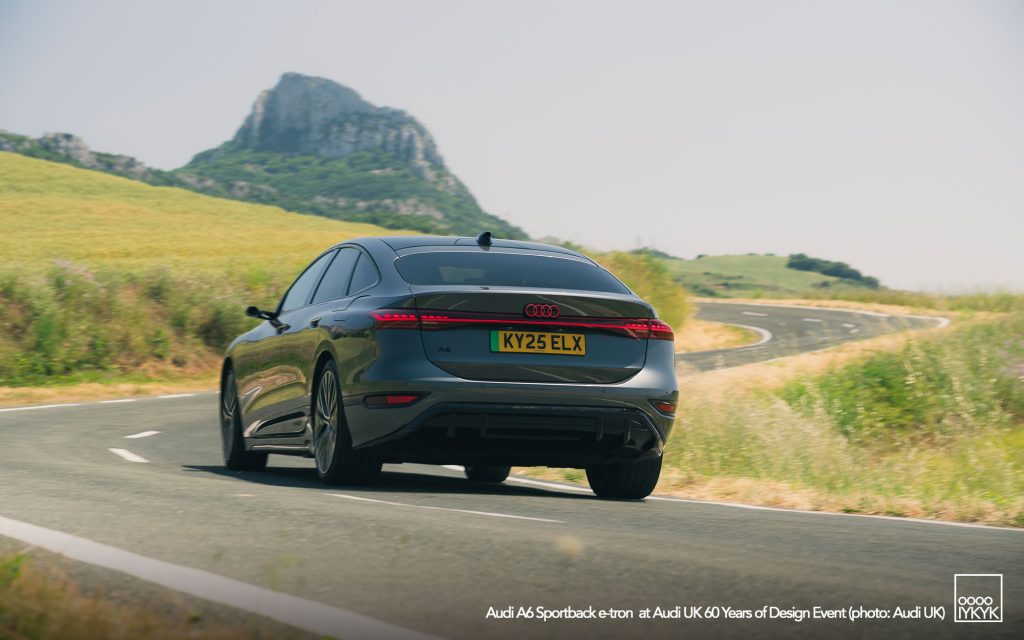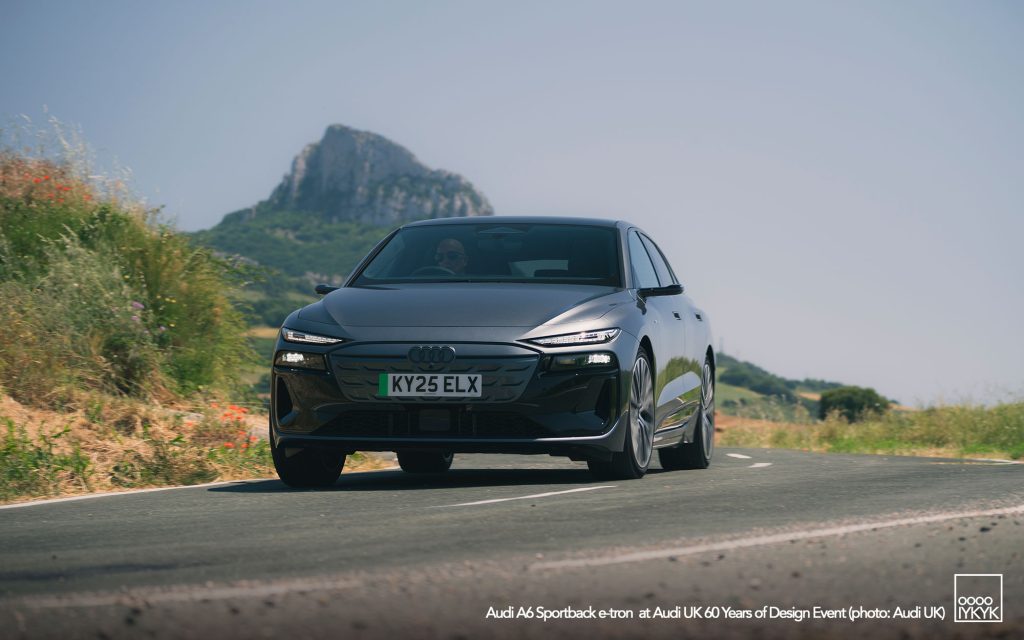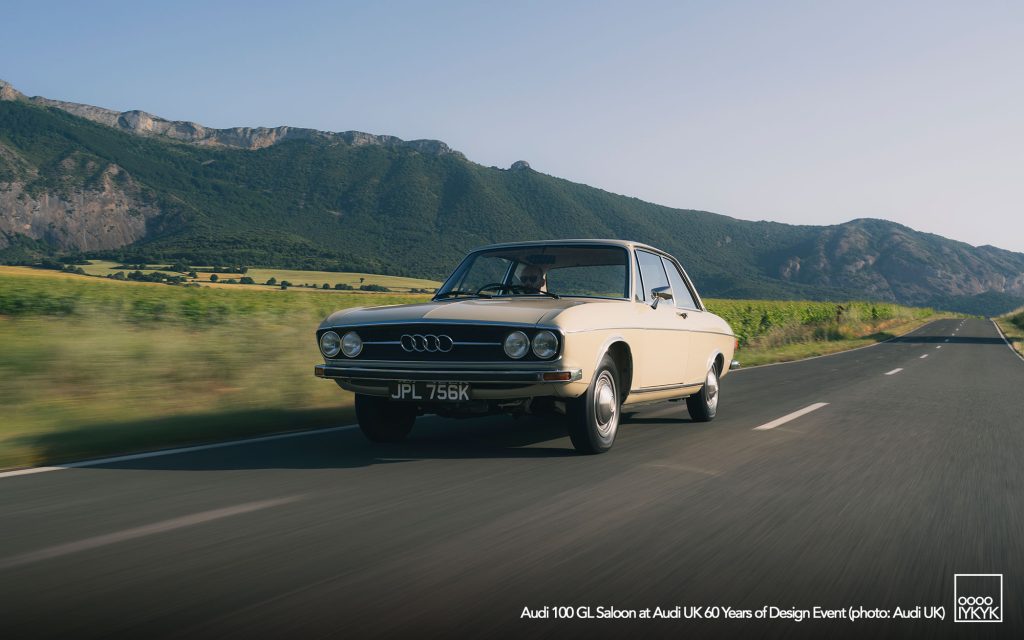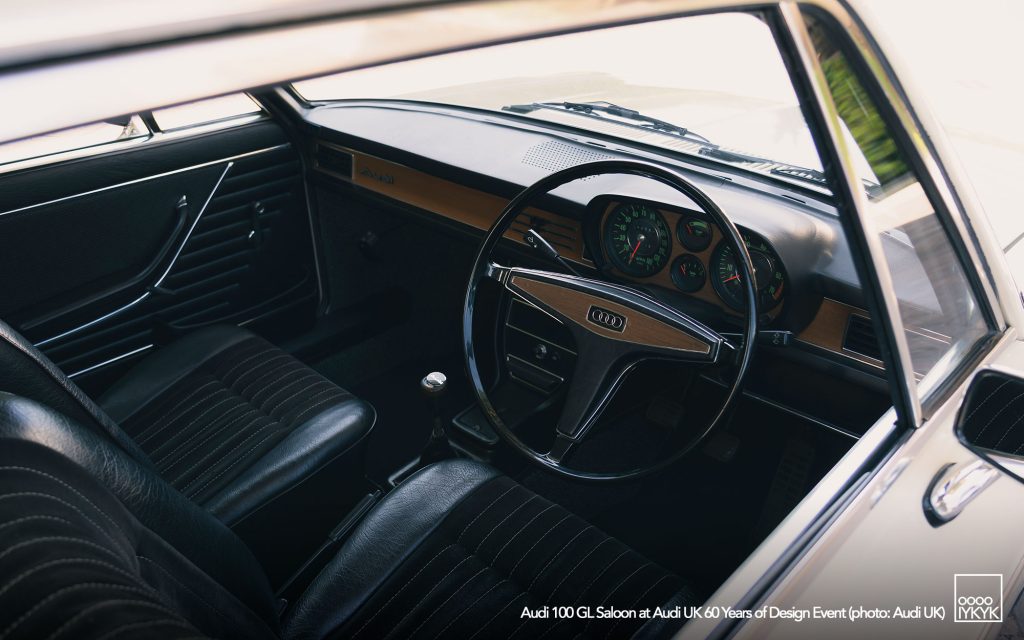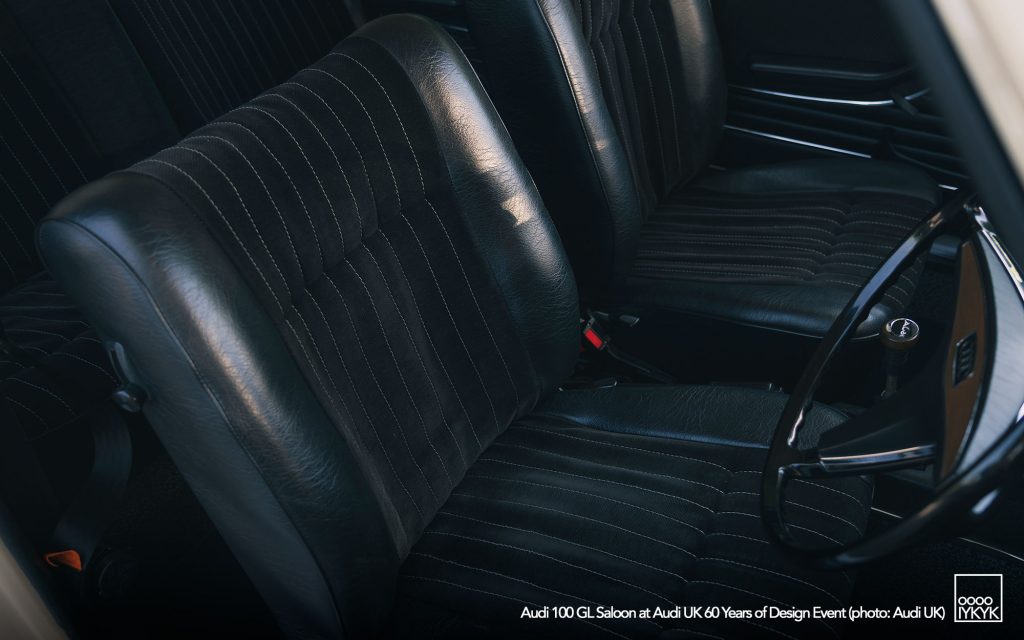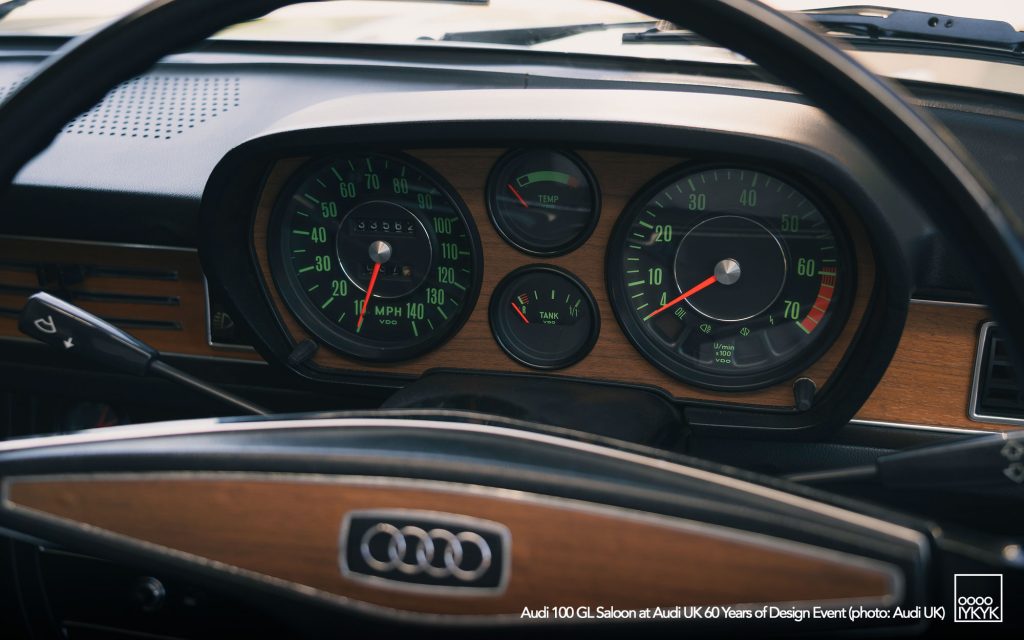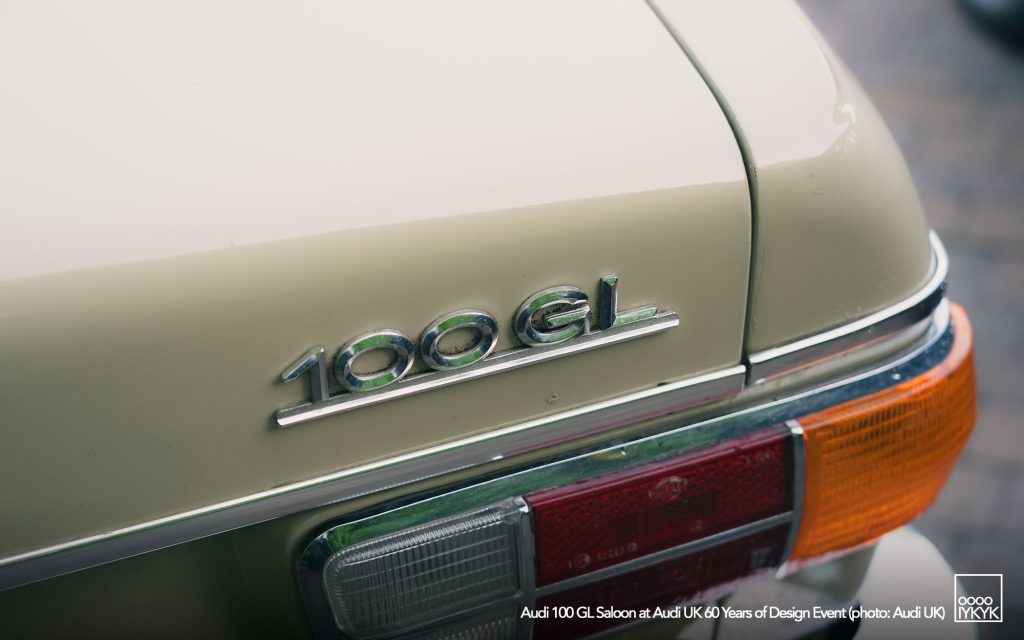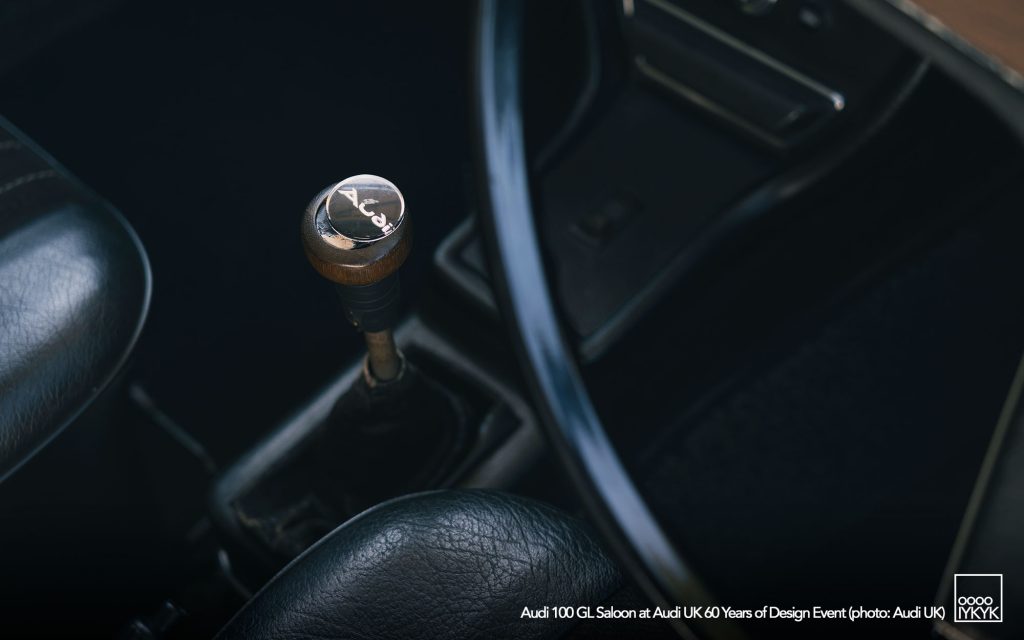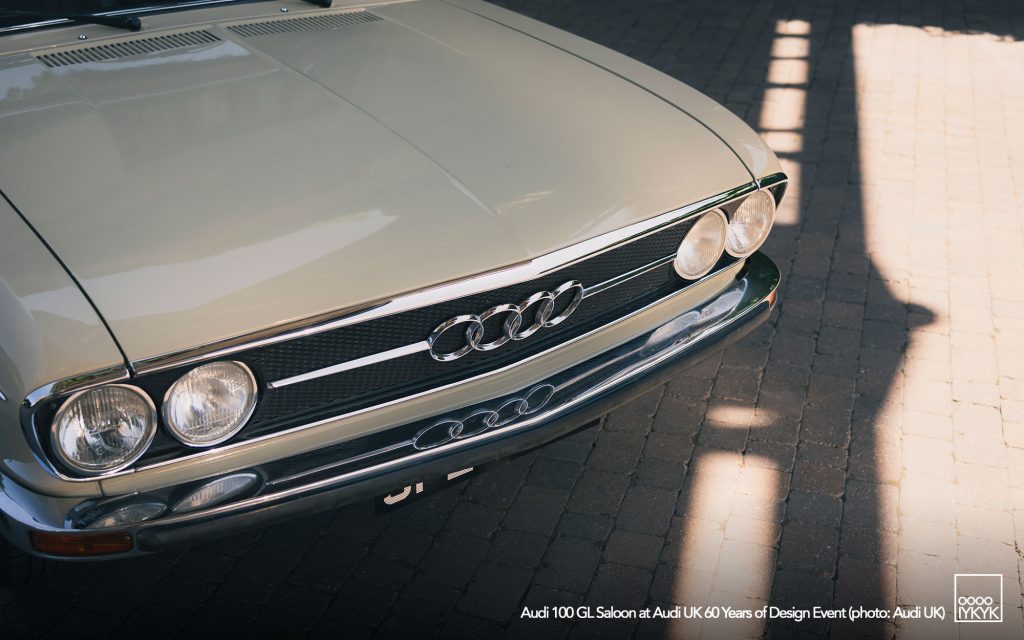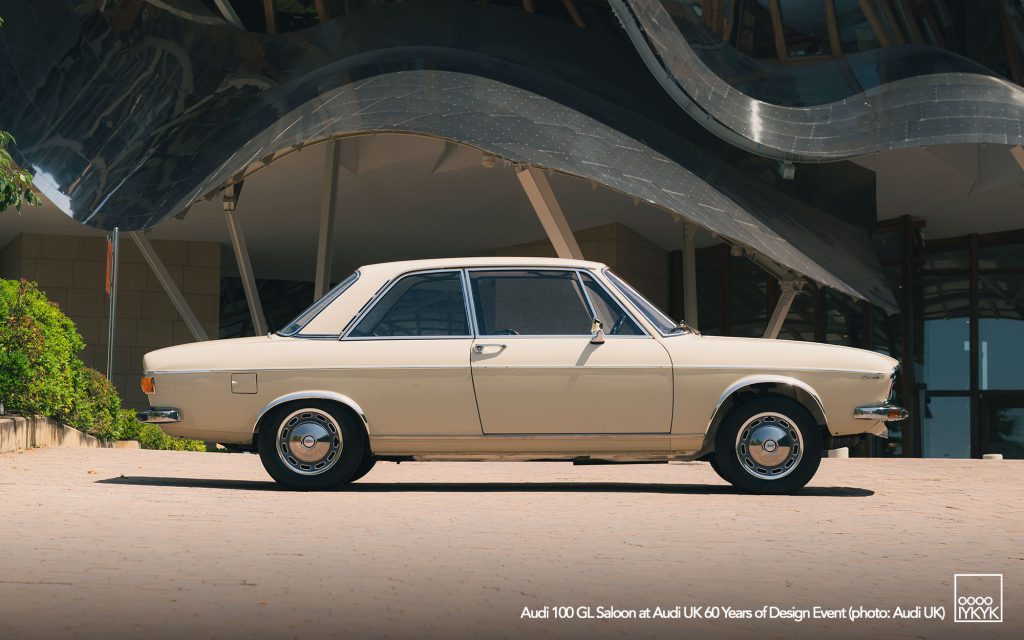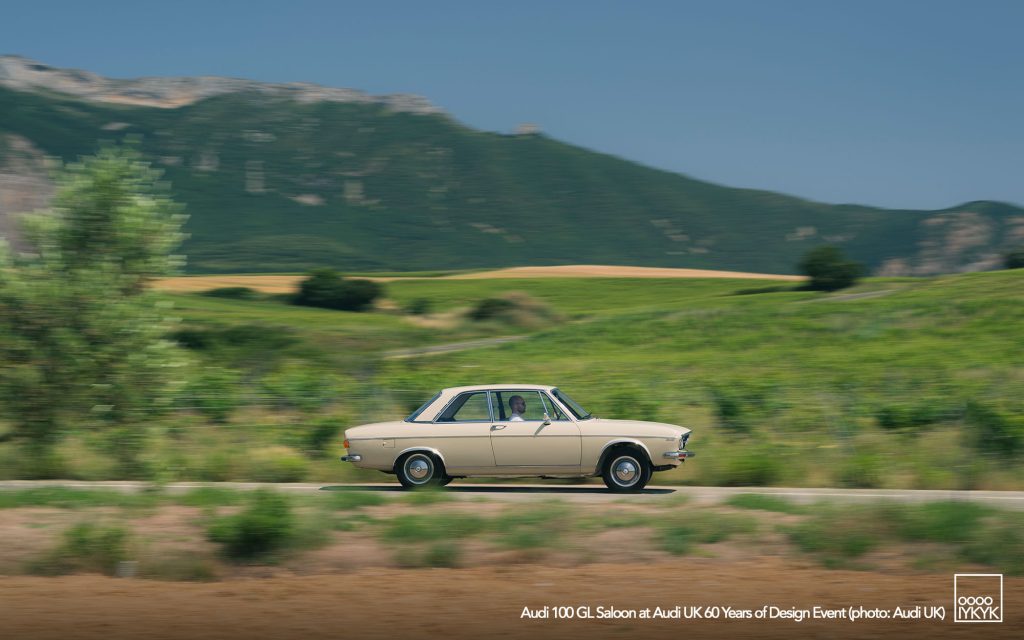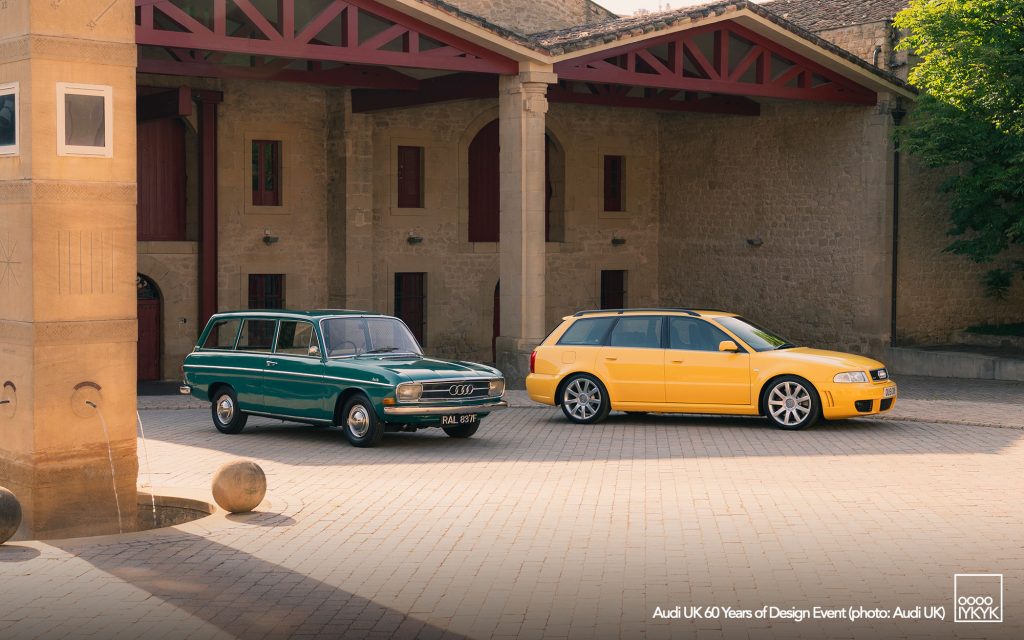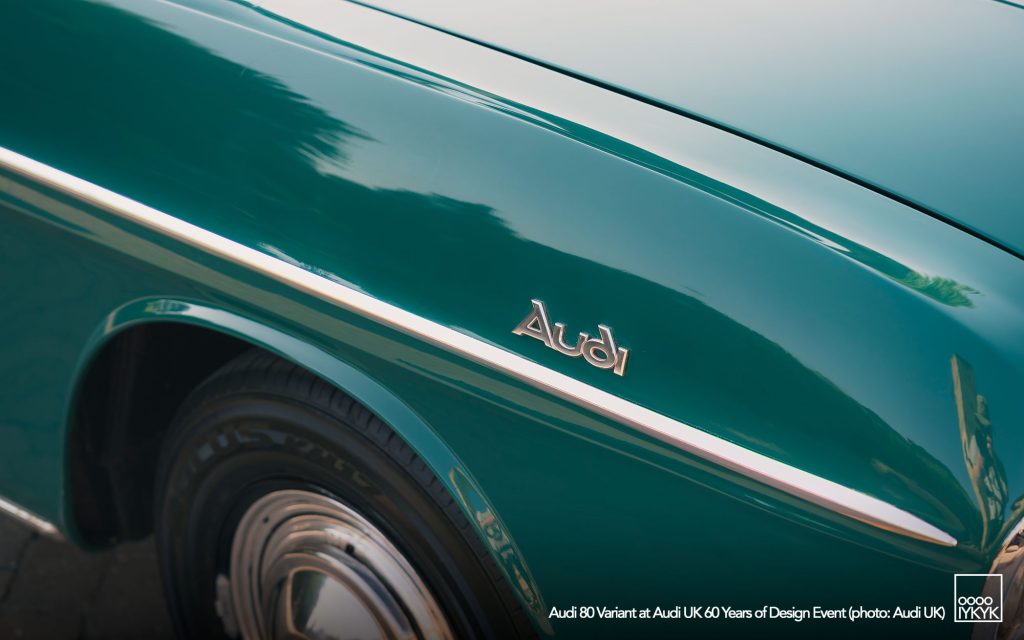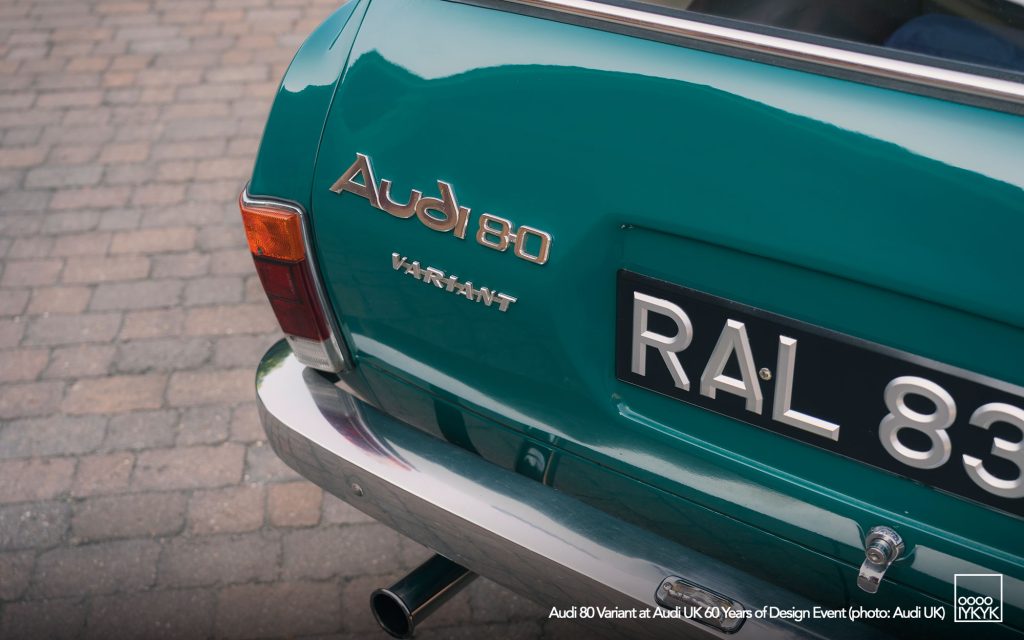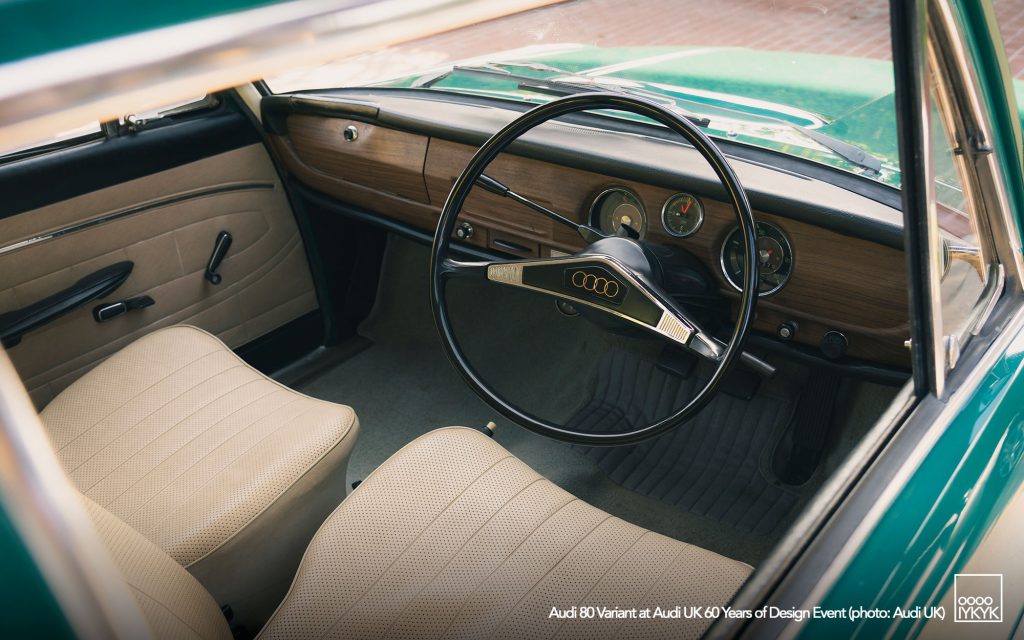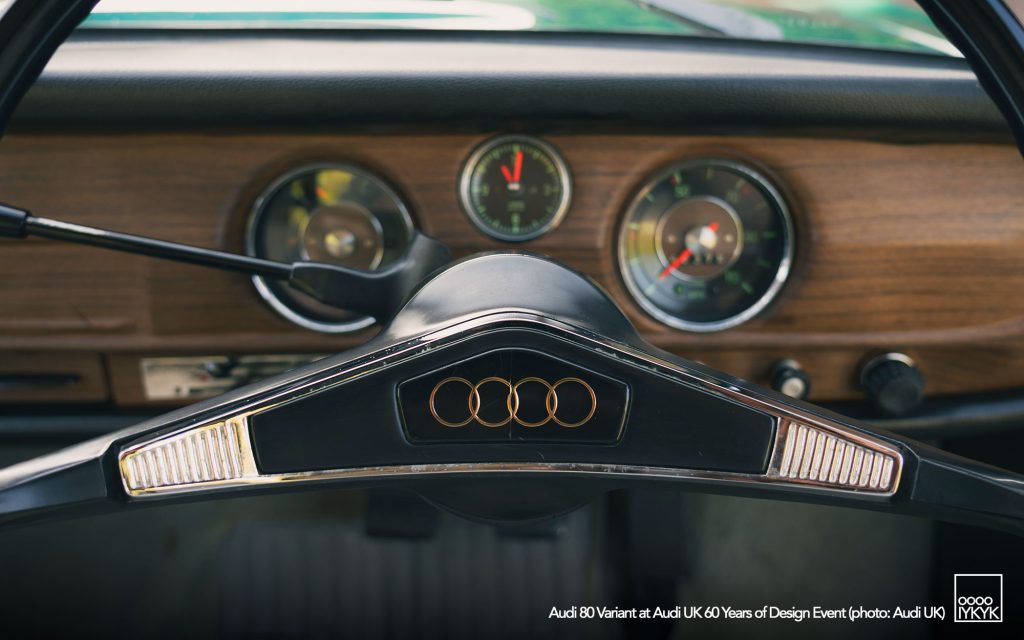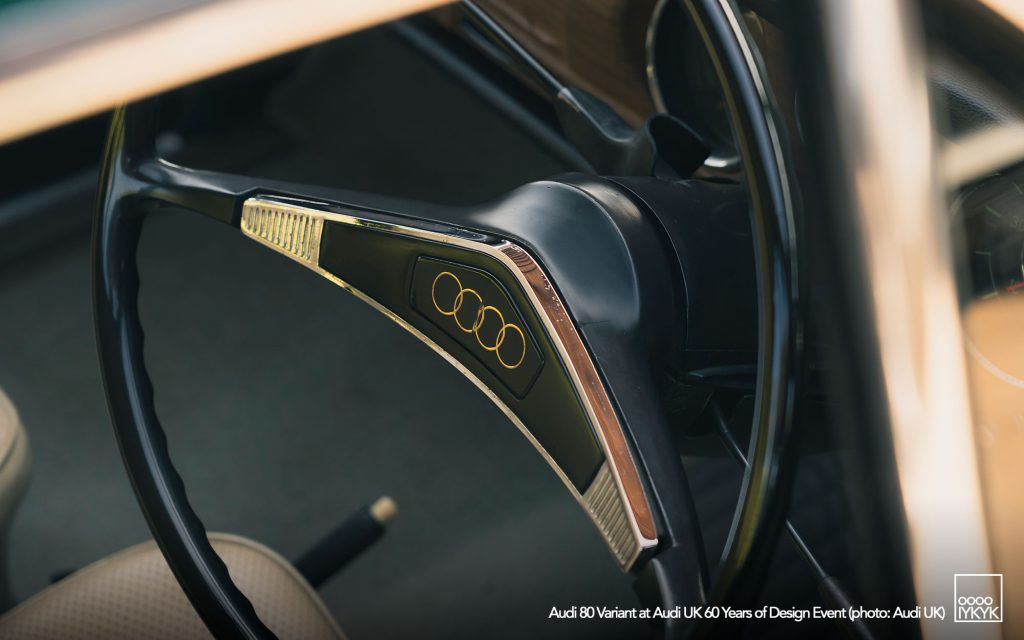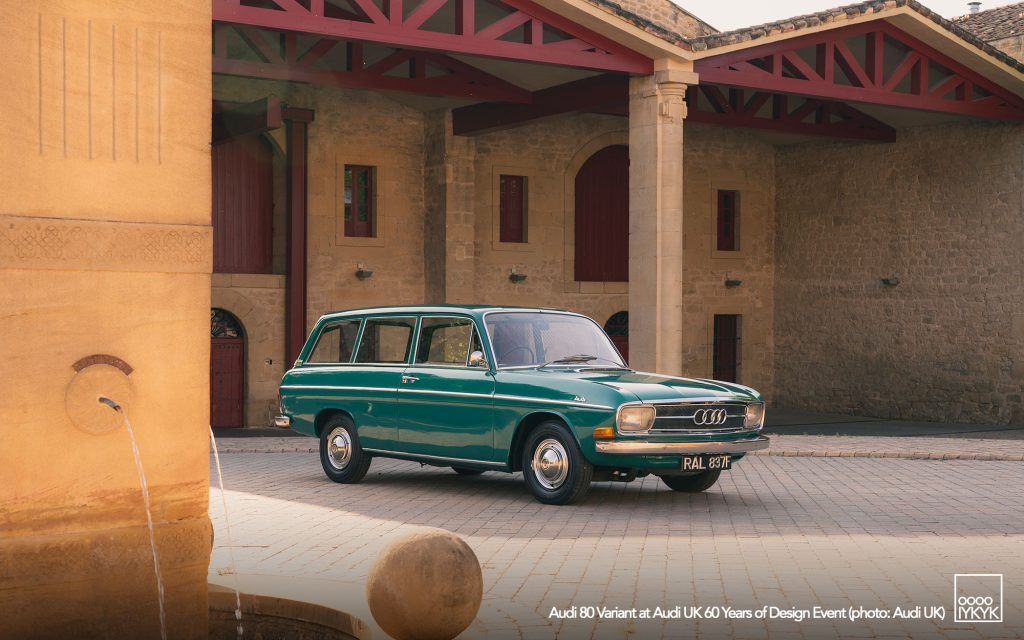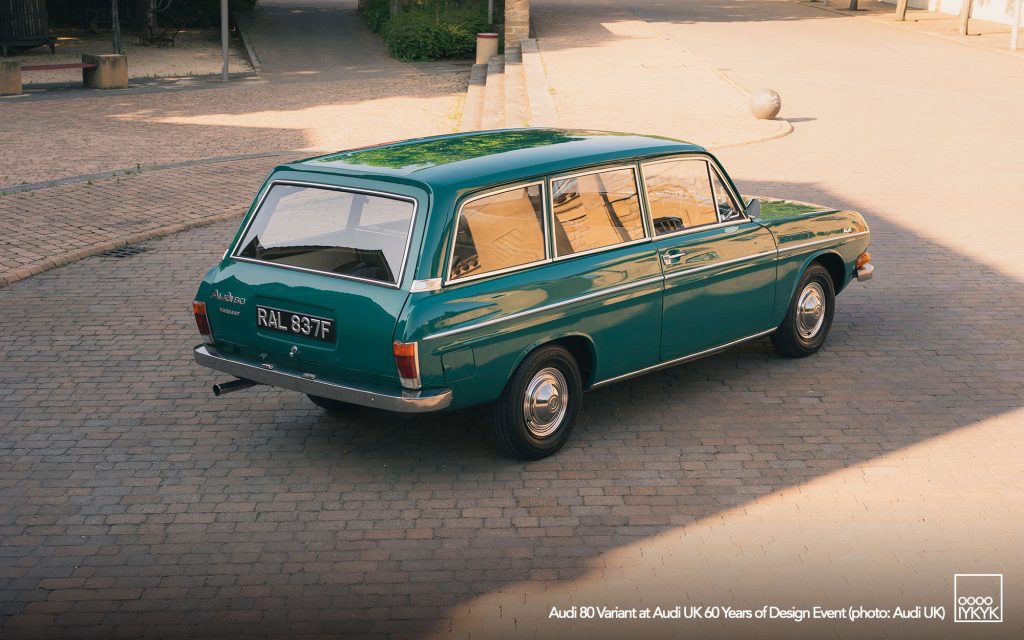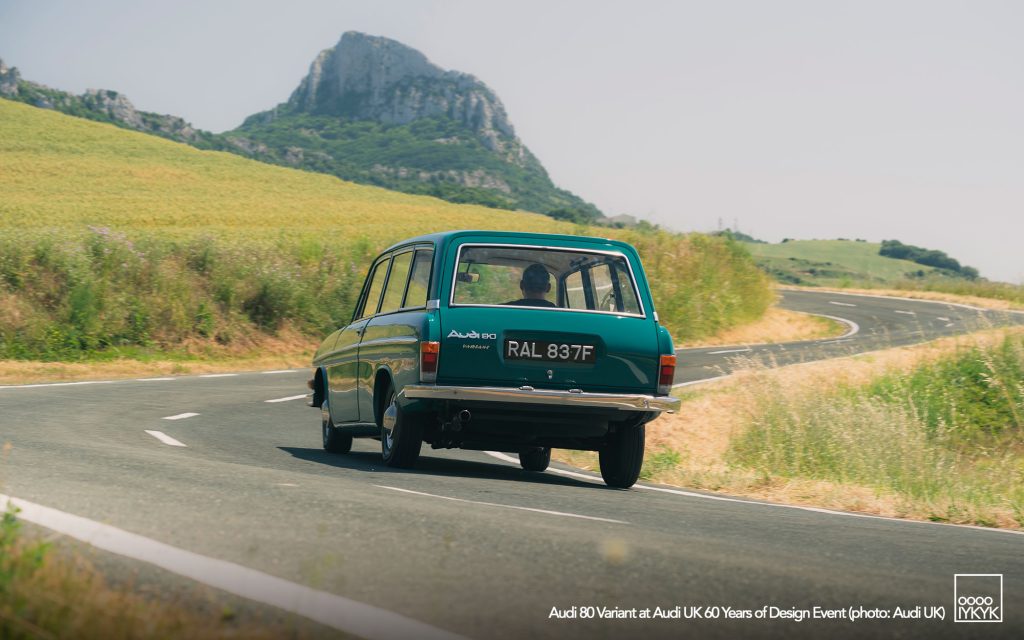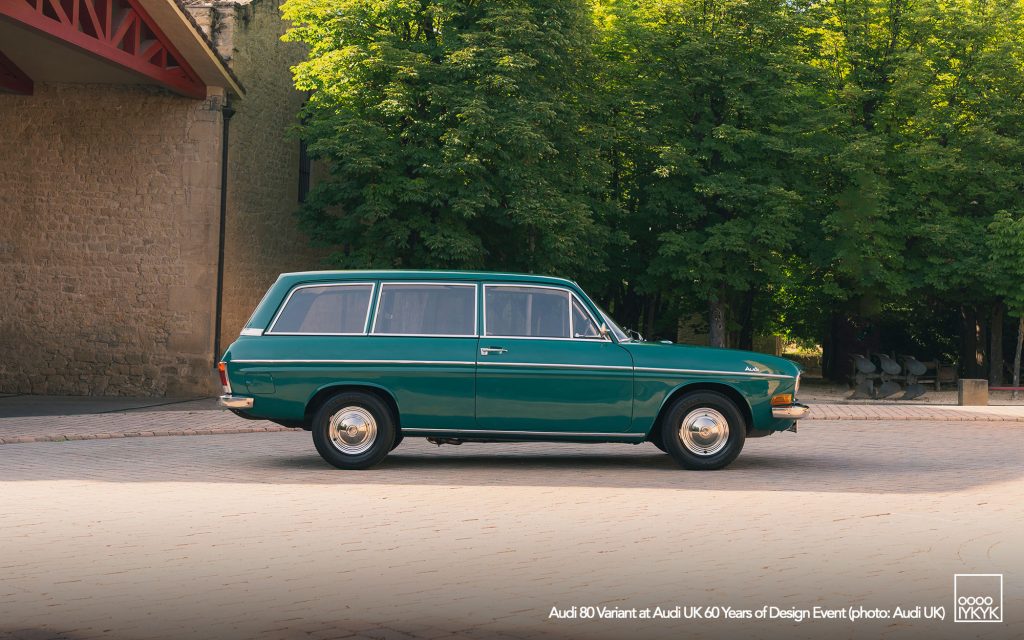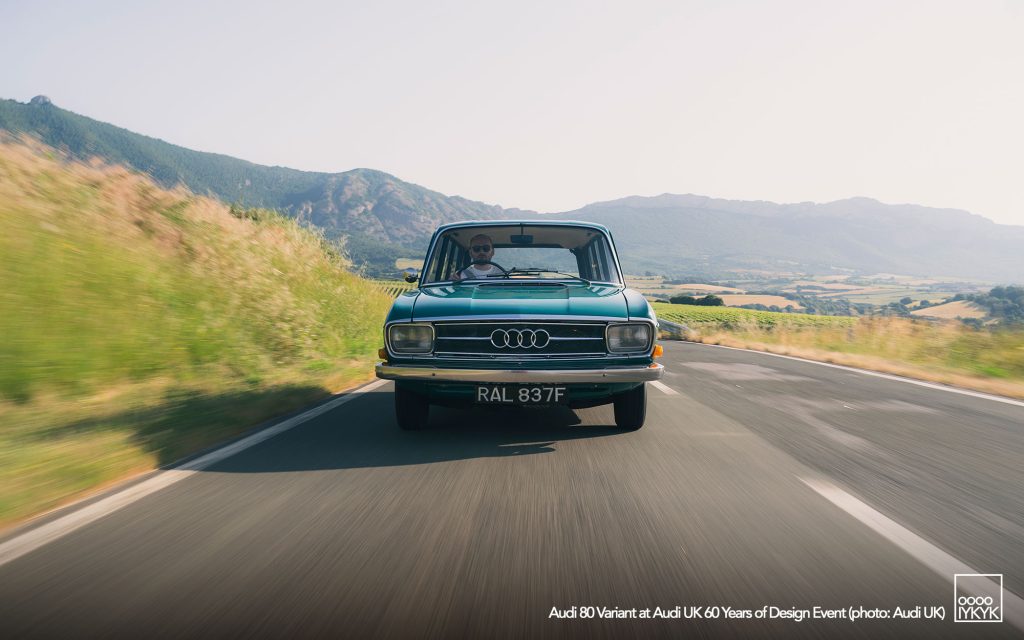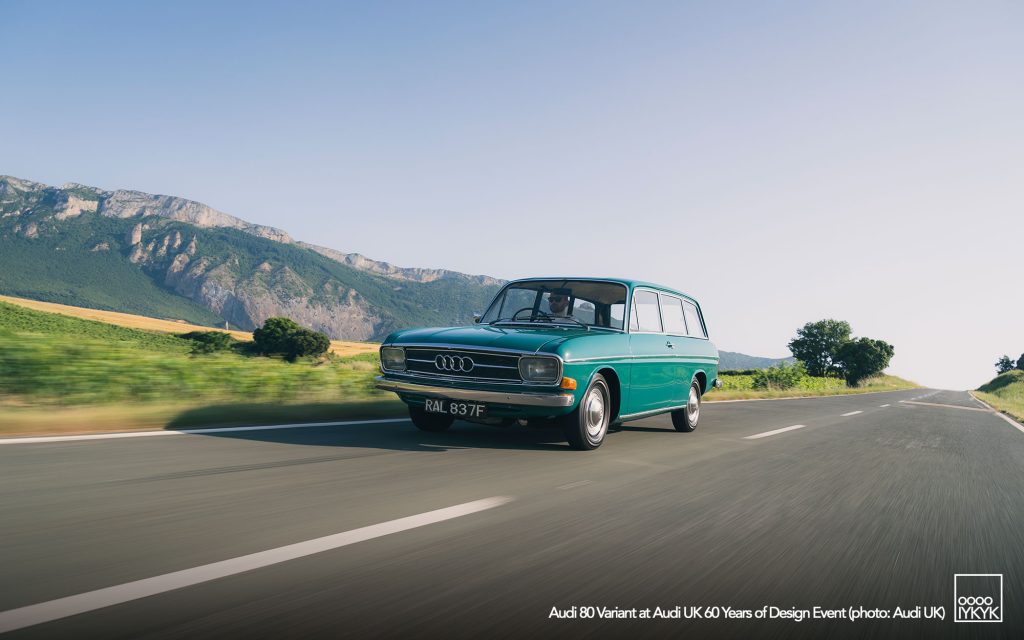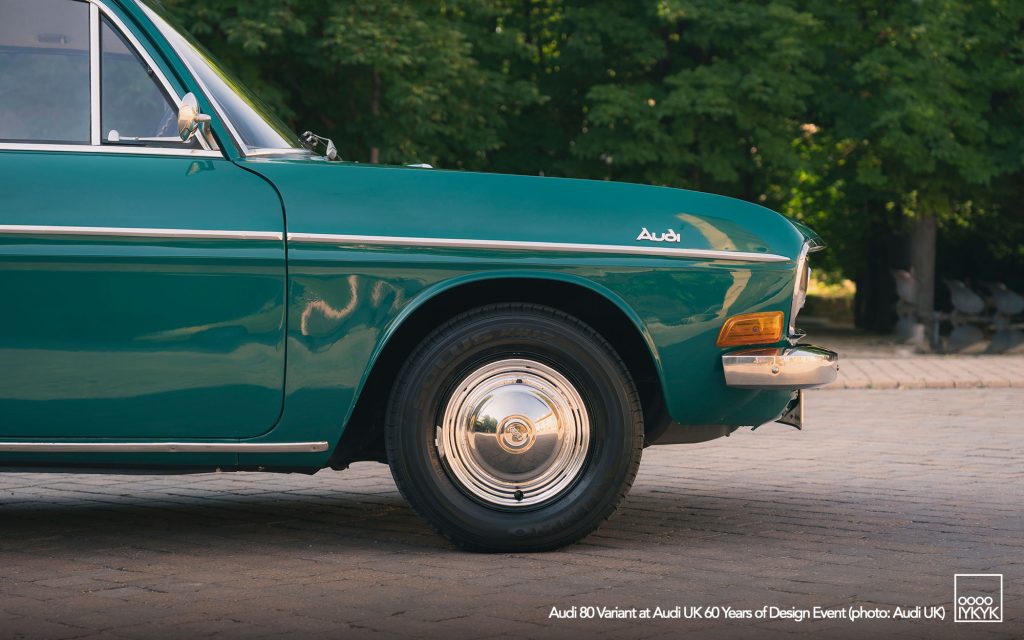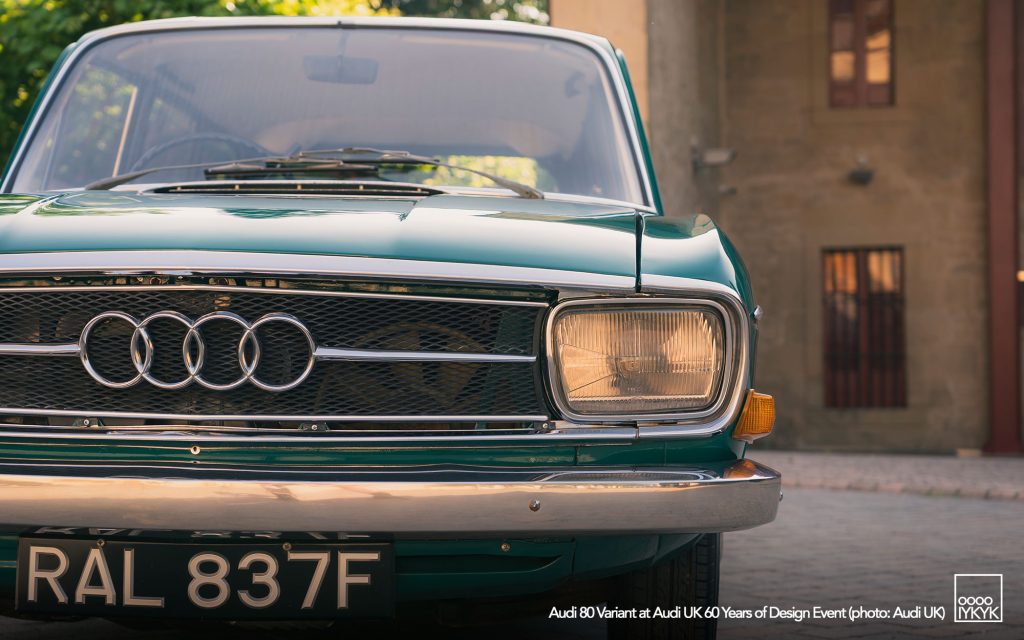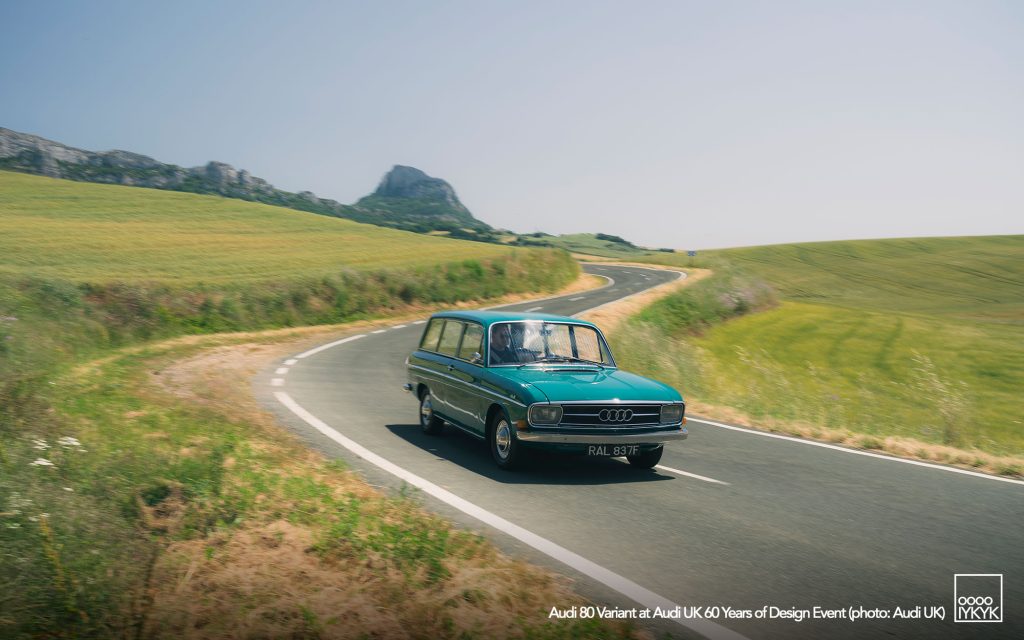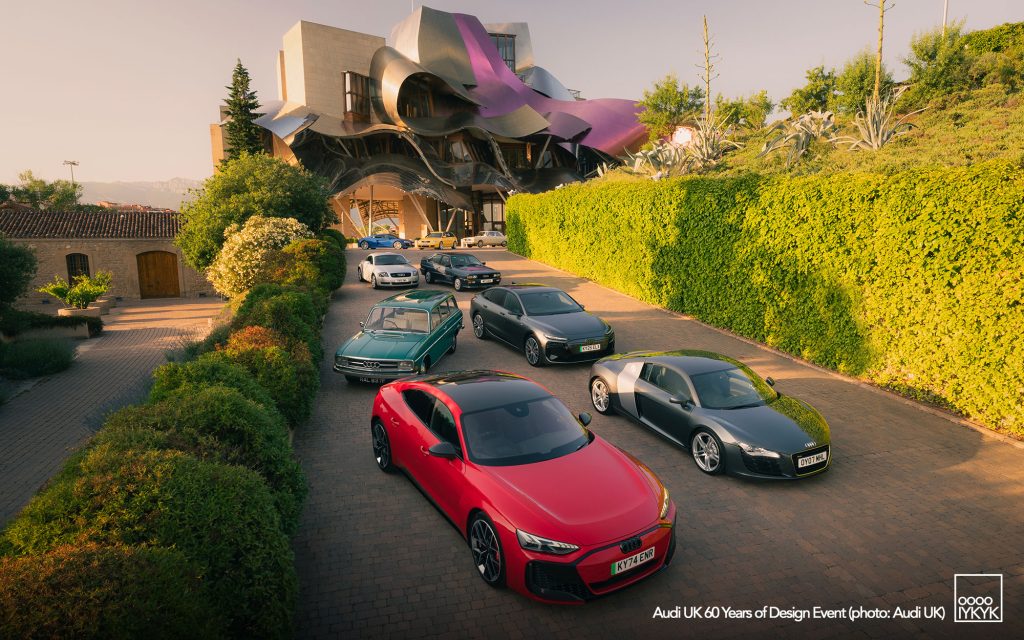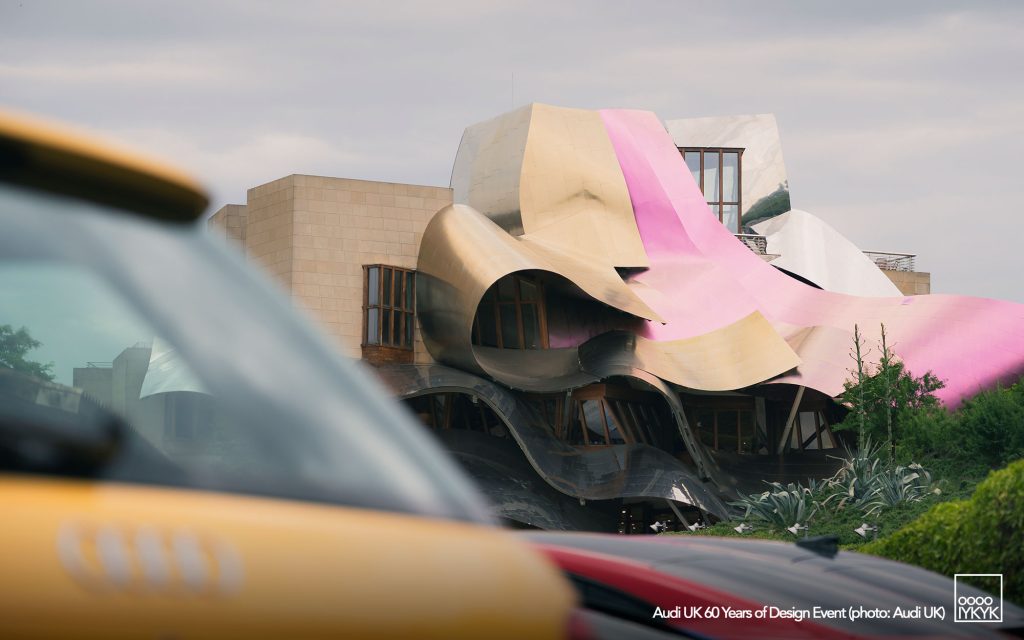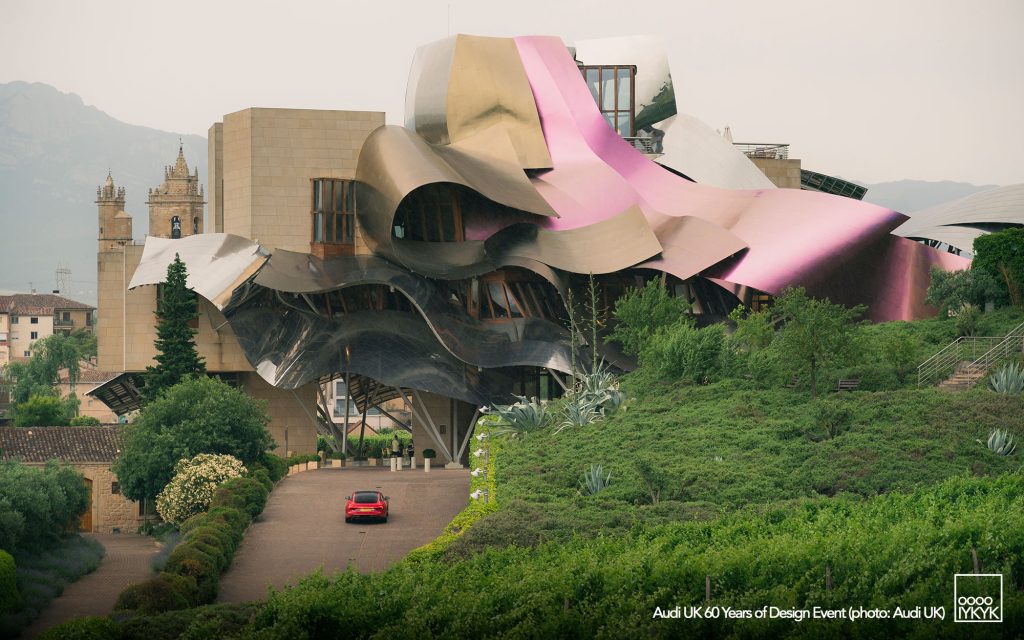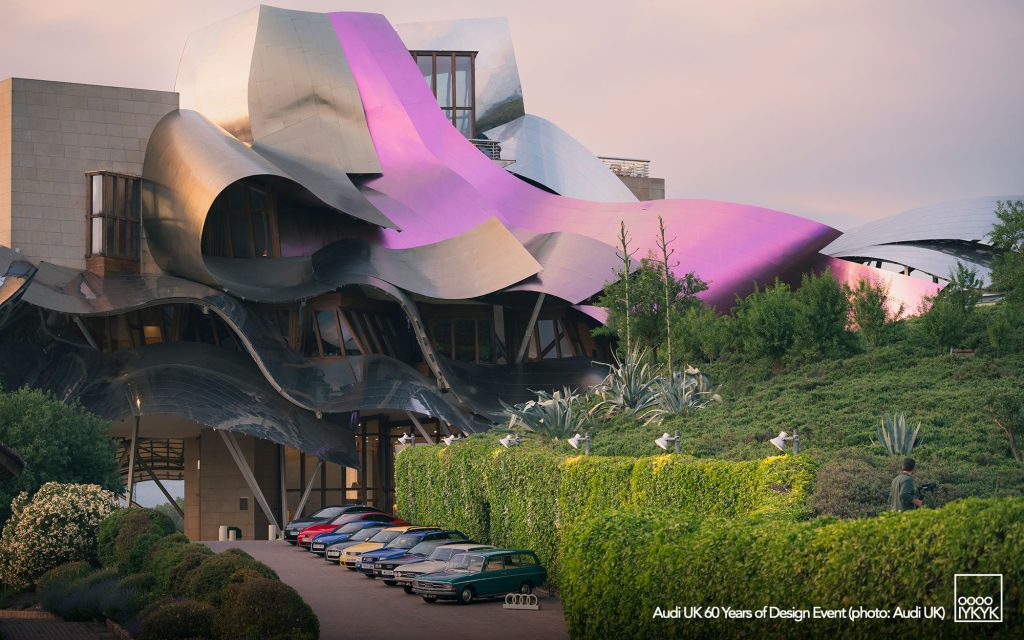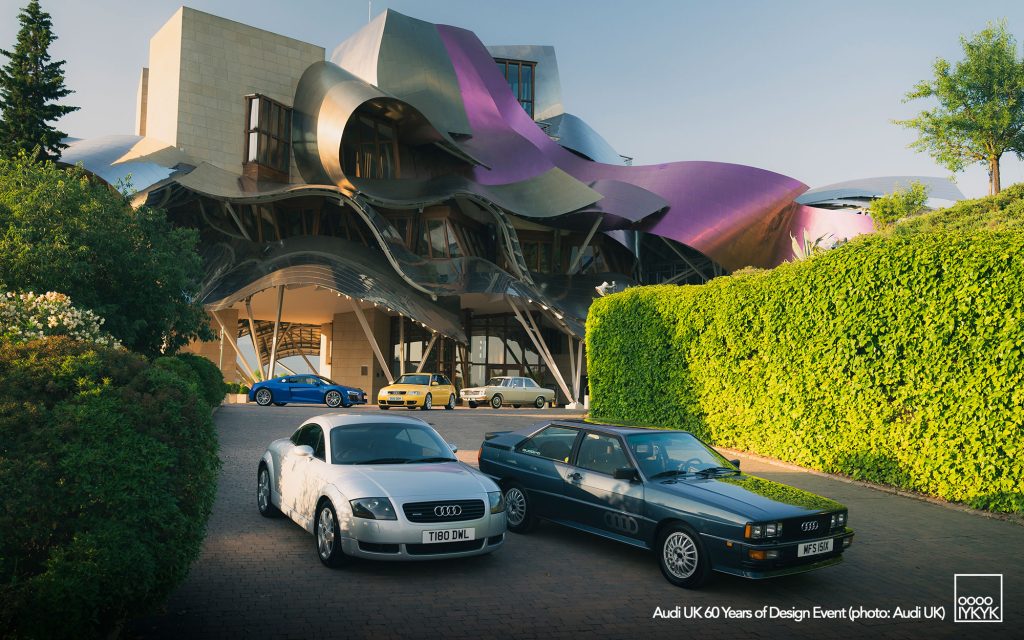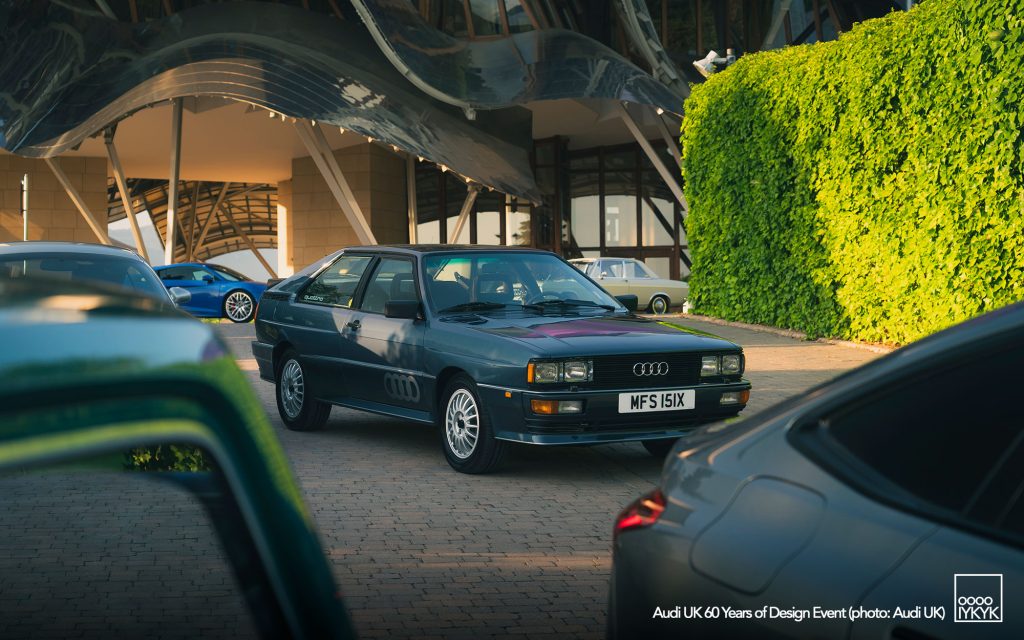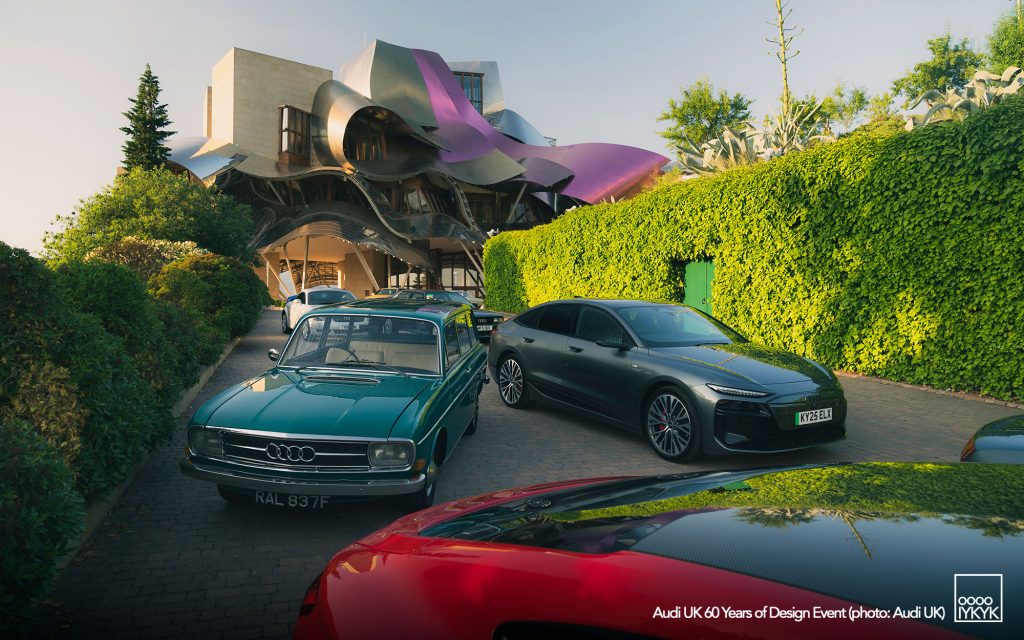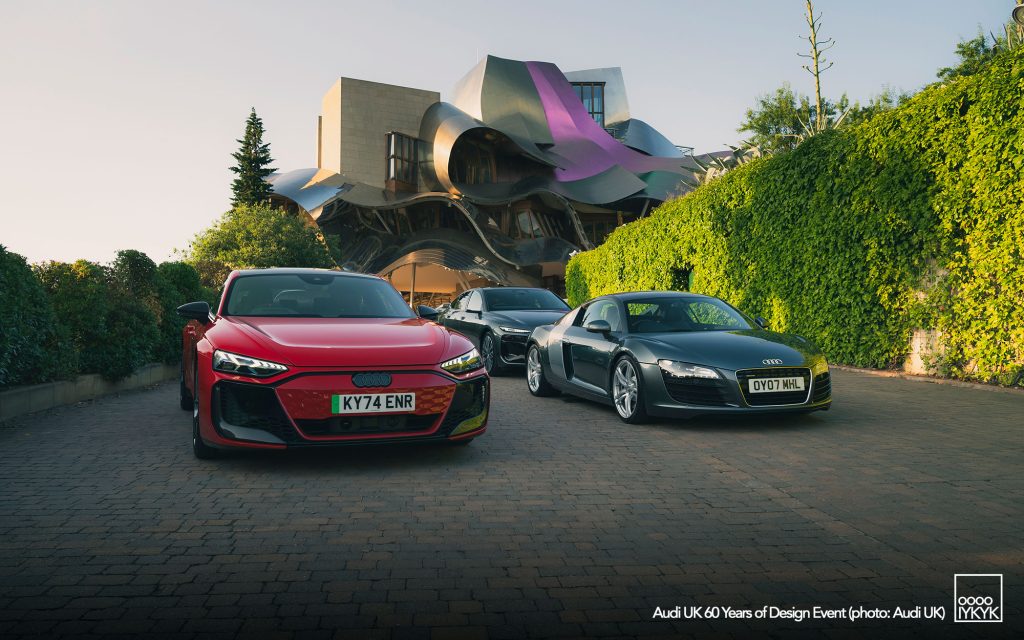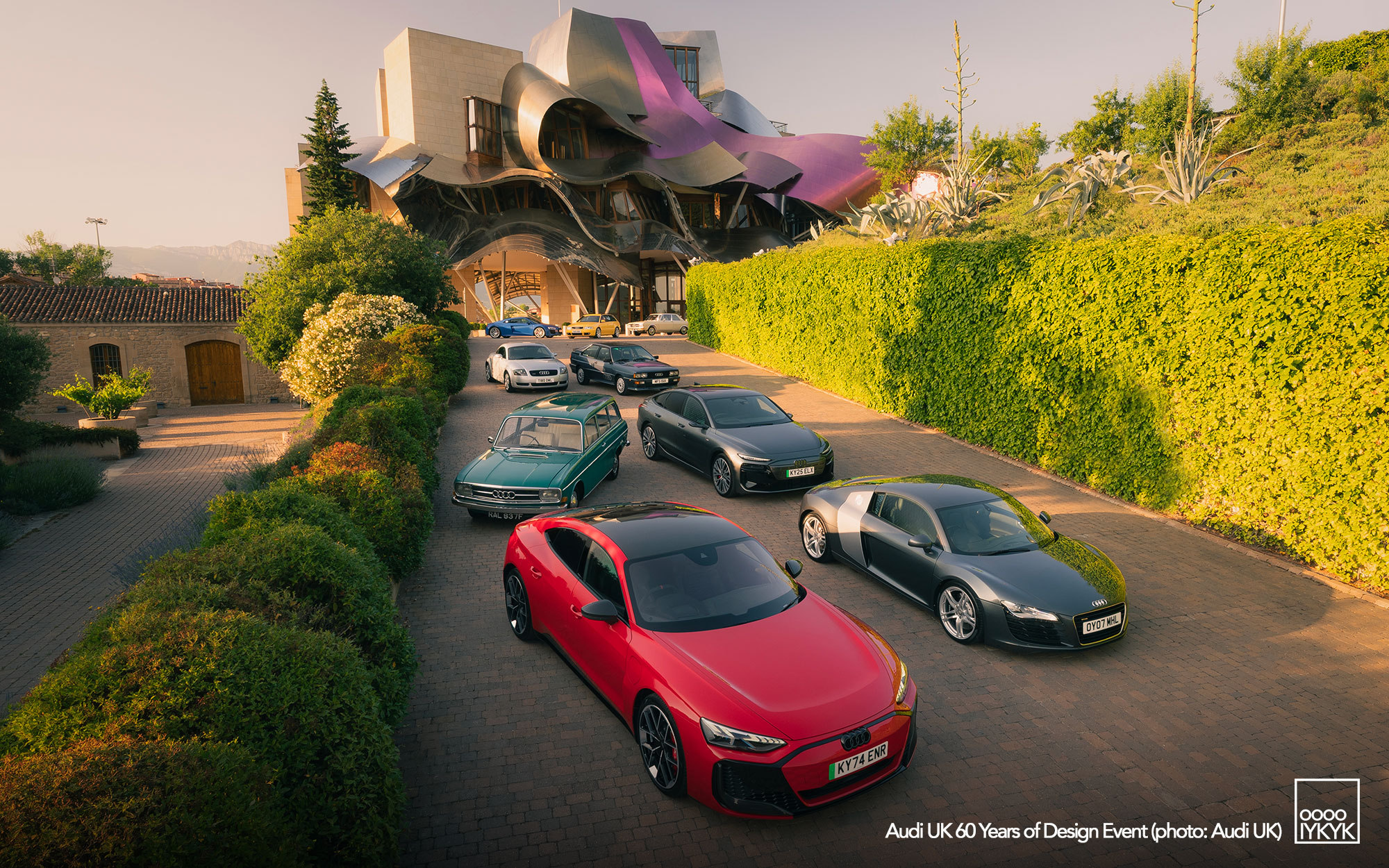You have to hand it to Audi UK. As a market distributor for Audi, the brand’s United Kingdom business unit has been a longtime proponent of Audi automobiles since the very beginning… and by very beginning we (and they) mean 60 years ago when, at the 1965 Frankfurt Motor Show, the brand reemerged from its postwar slumber and would ascend to its position as a credible premium marque amidst a highly competitive industry. In order to celebrate that, Audi UK planned a showcase event in Spain with Audi design team member Gary Telaak to help put it all into perspective.
At the heart of the celebration was a collection of drivable milestone models straight out of Audi UK’s heritage fleet. It’s here again that Audi UK shines as an example. While some other markets have gone so far as to sell of their fleets if they ever even had one at all, Audi UK has long maintained such a collection and pulled it out to drive home the brand’s tradition of technological and design progress. In Spain, this mean cars like the ur quattro, the TT (Mk1), both generations of R8, RS 4 B5, the original 80 Variant and modern entries like the A6 Sportback e-tron and latest RS e-tron GT.
‘
In this case, design was the main focus. “Design has always been a fundamental pillar of the Audi brand and core to our Vorsprung durch Technik ethos,” states Audi exterior designer Gary Telaak. “From the original Ur-quattro, through to the timeless TT coupe and recently launched A6 Sportback e-tron, Audi’s hallmark design cues and attention to detail are visible throughout. The next chapter in Audi design will remain faithful to the past.”
Back in 1965, a sedan known simply as “The Audi” celebrated its premiere on a show stand at that year’s Frankfurt IAA. That first car was technically an update of the F102, a model produced under the DKW badge that, unlike Audi, was one of the Auto Union brands that already resumed operations in the postwar era.
“Since its re-emergence in the Sixties Audi has firmly established a reputation for design that imaginatively looks to the future but always stands the test of time,” commented Audi UK Director José Miguel Aparicio. “We’re immensely lucky to be the custodians of cherished examples of many of the defining models that forged that enviable reputation on our Audi UK heritage fleet, and to have them with us in the Rioja region. The home of spectacularly innovative structures like the Guggenheim Museum and the Hotel Marques de Riscal, designed by legendary architect Frank O. Gehry, is a perfect setting in which to celebrate them and mark this important anniversary.”
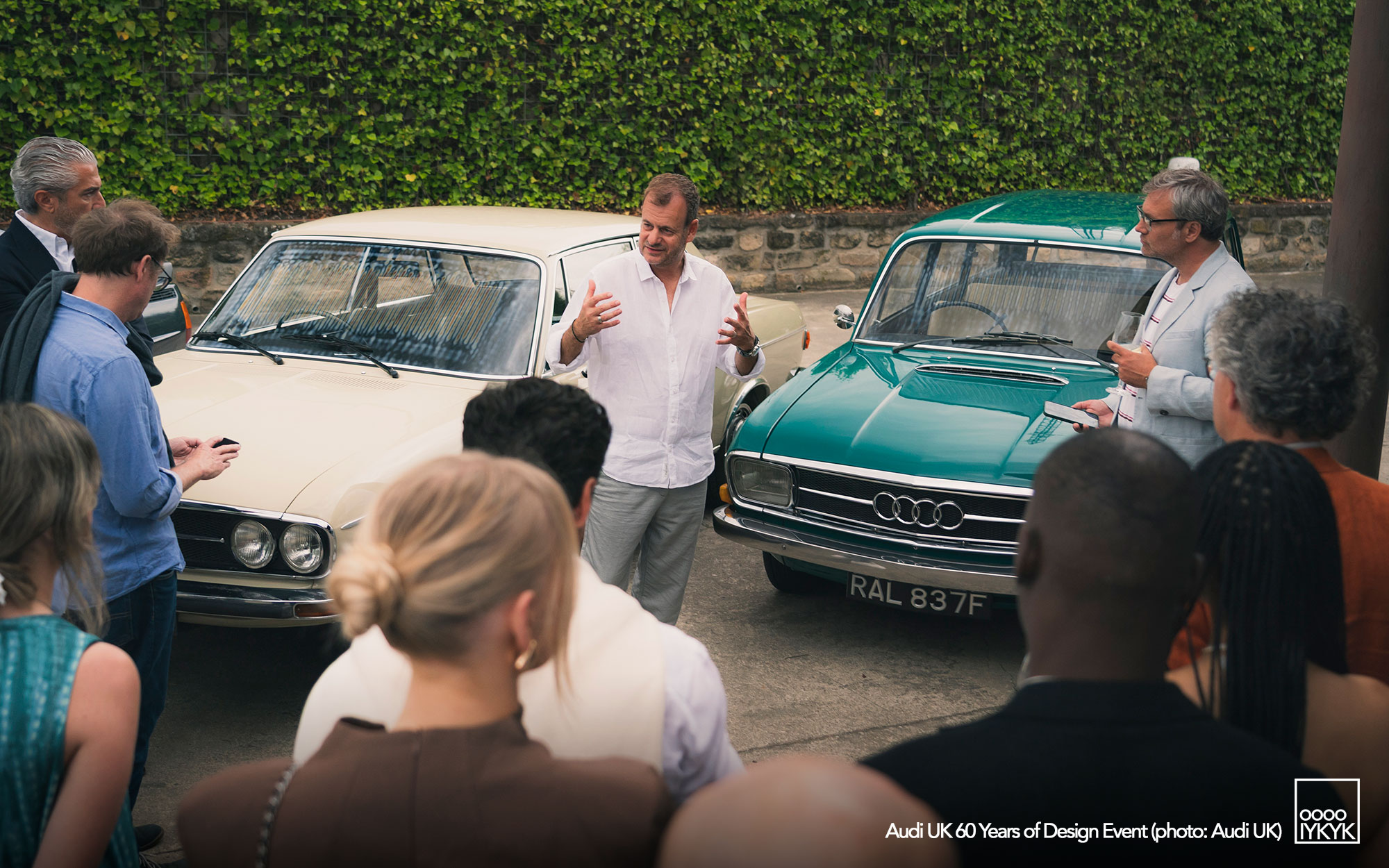
WHAT’S IN A NAME? AUDI
For many in the UK and elsewhere around the world at that time, the then dormant Audi brand name may have been less familiar. However, it wasn’t simply a new creation. The brand had been created in 1909 by its founder August Horch who was seeking an earlier fresh start having sold the Horch Motor Works off to a new owner. Given the English translation of “Horch” means “Hark” or “Listen”, Horch went with the Latin equivalent – “Audi”.
Eventually, Audi would be combined with Horch, DKW and another brand Wanderer to form Auto Union GmbH under the badge of the four rings – a chain with each link representative of one of these four brands. In those years, Auto Union would flourish, including championships in pre-war Grand Prix racing (a sport that would become Formula 1) by pioneering mid-engine race car design that were the creation of one Ferdinand Porsche.
However, like so many things, the onset of World War 2 would cause a halt to many things. Among them, Audi would cease production with the production end of its final pre-war product, the 920. The brand would enter into a period of dormancy that would last for a quarter of a century.
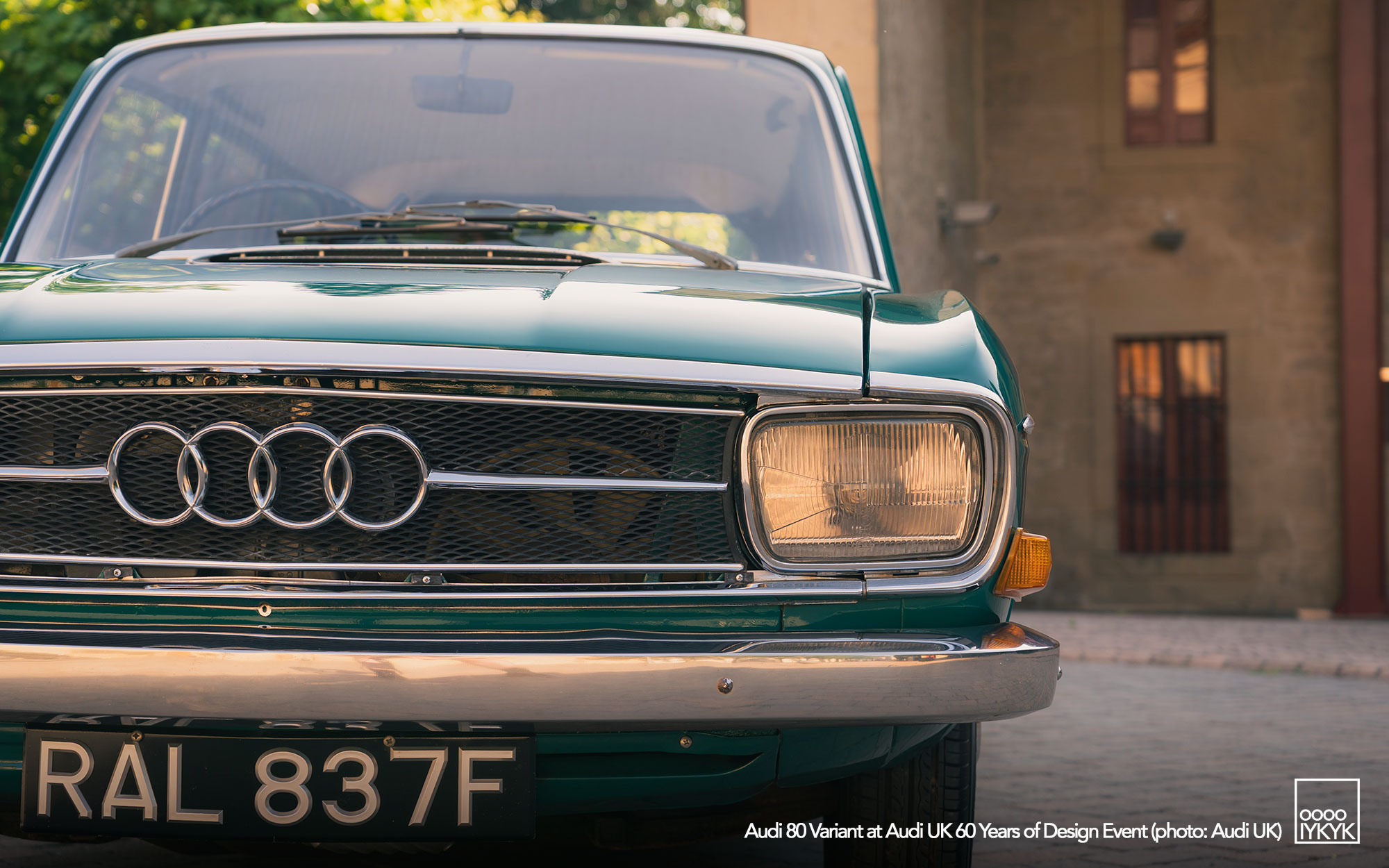
DAWN OF THE POSTWAR ERA
Then came 1965 and that Frankfurt Motor Show debut. That first car, “The Audi”, received a favorable response and would spawn the original 60, 75, 80 and Super 90 models – names derived from their power output following a popular pre-war tradition. Among them were two-door and four-door sedans and a Variant station wagon. It’s the latter, an 80 variant, that marked the oldest member of the Audi UK heritage fleet on hand in Spain.
It was the era in which that original 80 (pre-B1 or Fox that we think of as the first 80 today) was produced that the brand’s future again came into doubt. Audi’s then owner Mercedes-Benz sold the company, then known as Auto Union GmbH, to Volkswagen who purchased it mainly as a play to help diversify and create new models that would help VW progress beyond the air-cooled era so dominated by the original Beetle.
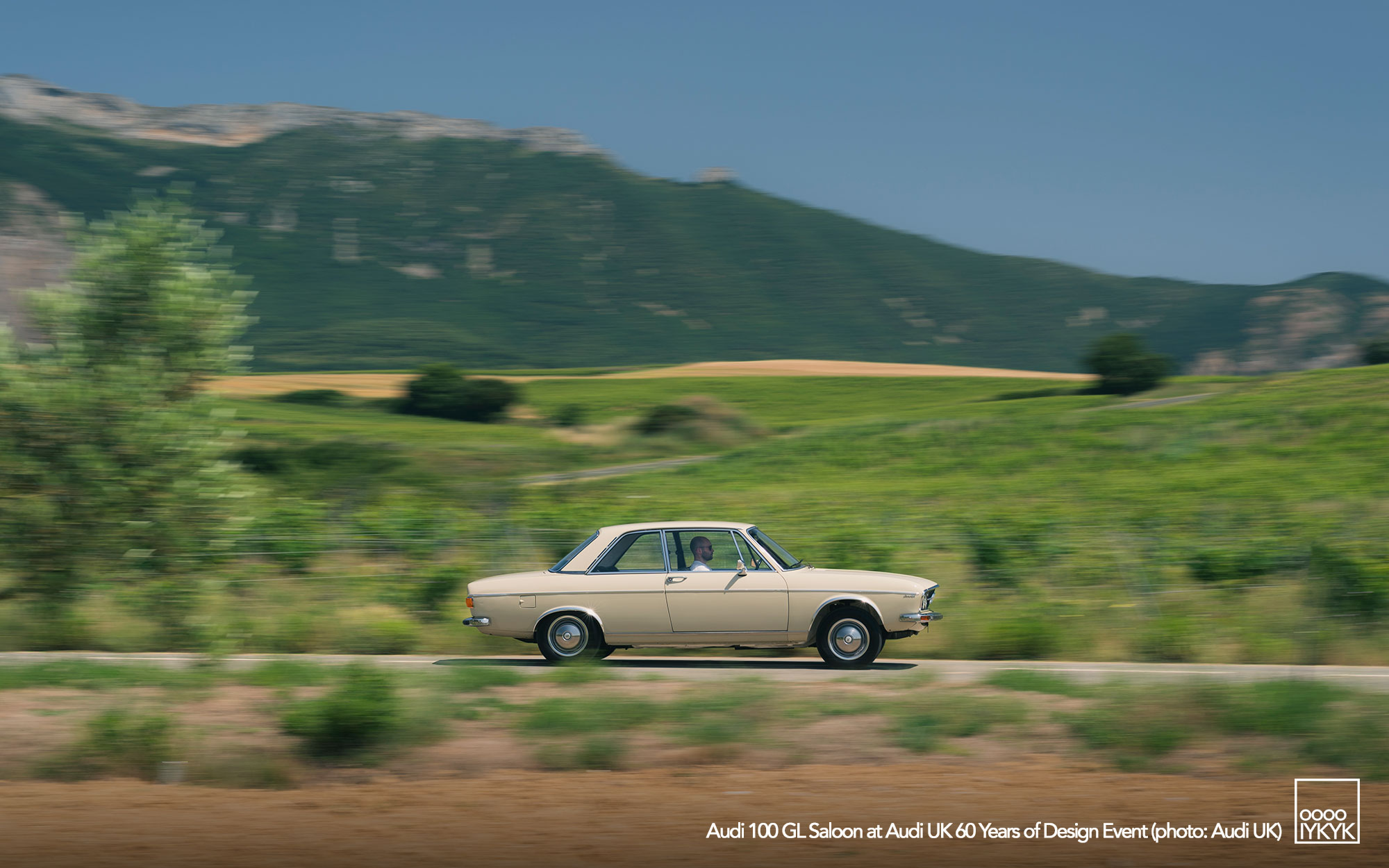
AUDI GETS SERIOUS, THE 100
At Auto Union though, the firm’s then Technical Director Ludwig Kraus had a grander vision for the four rings. In secret, Kraus began development of a new model that he later presented to Volkswagen management when they visited their Ingolstadt facility.
that car would later debut as the 1968 Audi 100, a model that would put Audi on the map and mark the first Audi to be produced under Volkswagen ownership. An example of this, specifically a 1972 100 GL, was another car on hand from the Audi UK heritage fleet.
That 100, also known as the C1, was pivotal in moving the postwar Audi brand in a more upmarket position.
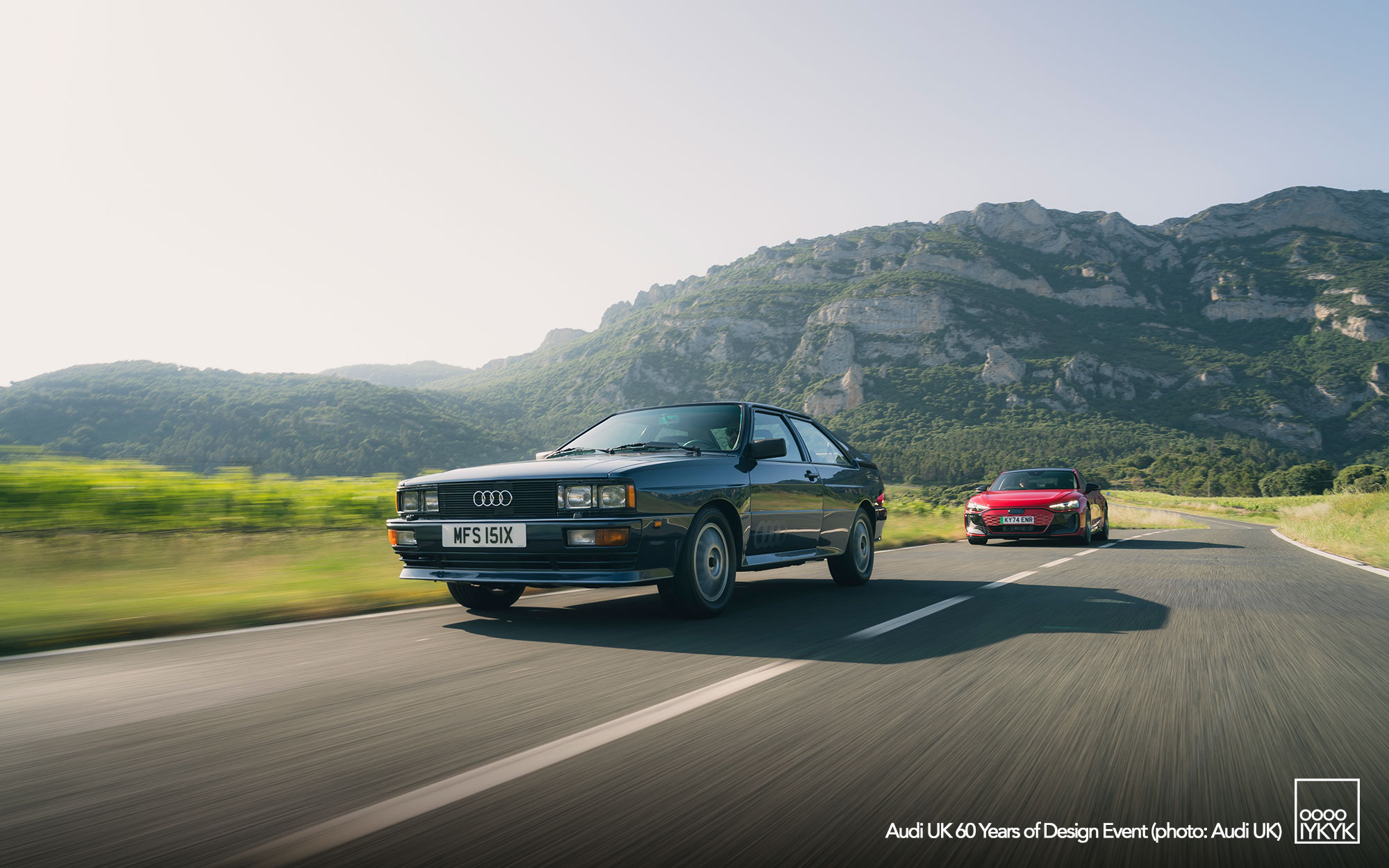
WE ALL KNOW WHAT COMES NEXT. QUATTRO
It would be the original quattro (a.k.a. “ur quattro”, that would revolutionize so many things – rallying, handling dynamics standards in the premium market, and of course the Audi brand itself. For Audi UK and its heritage fleet, this is embodied by an early 10-valve example with 2.1-liter 5-cylinder that was originally adopted from the Audi 200 Turbo and augmented with a KKK turbocharger.
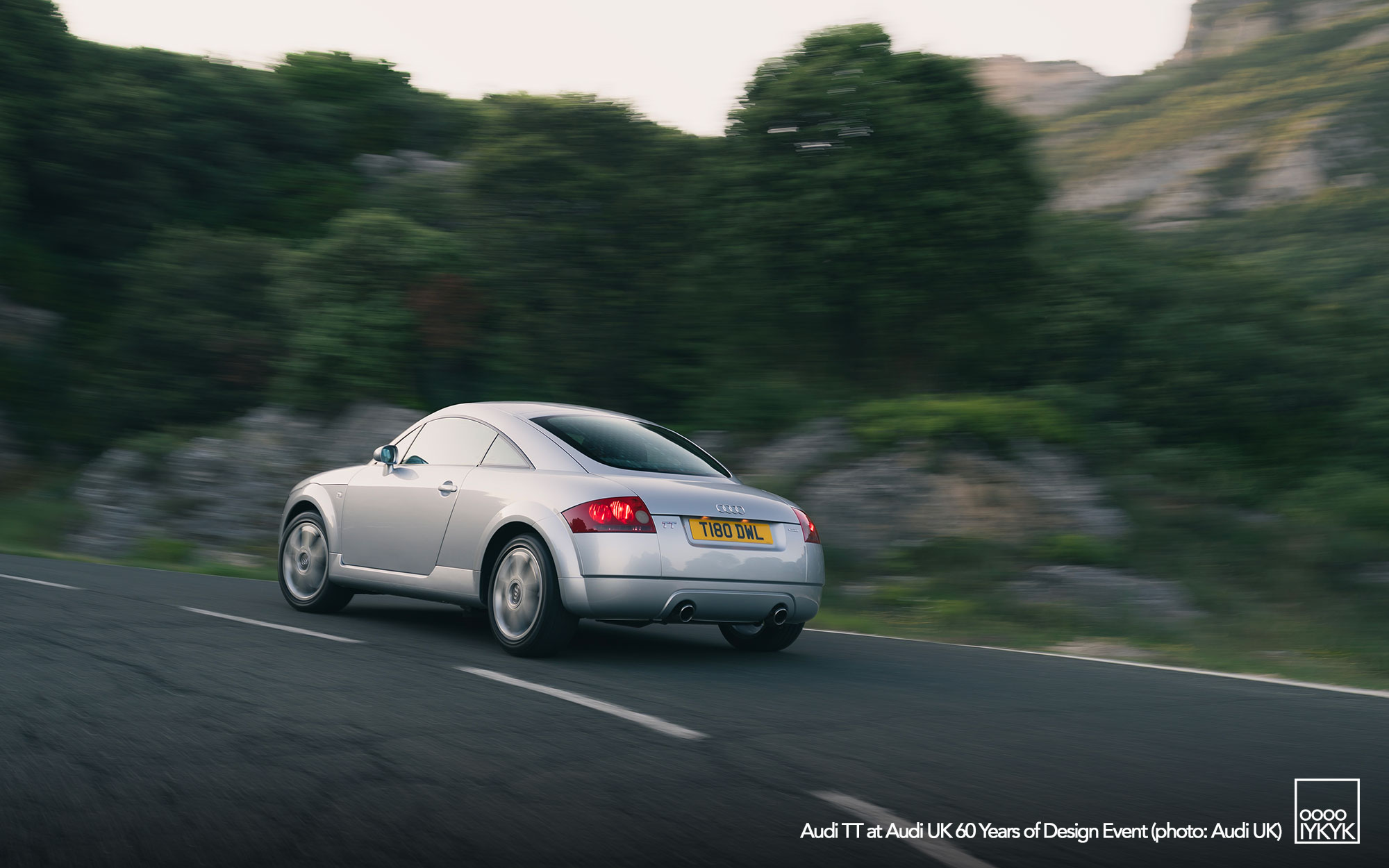
THE NEXT EVOLUTION. TT
For the purpose of this retrospective, the next step comes in at the creation of that first TT. That history begins in 1995 with the TT concept car with exterior designed by Freeman Thomas and interior by Romulus Rost.
By the mid-90s, the ur quattro had been retired and Audi sought a new evolution of the brand. That new direction would come with simple geometric lines underlining a Bauhaus-inspired avantgarde look that would heavily influence many Audi models across the range.
The car you see here from Audi UK’s fleet is an early example, most easily identified with its lack of rear spoiler. A spoiler would become standard very early in production as an effort to dial back oversteer inherent in the earliest cars, but that earlier spoiler-less design tends to be viewed as more pure a representation of the original.
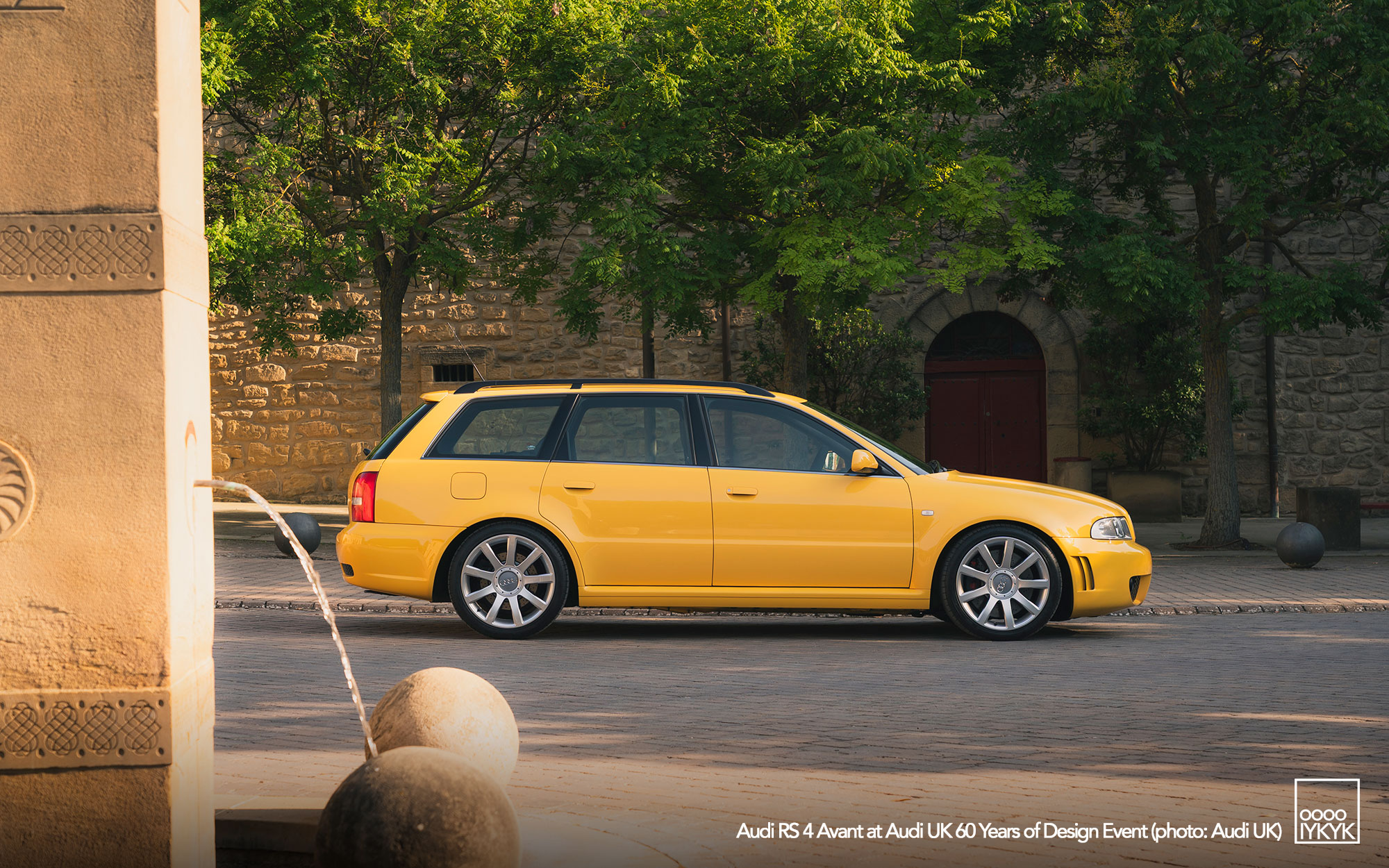
HAVING IT ALL. AUDI RS 4 AVANT
With the Audi TT launched into production, Audi returned to its focus to its everyday cars with the introduction of the RS 4 Avant. The brand had turned to Porsche in order to create a more extreme take on its understated S2 offerings, though with the new B5 era Ingolstadt knew they had something special and aimed to create something on their own.
Whereas the RS2 (no space in the name) was a Porsche creation, the RS 4 (now a space between letters and numbers) was a totally Audi affair. Here, Ingolstadt created their own performance design language by adding pronounced flares and aggressive fascias, along with wheels of Audi’s own design. And while Porsche had tuned and augmented Audi’s 5-cylinder turbo for duty in the RS2, Audi turned to then-Audi-owned Cosworth to breath more life from the firm’s B5-era 2.7-liter biturbo V6.
It’s safe to say the resulting estate car blew the minds of Audi enthusiasts of the time, proving the process to themselves and to the world that Audi could go it alone without the aid of Porsche.
When it comes to the UK heritage fleet, Audi UK has an interesting curiosity in their possession in the form of an Audi RS 4 Sport. Easily spotted thank to its Alcantara interior trim and Recaro Pole Position seats, this model never really made it to series production. A left-hand drive version resides at the Audi museum mobile in Ingolstadt, while this lone right-hand drive version belongs to Audi UK.
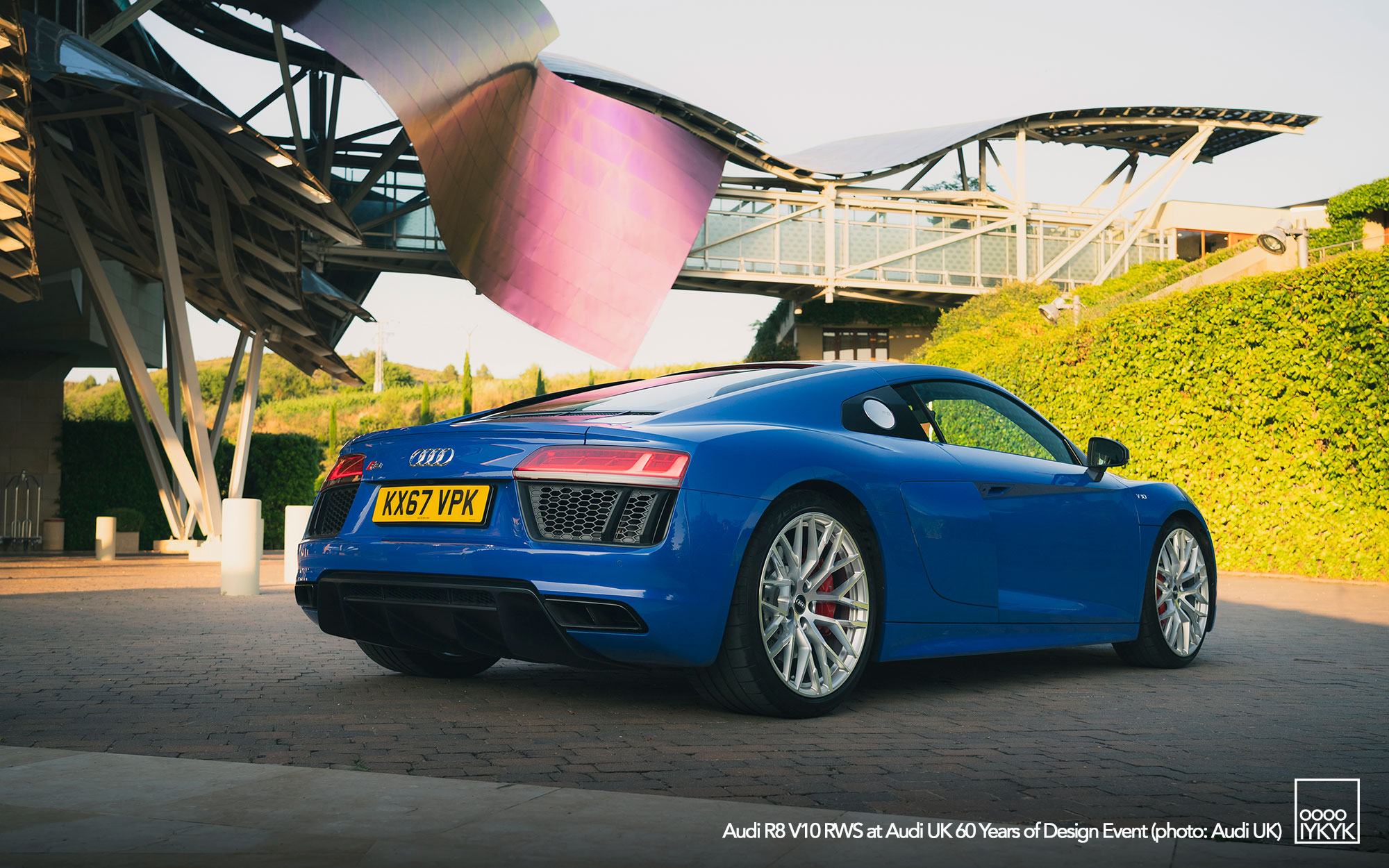
BORN FROM LE MANS. AUDI R8
And honestly, you can’t really talk about Audi design and production heritage without including the R8. Here, Audi UK brought out two examples – an early Mk1 with 4.2-liter V8 and later R8 V10 Rear Wheel Series (RWS) in stunning Nogaro Blue. Here again, both are from the Audi UK heritage fleet.
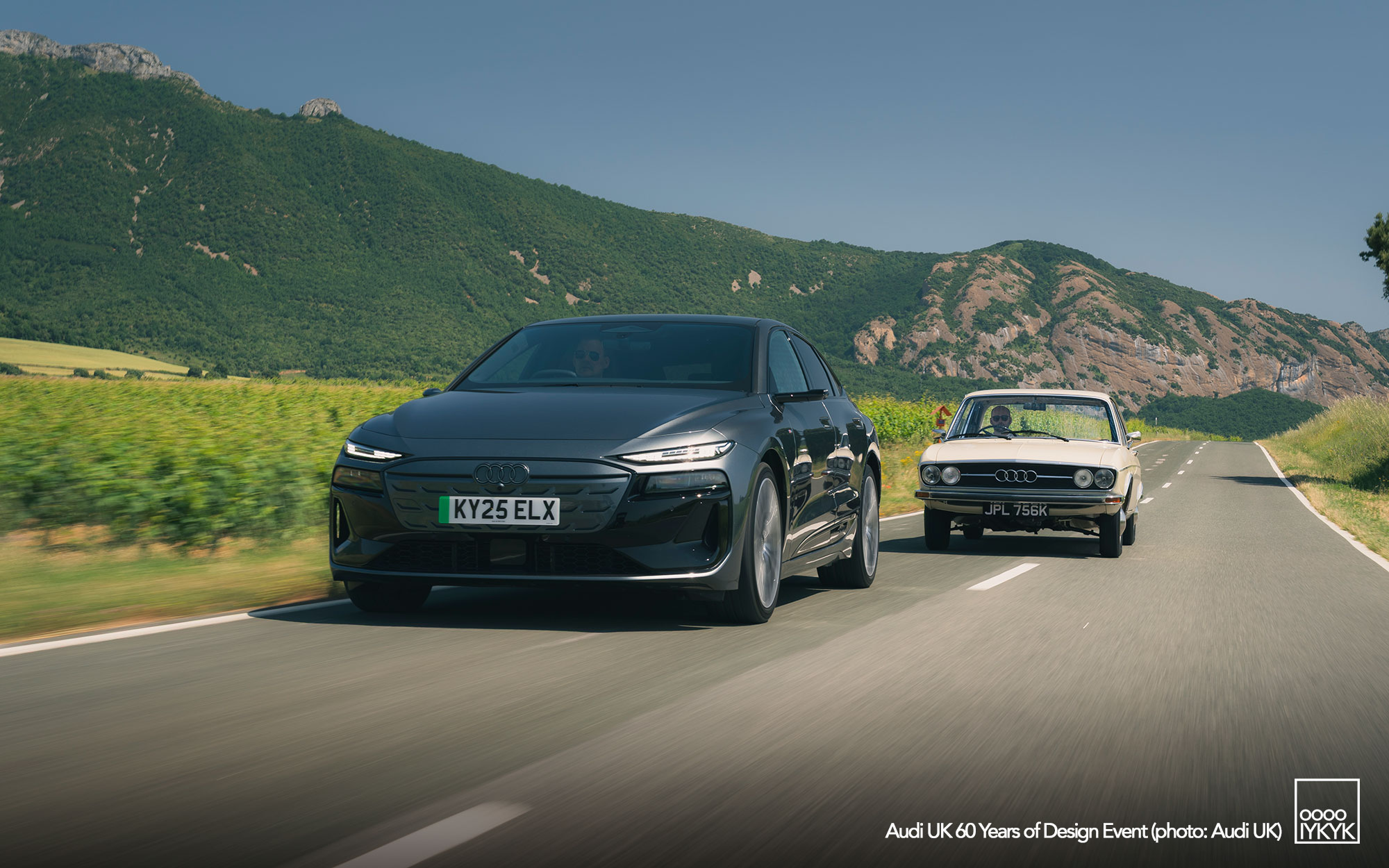
CARS OF TODAY AND TOMORROW. AUDI RS E-TRON GT & A6 SPORTBACK E-TRON
When it came to representing Audi models of today, it’s here Audi UK turned to the electric side of the current range. In today’s lineup, it’s the RS e-tron GT that offers some of the most extreme high-performance design within Audi’s current range, while it’s the A6 Sportback e-tron and its drag coefficient of just 0.21 that resets the bar for aerodynamic efficiency – another long-held Audi tradition.
PHOTO GALLERY
